al-Rasafeh الرصافة
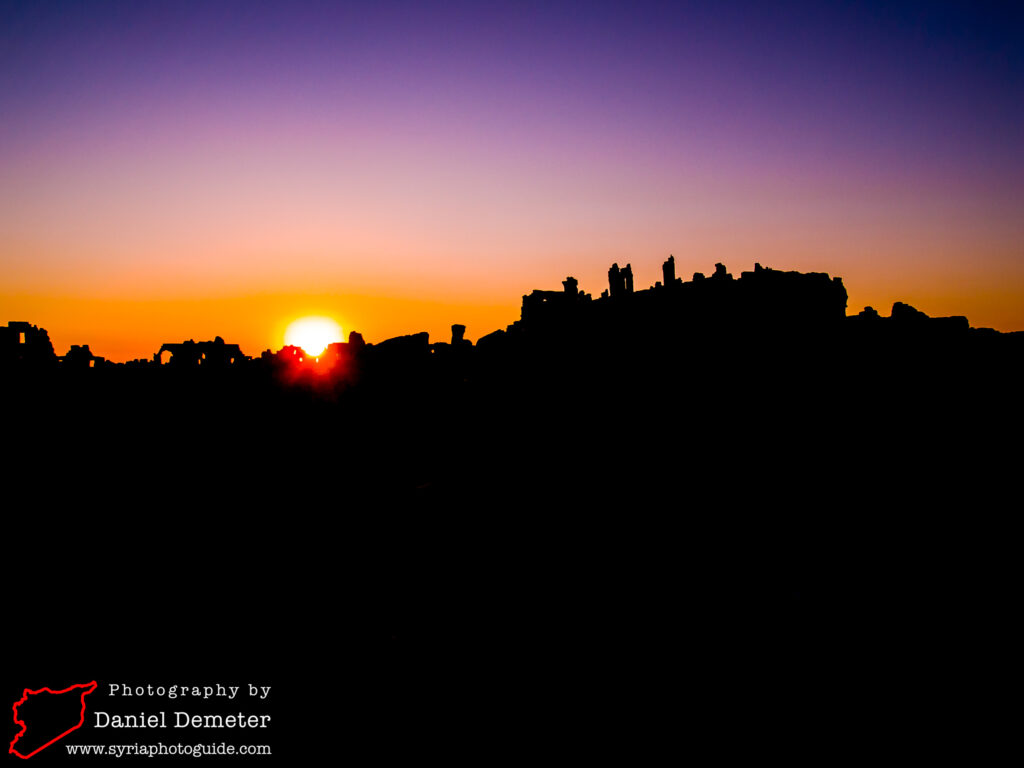
The ruined Byzantine city of Sergiopolis, known today as al-Rasafeh (الرصافة), is one of the most spectacular historic sites in eastern Syria and bound to impress just about anyone who visits. Few tourists reach this remote place, which makes the journey all that much more rewarding: you might very well have the entire site to yourself. The remains are massive in scale and stunning in detail, including numerous and beautiful churches, palaces, huge underground cisterns, and defensive fortification walls and towers. The city is located in a bare and inhospitable plain, and it is fascinating that such a monumental project was undertaken in such a bleak place. The entire city was constructed from a local gypsum stone which provides an incredible effect.
While most of the remains visible today date from the Byzantine period, the history of al-Rasafeh (الرصافة) goes back much further. al-Rasafeh (الرصافة) was mentioned both in Assyrian texts as well as in the Bible (as Receph). The Roman emperor Diocletian (who ruled from 284-305) established a frontier fortress here after Dura Europos (دورا آوروبس), further down the Euphrates, fell to the Sassanians. A Roman road, named after the emperor, connected al-Rasafeh (الرصافة) with al-Sura to the north and Palmyra to the south, continuing on to al-Dumeir (الضمير) and Damascus (دمشق).
Under Byzantine rule, the original settlement of Resapha took on new importance with the growth of the cult of St. Sergius. A Roman soldier serving as a court official, Sergius was martyred here during Diocletian’s persecution of Christians in 305 after refusing to sacrifice to Jupiter. His cult attracted followers from throughout the region. Whether to help handle the crowds and their needs, or to service the military garrison which was stationed there, the town’s amenities were considerably expanded under the Byzantine Emperor Anastasius I, who ruled from 491 to 518. The city was officially renamed Sergiopolis in honor of its patron saint. A large basilica was constructed, and cisterns and ramparts provided.
The sixth century brought a new and more persistent Persian threat. The town became a focal point of Justinian’s great program of military works in Syria towards the end of his reign. Around the same time of his rebuilding of the great fortress of Halabiyeh, the walls of al-Rasafeh (الرصافة) were reconstructed on an ambitious scale. Stone replaced mud-brick and advanced military architecture was introduced, including galleries to allow movement within from strong-point to strong-point. What began as a pilgrimage town dedicated to the memory of a former soldier took on a much more heavily military character, reflecting the frontier nature of the Christian presence in this area in the latter days of Byzantine control.
The policy of forward defense was, however, only partially successful. The Persians penetrated these defenses on several occasions in the sixth century (reaching as far as Antioch in 540). Sergiopolis held out against the Persian raids but with great difficulty, notably during the campaigns of Chosroes I. Later it succumbed to the greater Persian campaigns of the early seventh century and was sacked by Chosroes II in his campaign of 616 which did so much to fatally weaken Byzantine control over Syria, making it incredibly vulnerable to the Arab invasion two decades later.
Under the Umayyad empire, al-Rasafeh (الرصافة) was for a time favored by Caliph Hisham (ruled from 724-743), who restored its facilities and built a palace. After the Abbasid conquest in 750 it suffered the vengeance of the new regime’s troops, who destroyed Hisham’s tomb in the city. Further damage was done by a serious earthquake at the end of the eighth century. It continued to support a small population, including a sizable proportion of Christians, into the 13th century. It was then depopulated by Baibars (ruled from 1260-1277), who sent the remaining inhabitants to Hama. By the time the Mongols laid waste to northern Syria on several expeditions in the 13th and 14th centuries, there wasn’t much left.
The city is laid out in a huge rectangle, approximately 550 meters by 400 meters. The main entrance to the city was through the monumental northern gate, which has been described as one of the most beautiful and well-preserved products of Byzantine architecture. The city walls include an impressive number of fifty round and square towers. The walls along the north side are the best preserved and little remains of the gates which gave entry on the other three sides. The total length of the walls is almost two kilometers. Inside the city, only a fraction of the surface has been excavated, and certainly a large amount remains to be discovered. Little has been touched since the Mongols last left, and the desert sands have slowly crept over the site, protecting what remains.
The first large building approached from the northern gate is a large centralized church, constructed using a circle-within-a-square design that was common in the first half of the sixth century. It is impressive in both scale and detail, surviving in reasonable condition, particularly the apse and rear of the building. It is thought to have served mostly the local population, rather than those visiting the city on pilgrimage. Continuing south are the remains of a market, and a bit further on the massive underground cisterns which were the city’s water supply. The largest of these three cisterns is almost 58 meters long and 21.5 meters wide. The depth of the water was 13 meters, providing an overall capacity 15,000 cubic meters. Such an enormous storage capacity was required, as al-Rasafeh (الرصافة) had no permanent water supply, only receiving run-off from the mountains to the south channeled by aqueducts.
East of this are the remains of a three-aisled basilica, probably from the late fifth century, which served early pilgrimage traffic. It was possibly the original burial place of St. Sergius. Continuing further east is the most prominent building at the site, the Basilica of the Holy Cross (sometimes referred to as the Basilica of St. Sergius). This massive church was the focal point of religious pilgrimage in the last decades of the Byzantine period. The inner walls have been partly reconstructed giving a good impression of its scale and grandeur. The basic plan is basilica-shaped, with two side aisles separated from the central nave by three enormous semi-circular arches resting on cross-shaped piers. The building was dedicated in 559. In the atrium to the north of the church, German researchers discovered a small treasury of superbly crafted religious vessels, apparently buried just before a Mongol invasion. They are now in the National Museum in Damascus.
There are remains of other small churches found to the north, and outside the city walls a small palace of the Ghassanid period. Built sometime between 560 and 581, it recalls the alliance in the sixth century between the Byzantine imperial power and the Christianized Arab tribe, the Ghassanids. On behalf of Byzantium, they kept control of the central Syrian desert tribes.
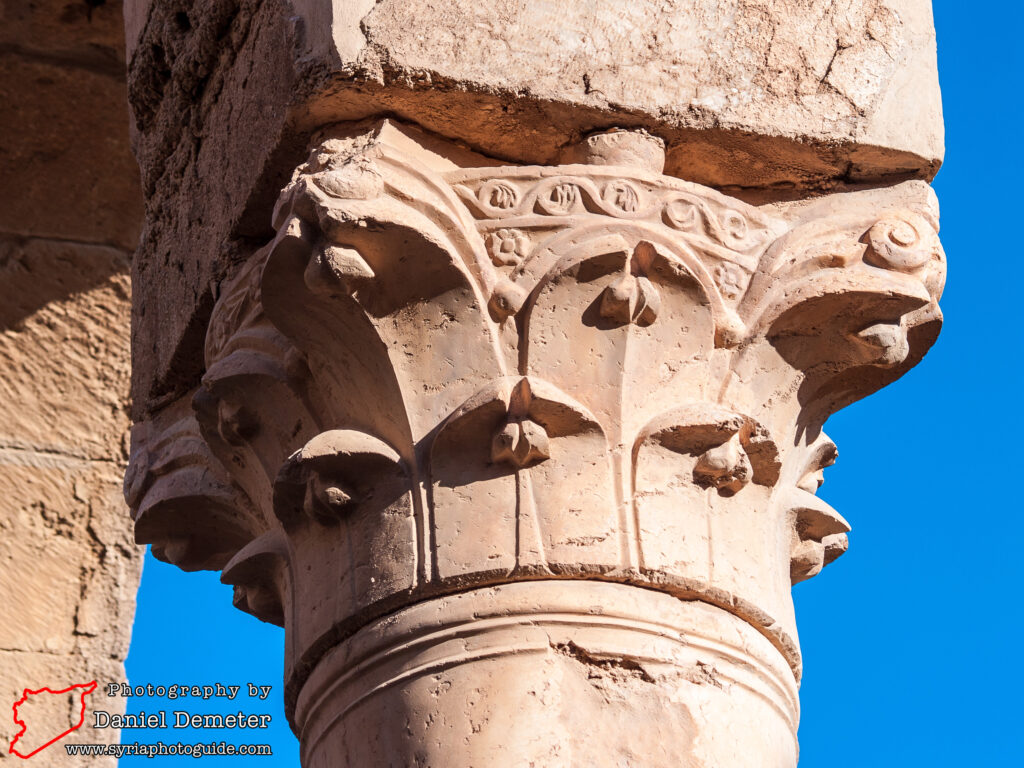

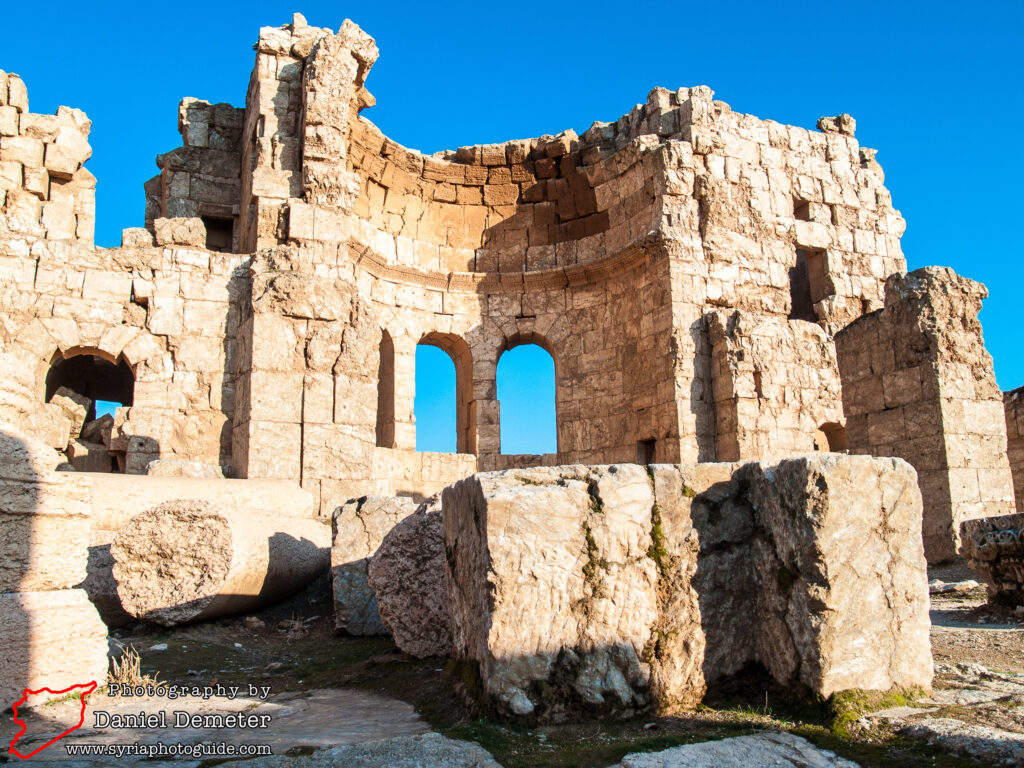
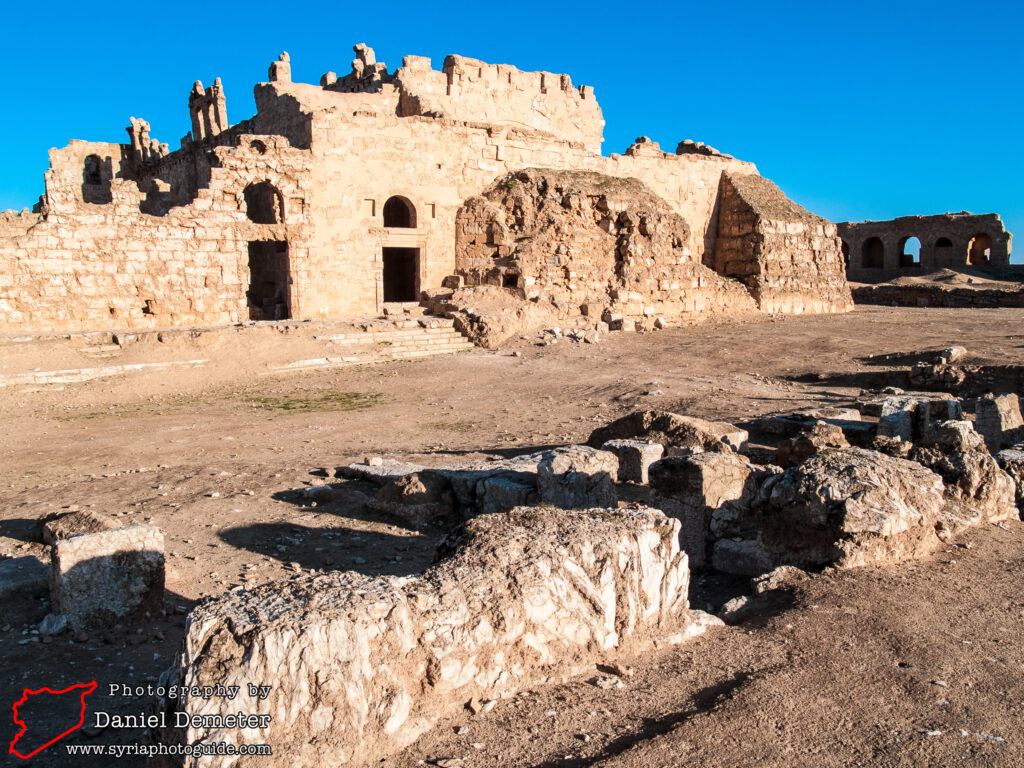
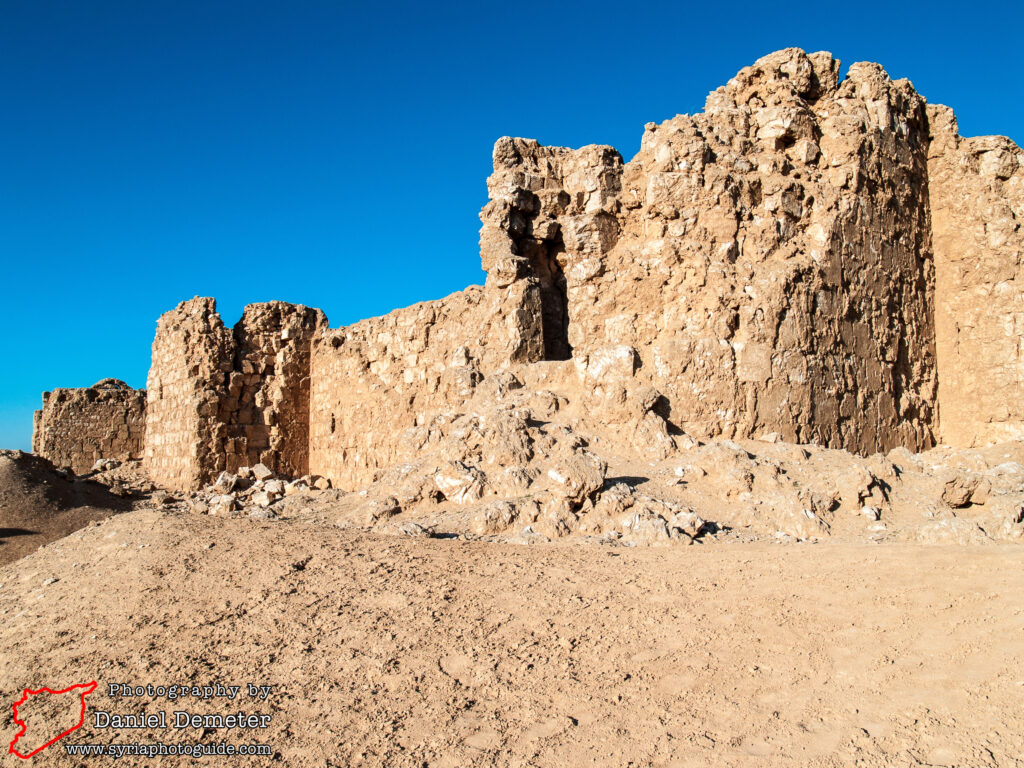
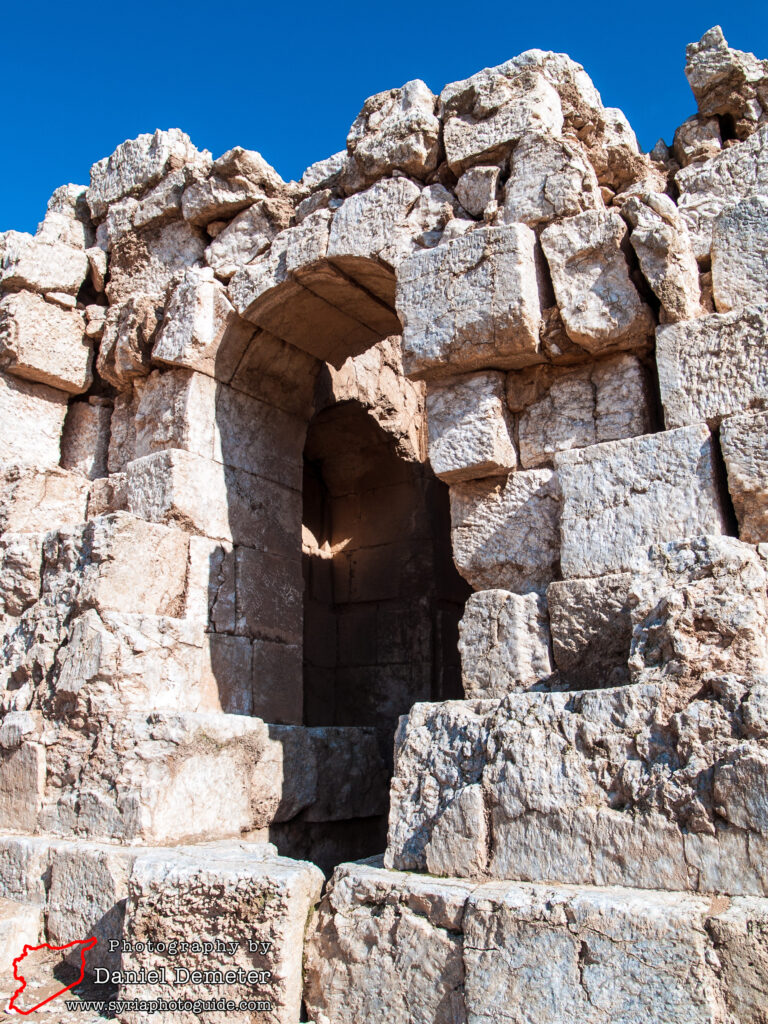
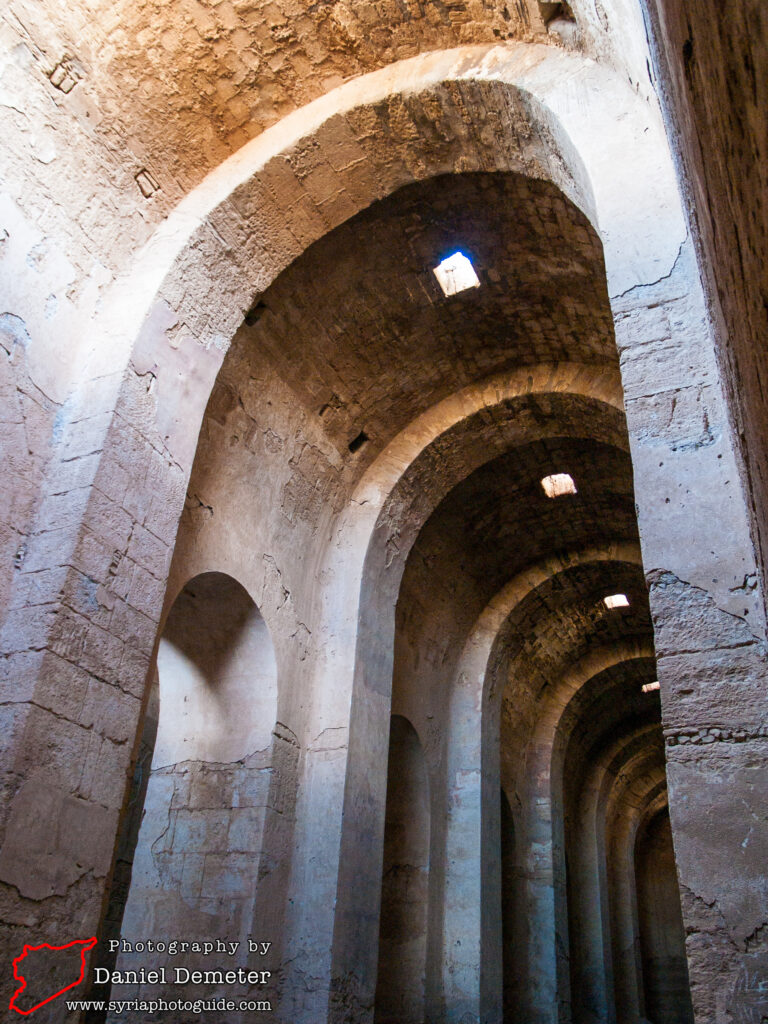
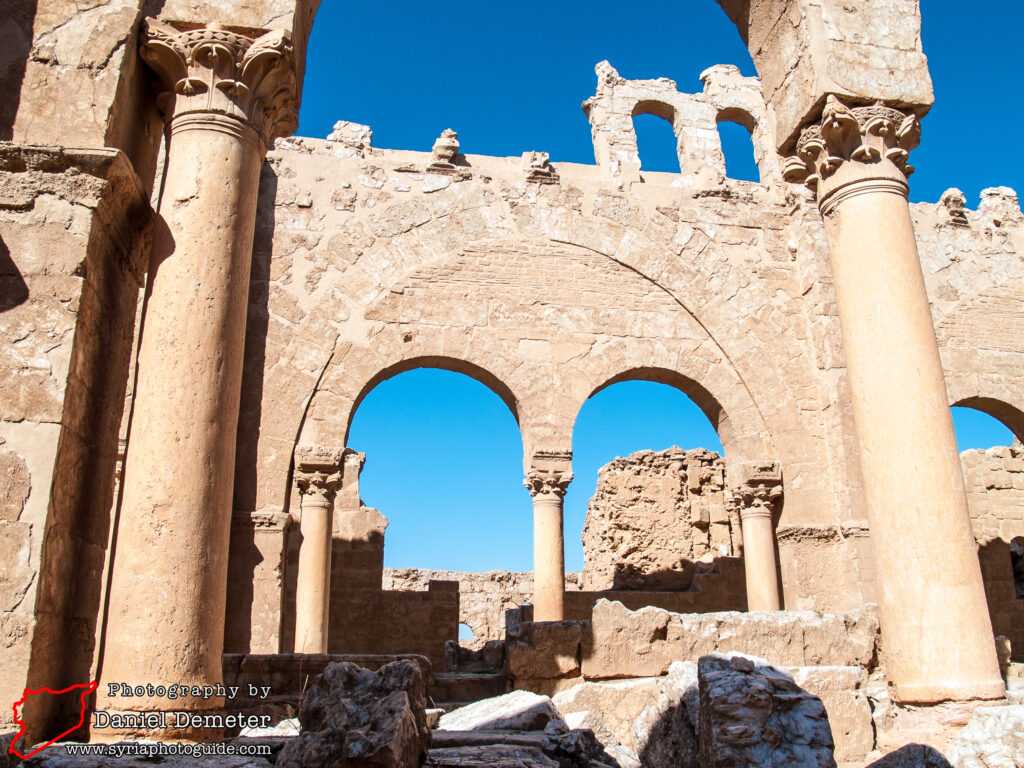
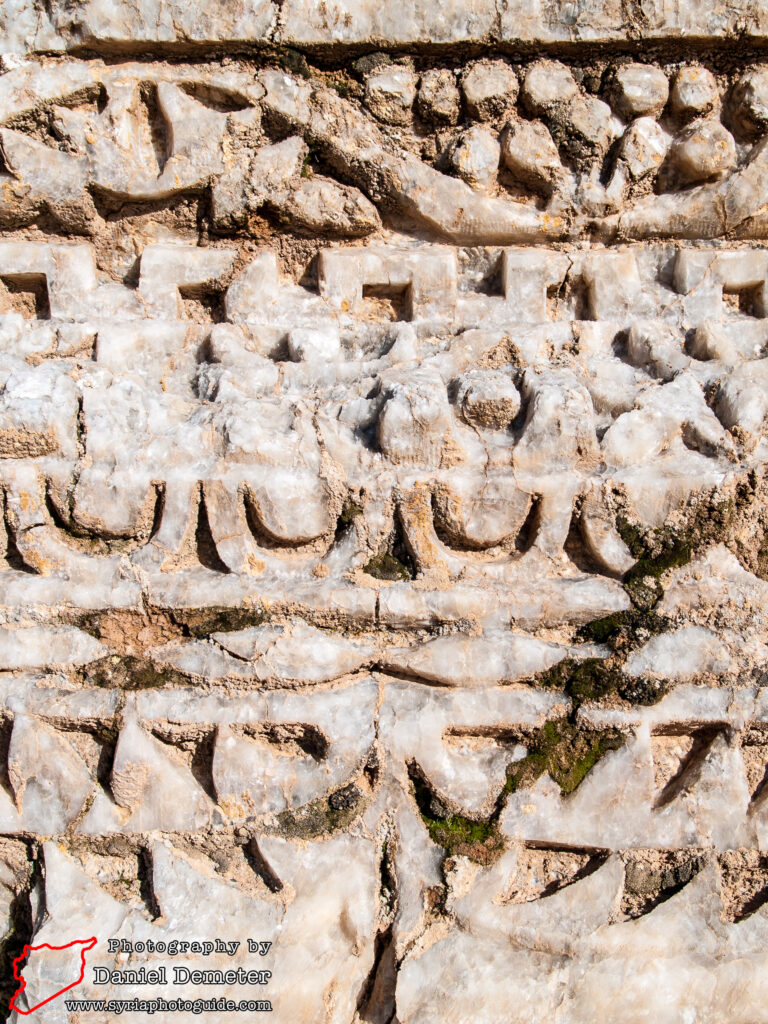
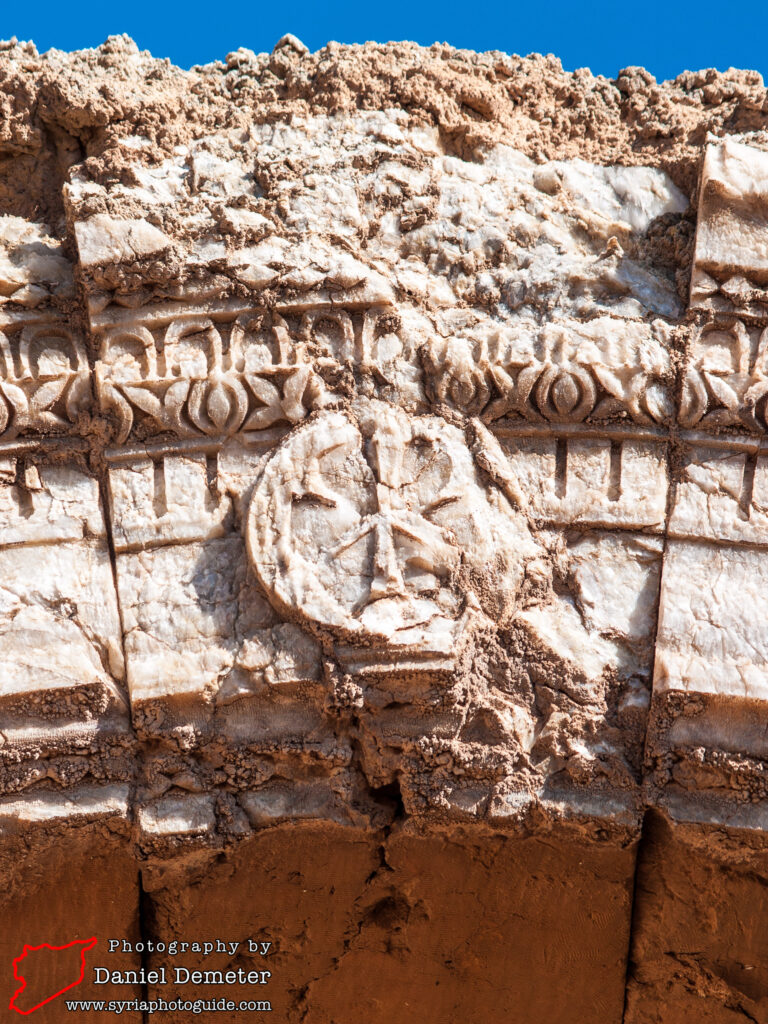
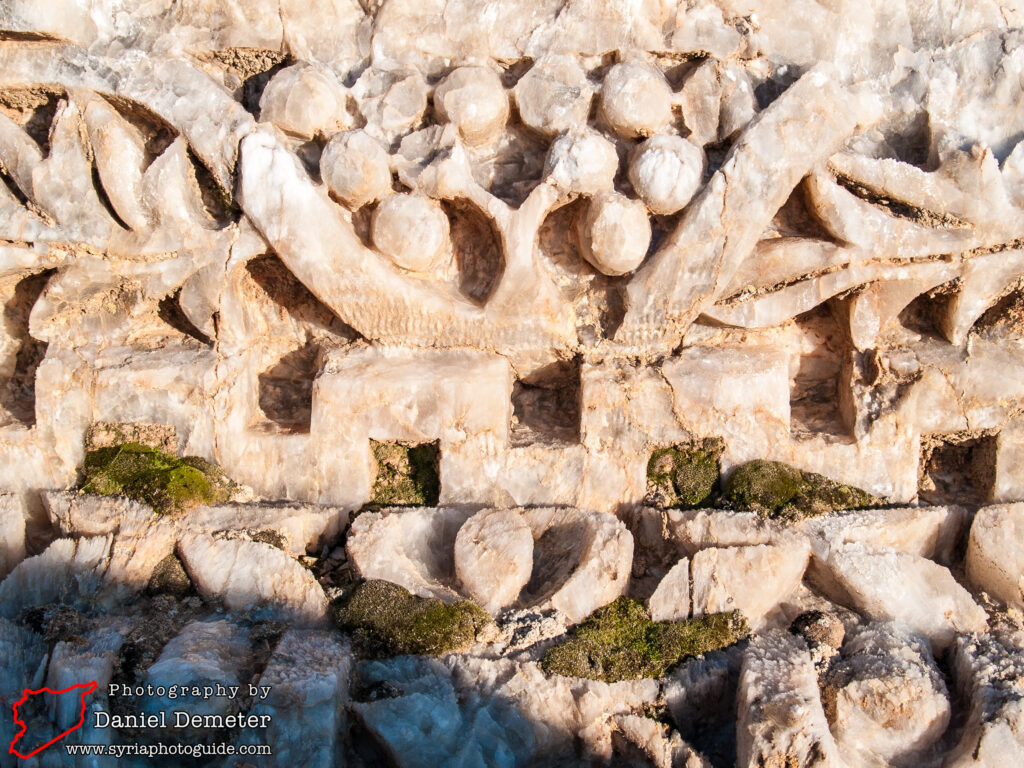
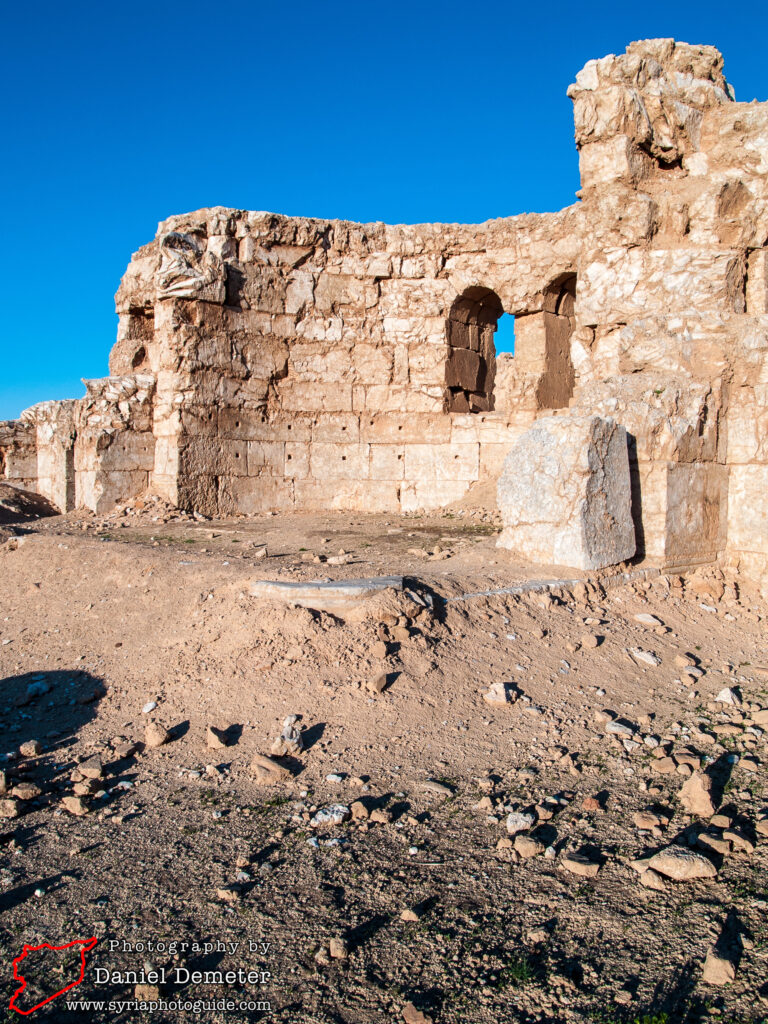
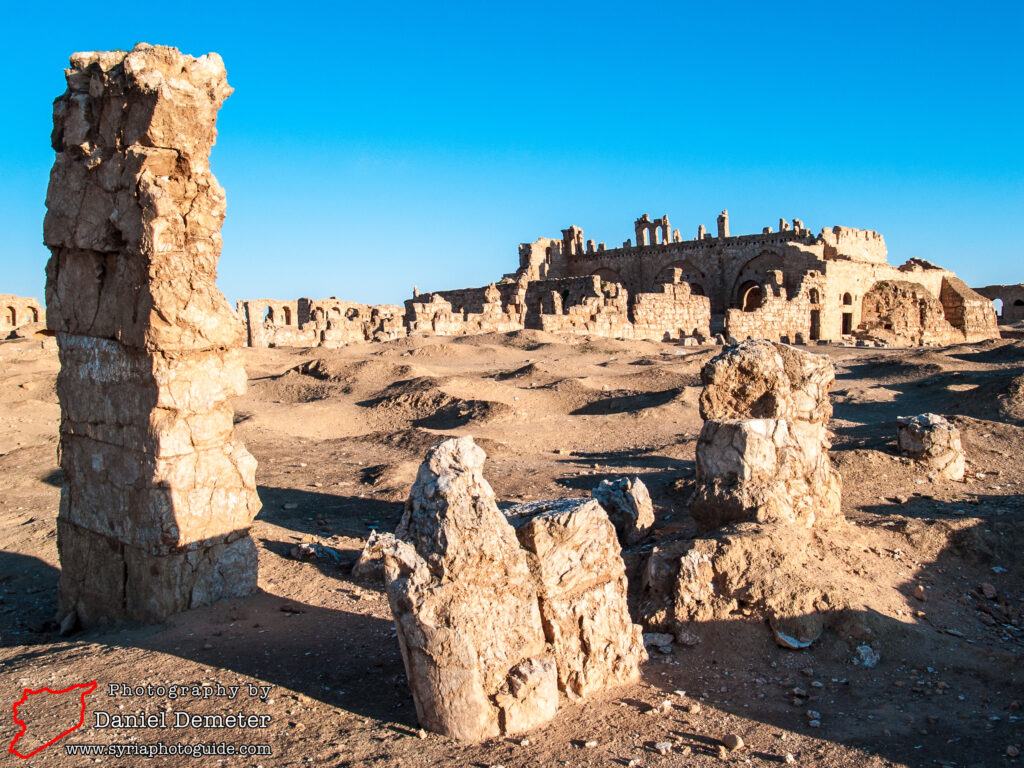
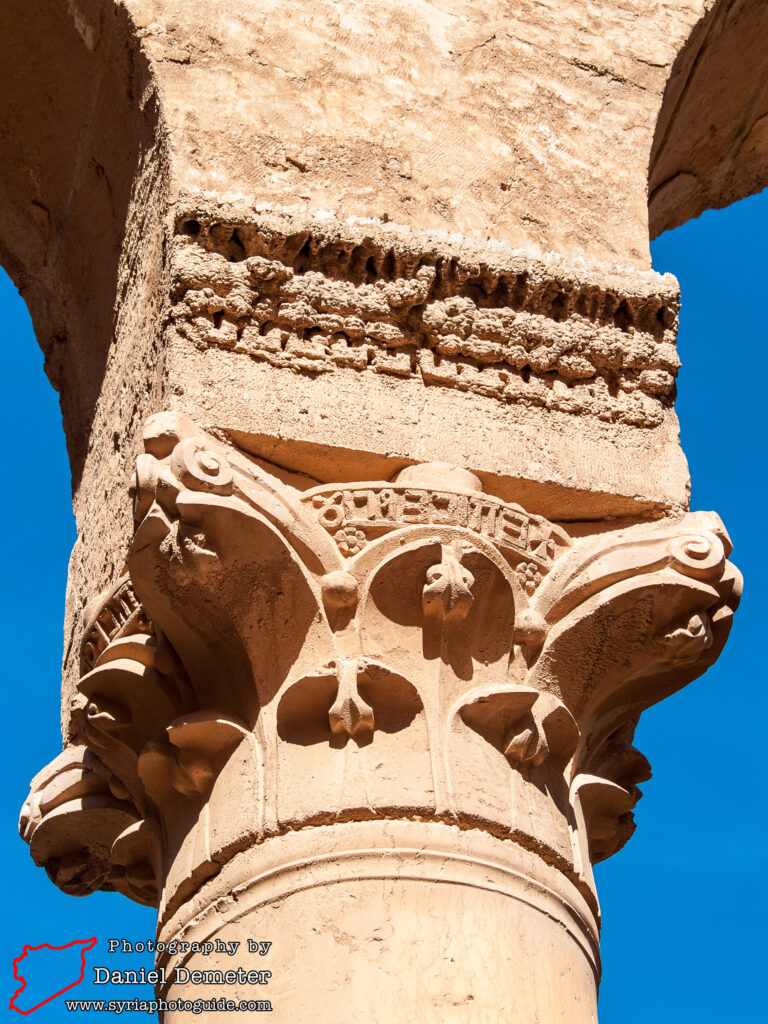
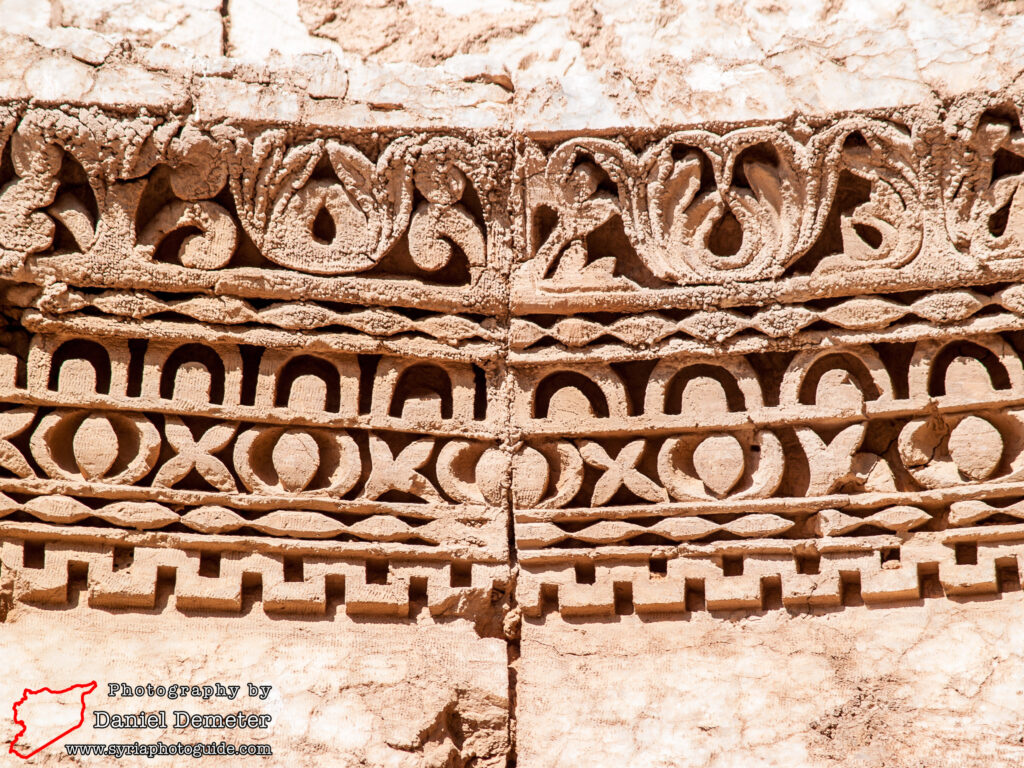
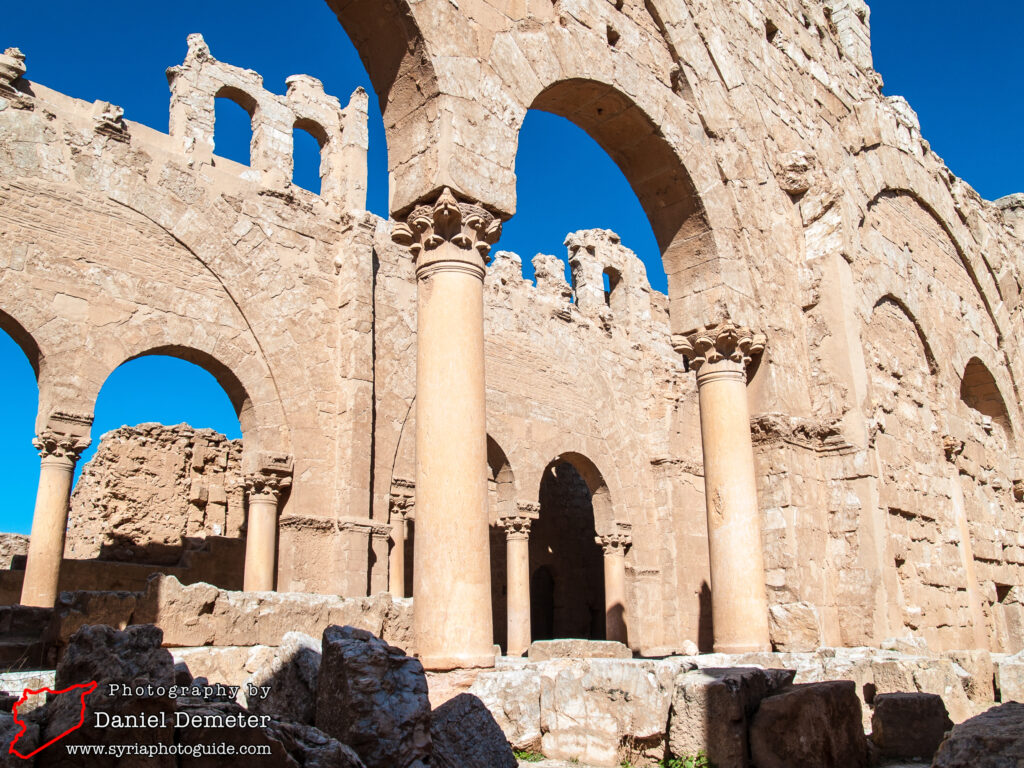
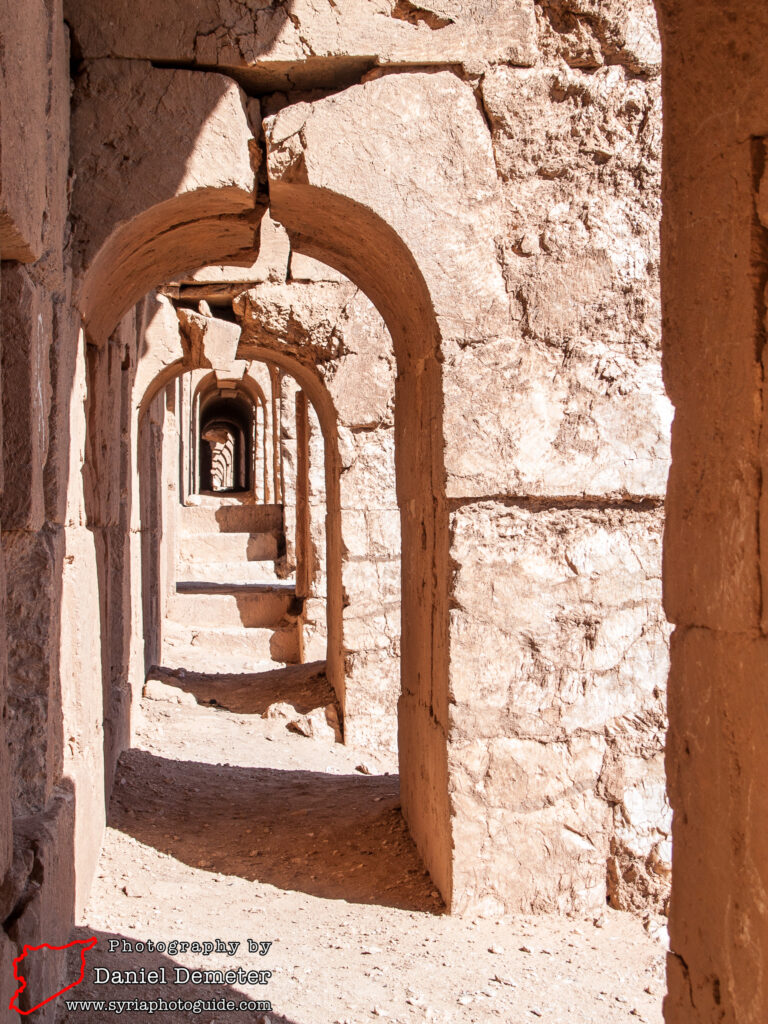
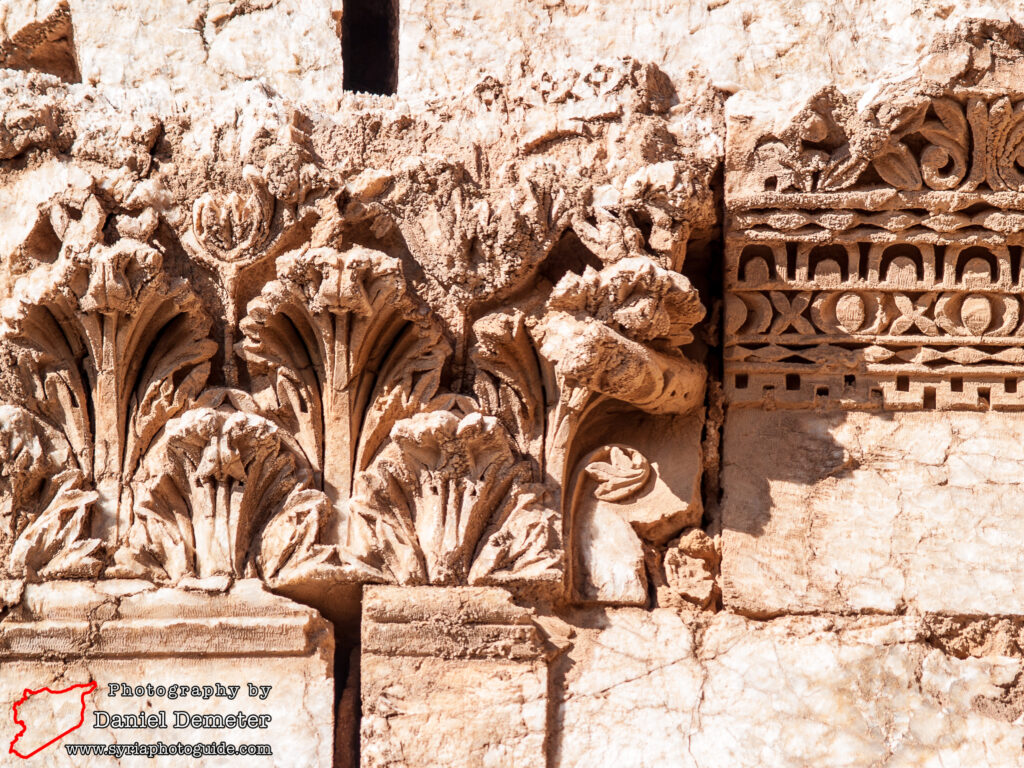
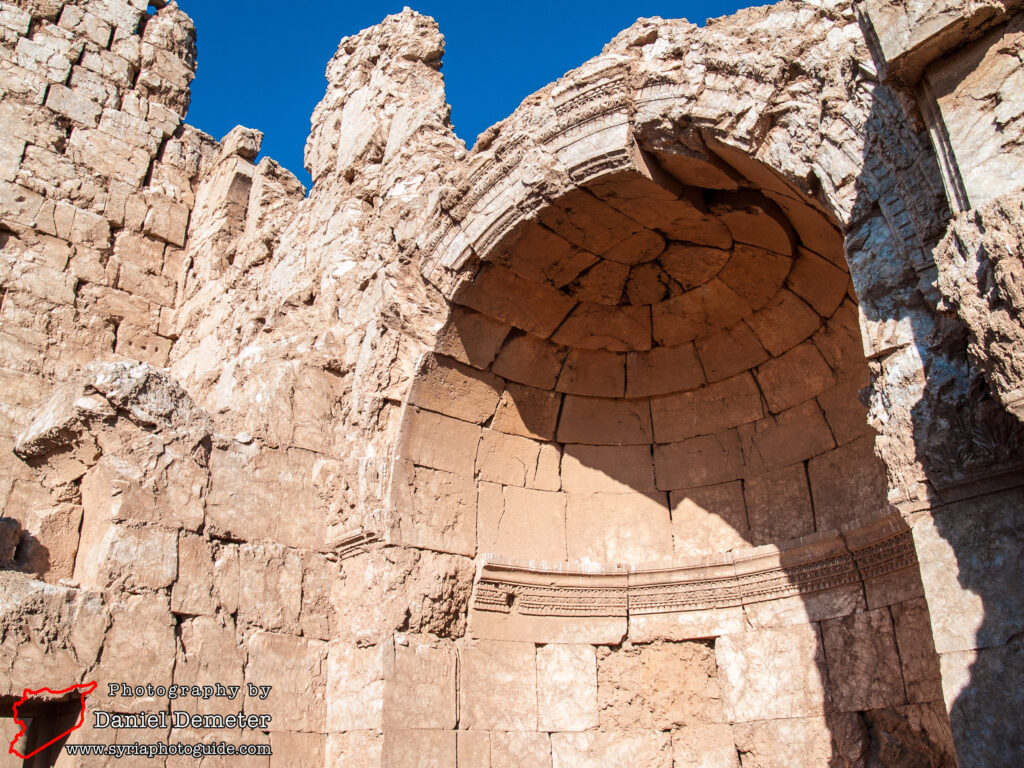

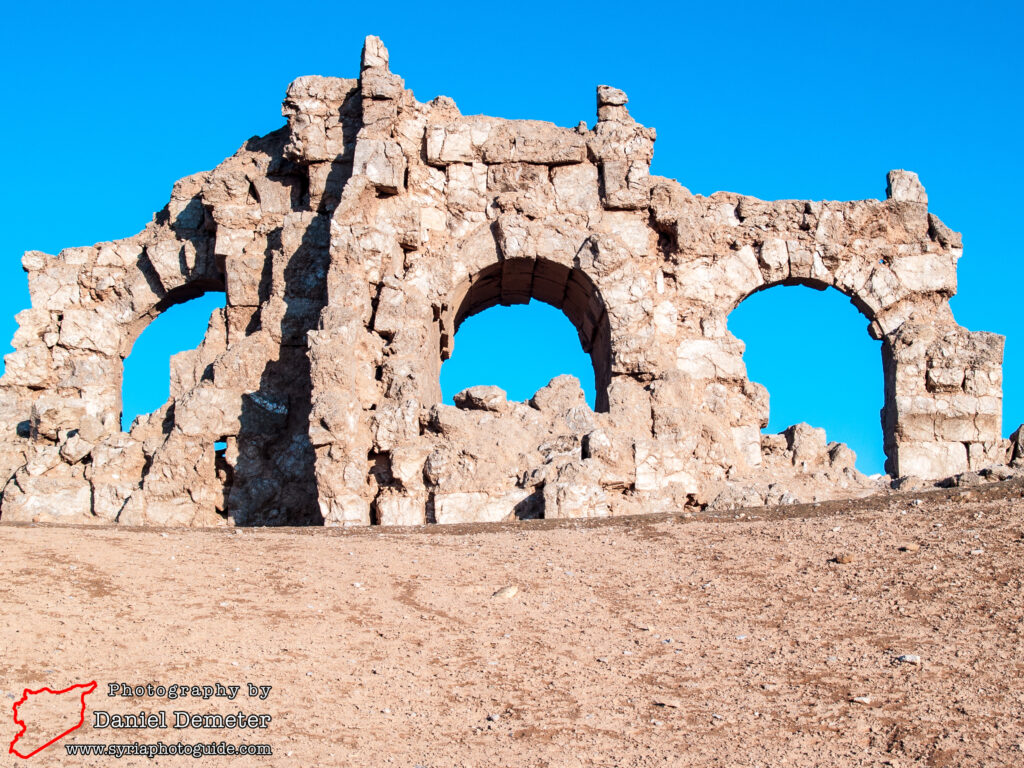
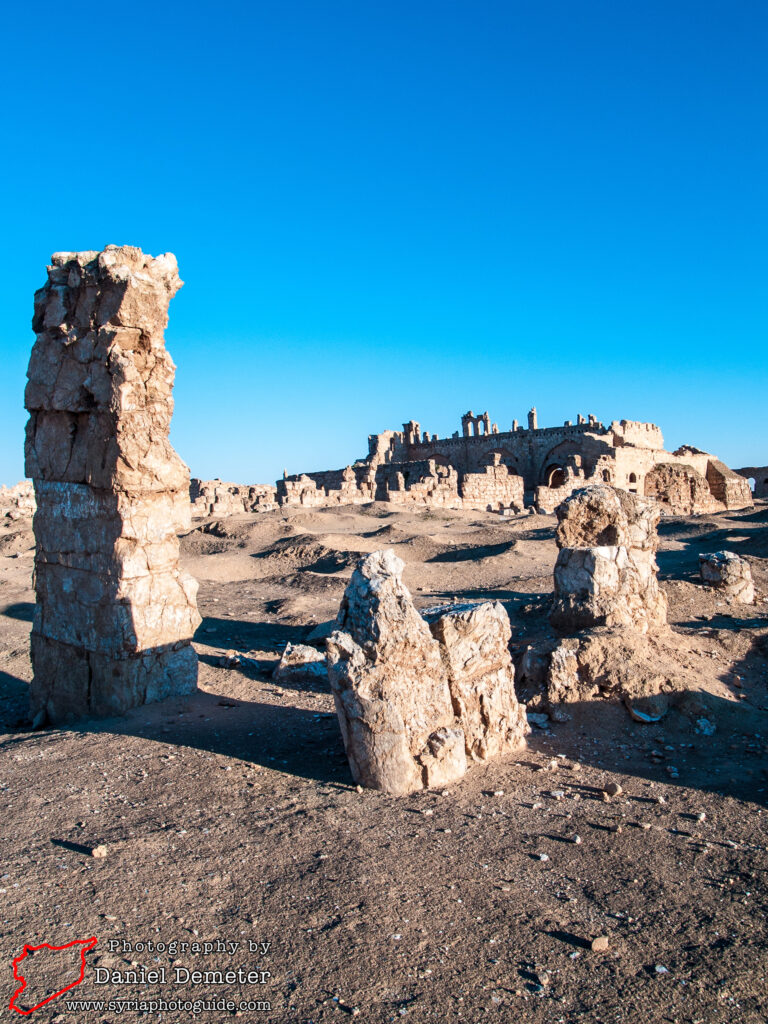
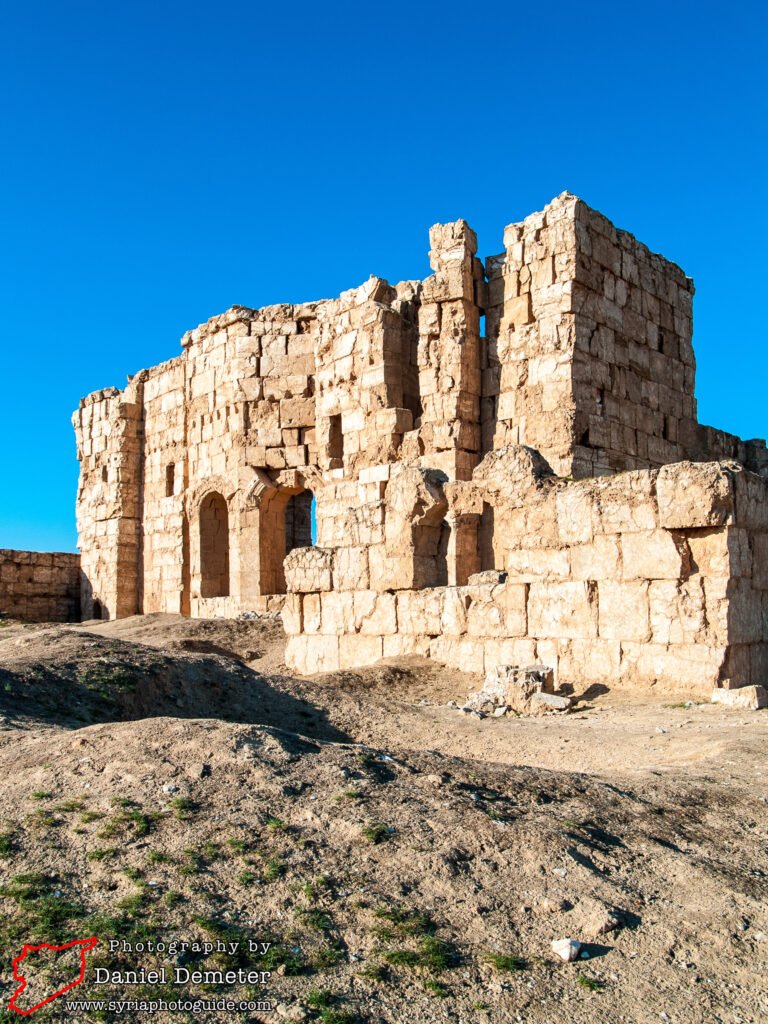
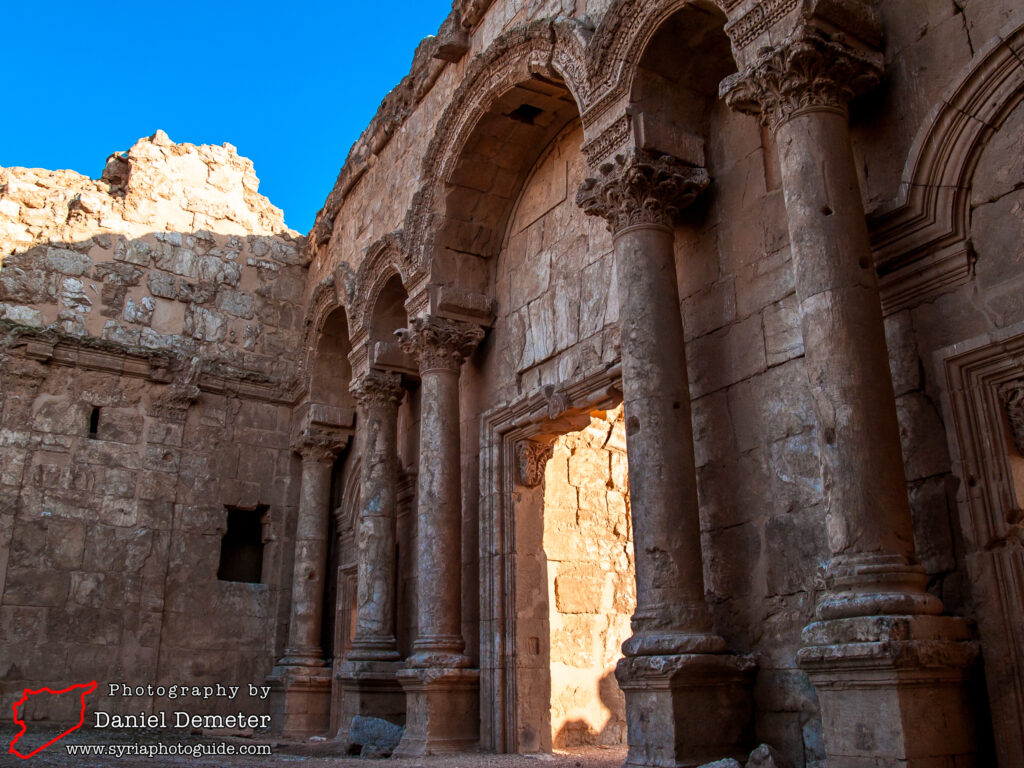
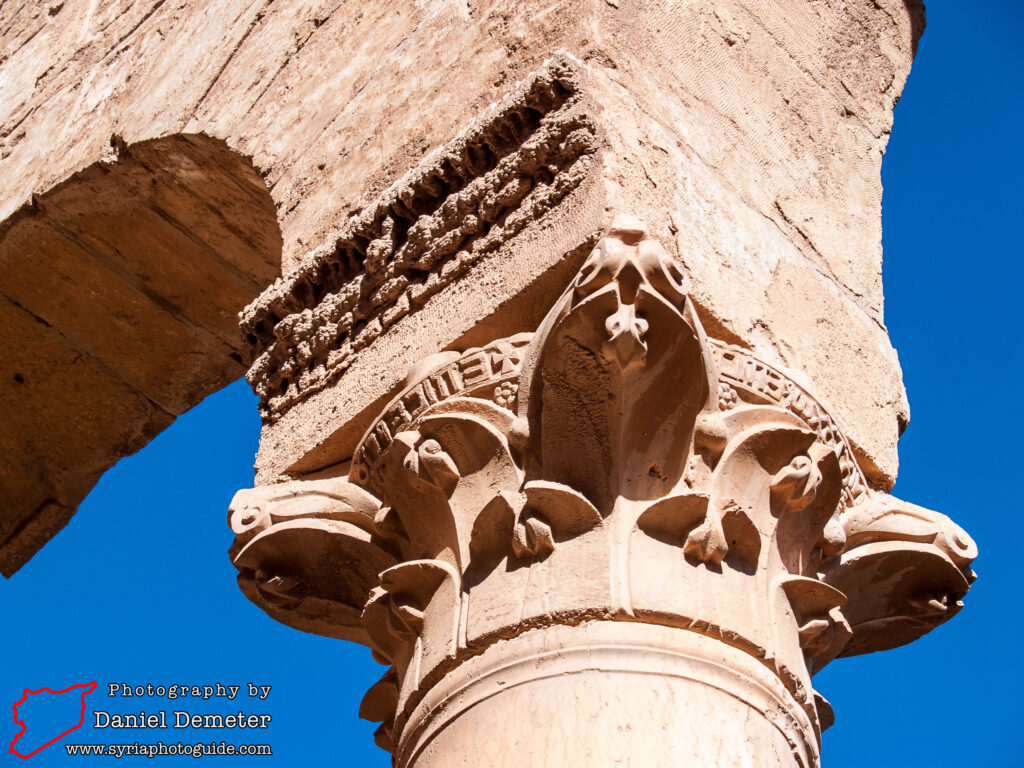
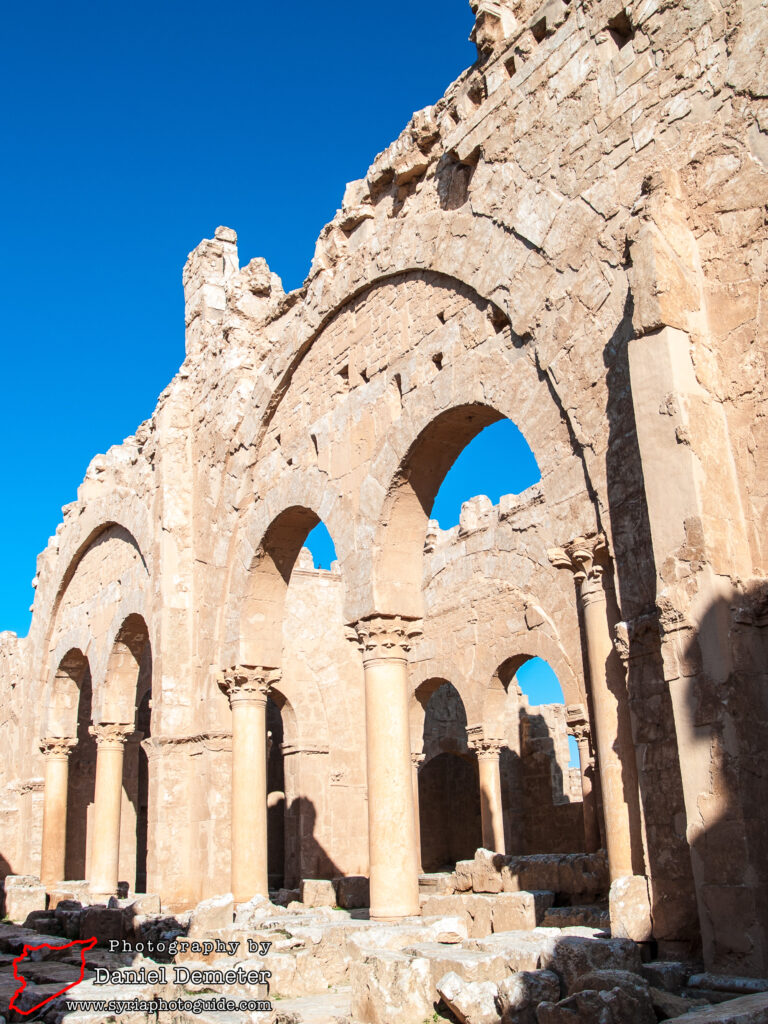
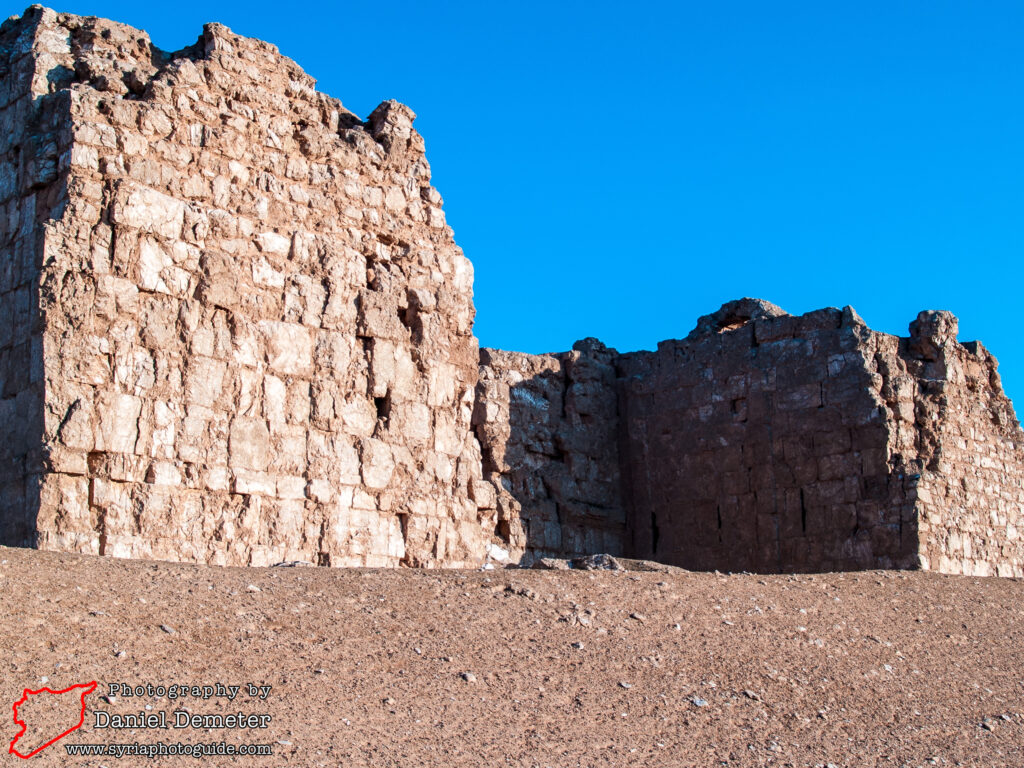
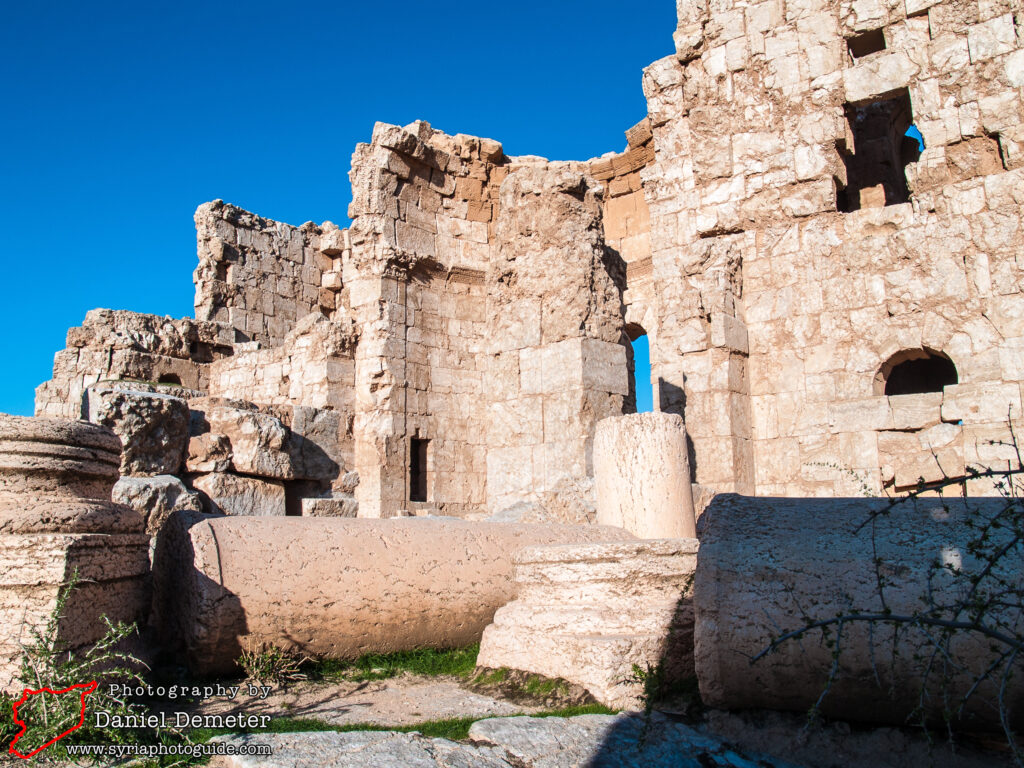
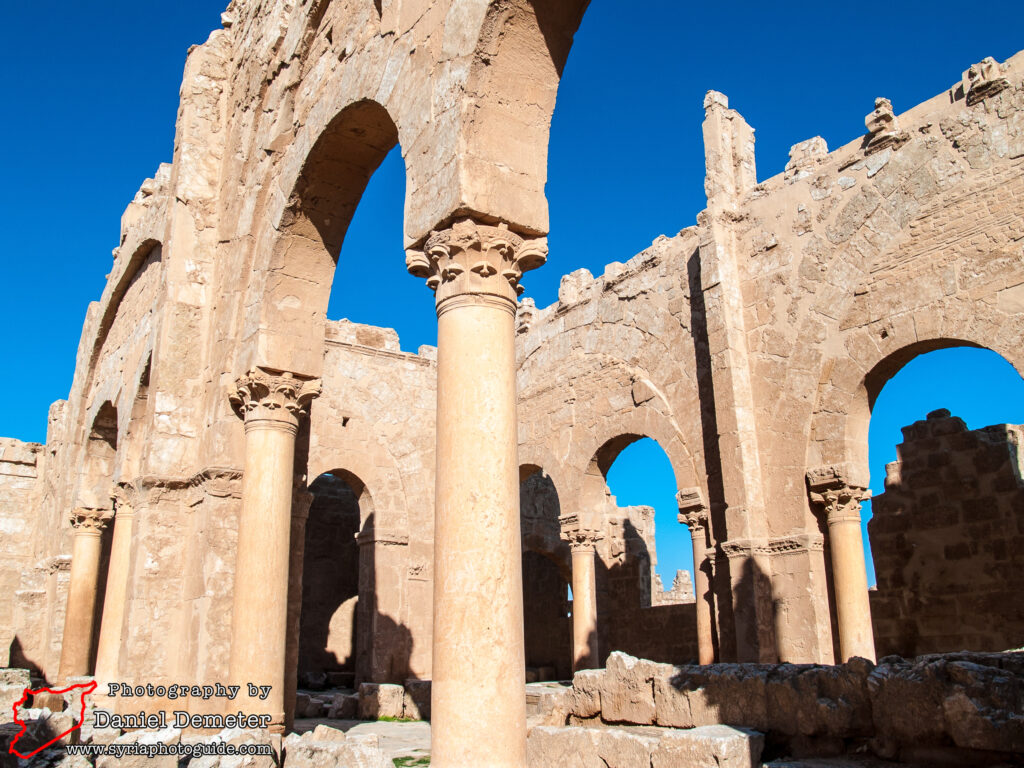
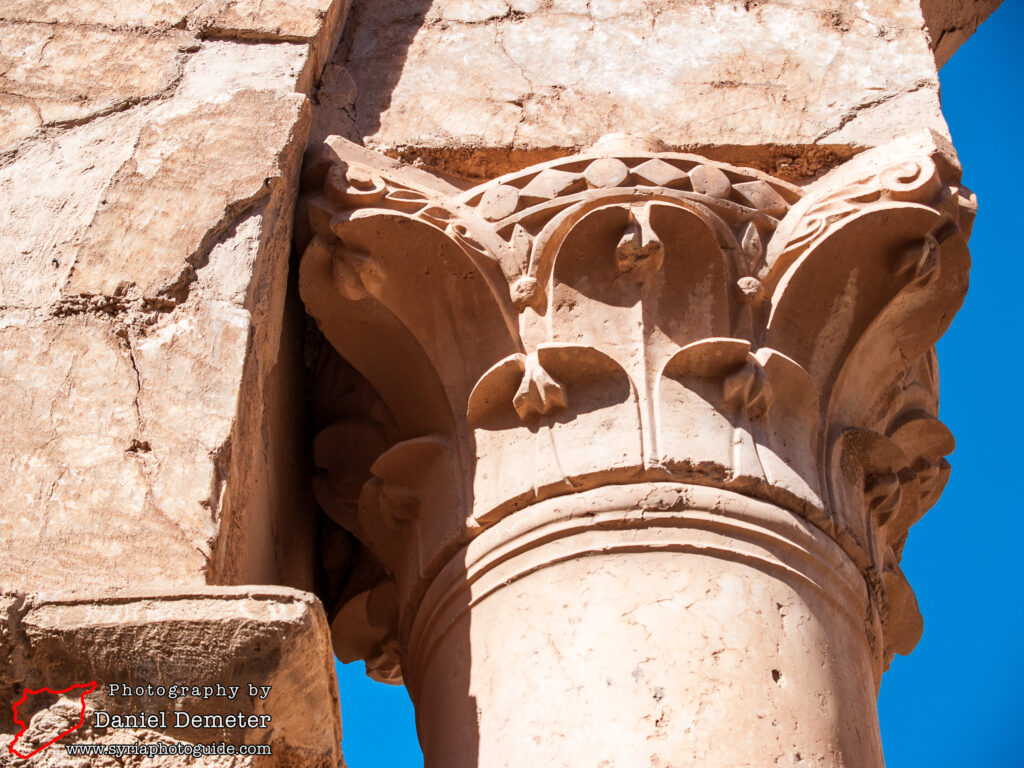
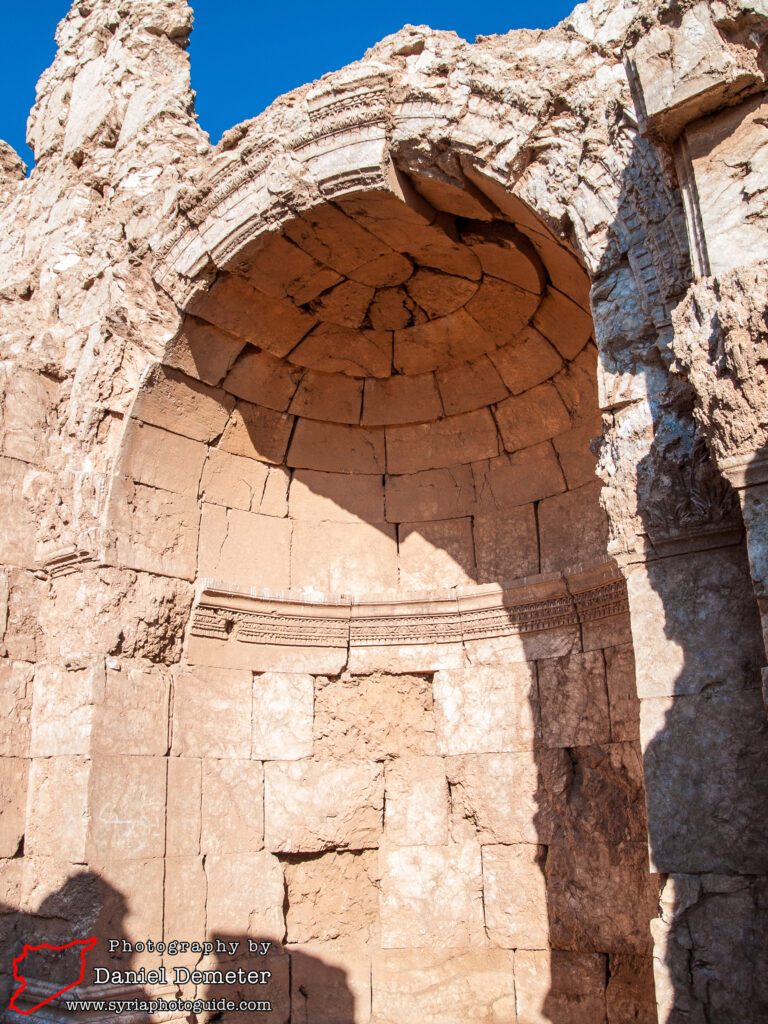
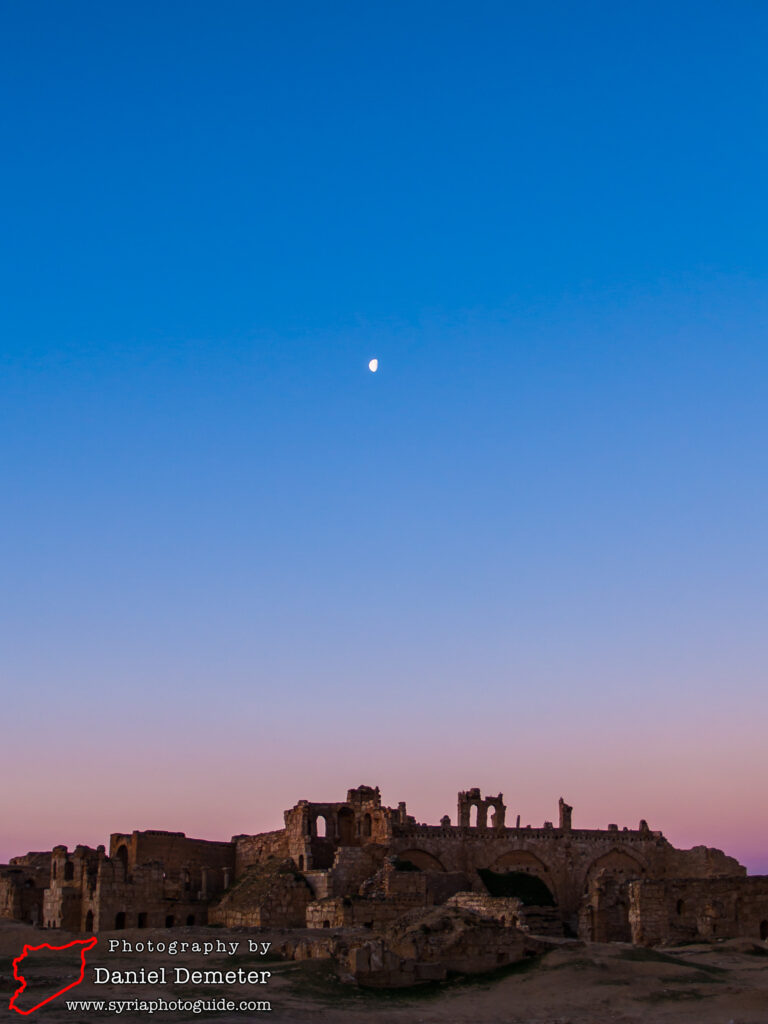
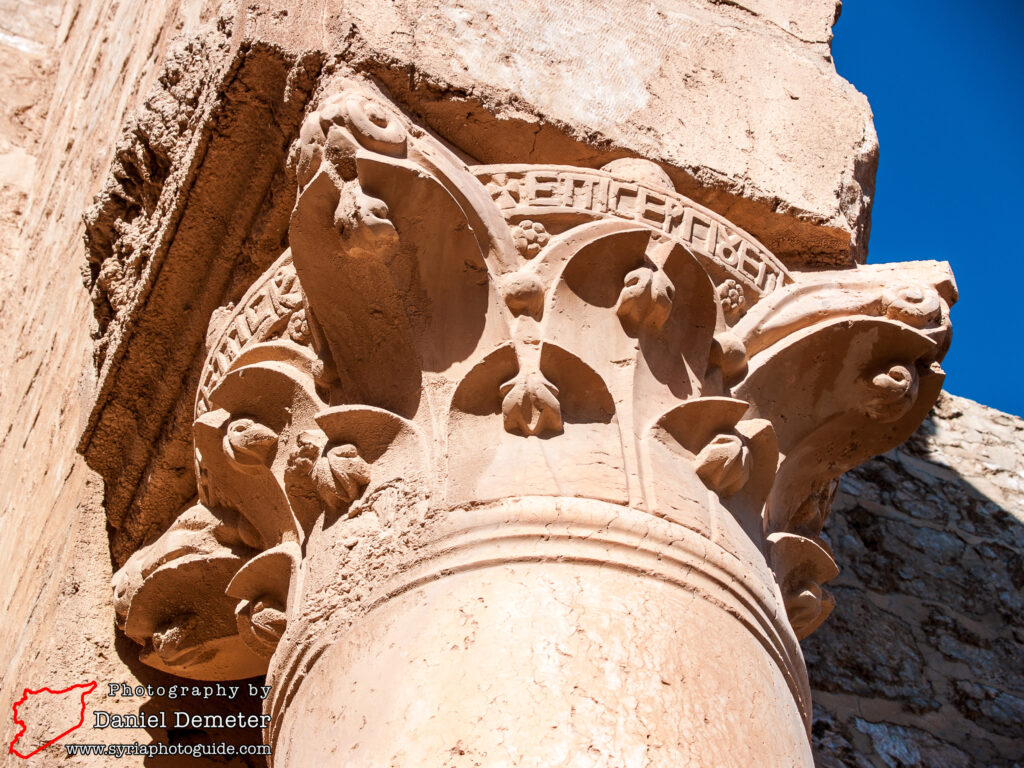
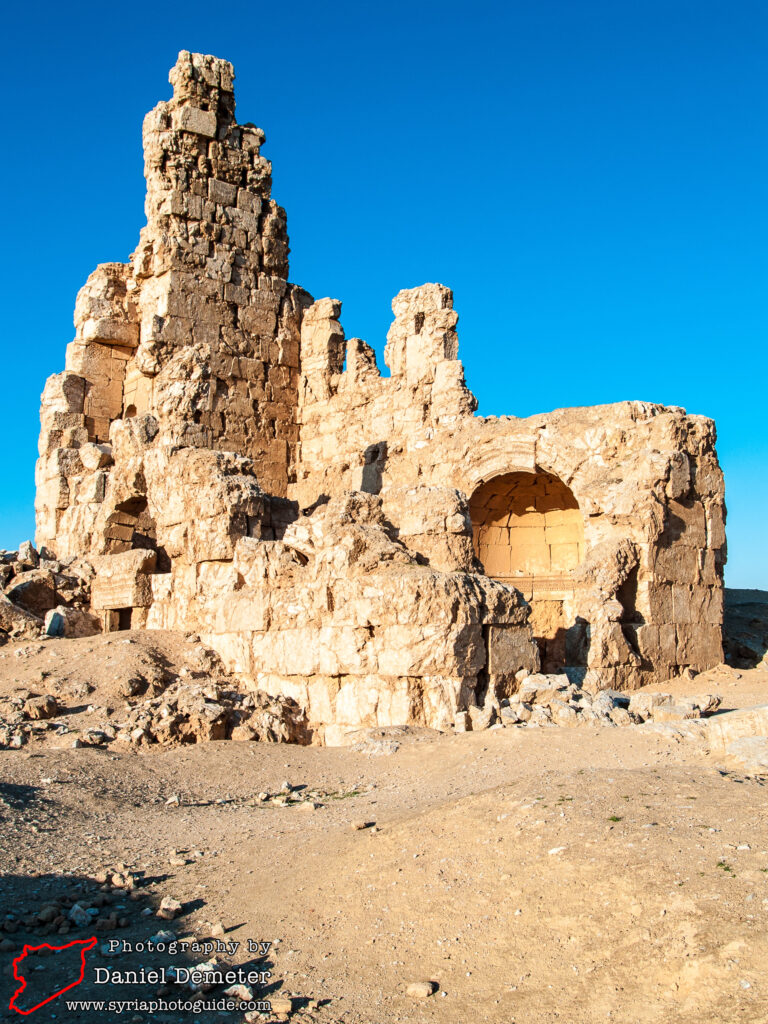
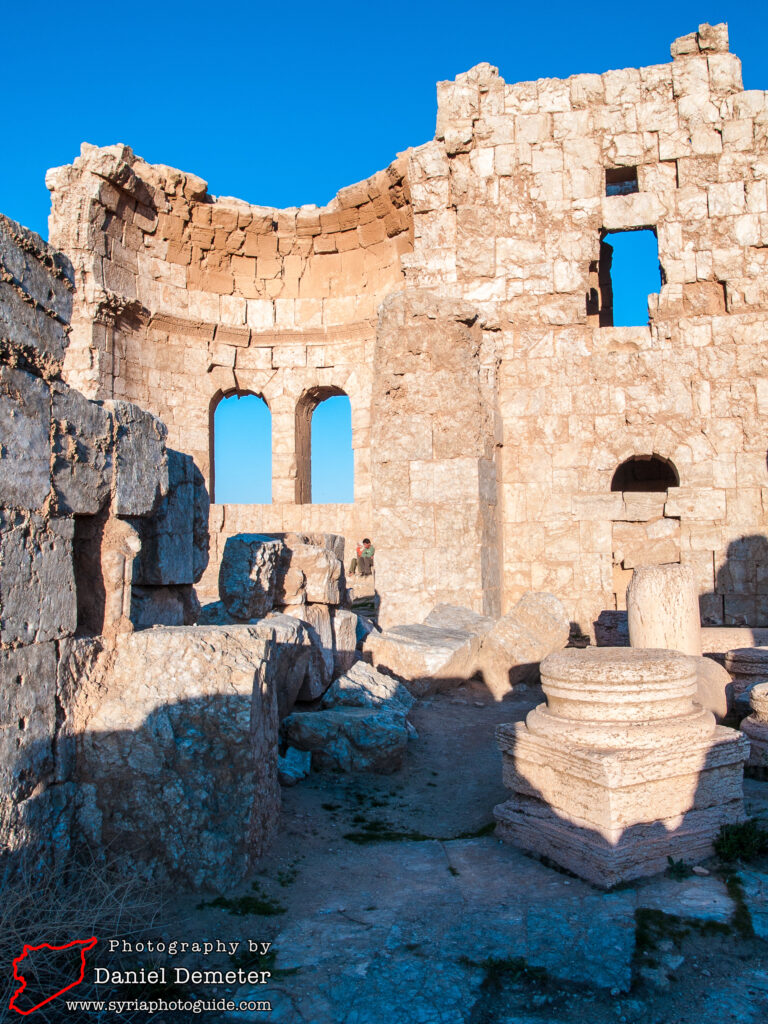
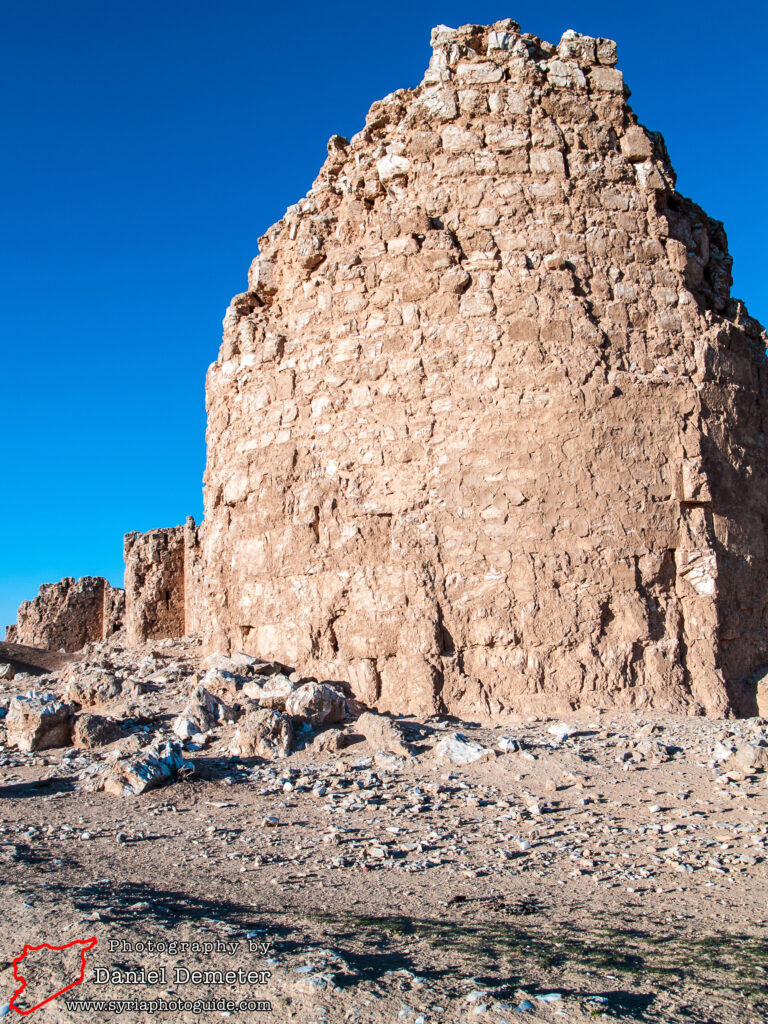
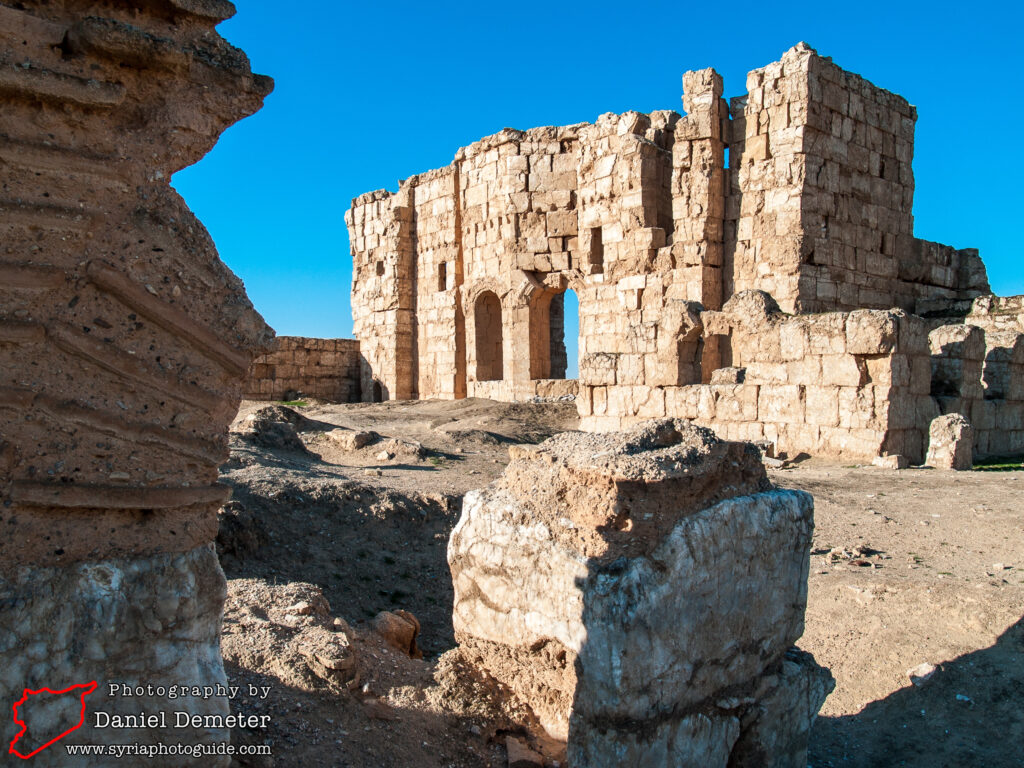
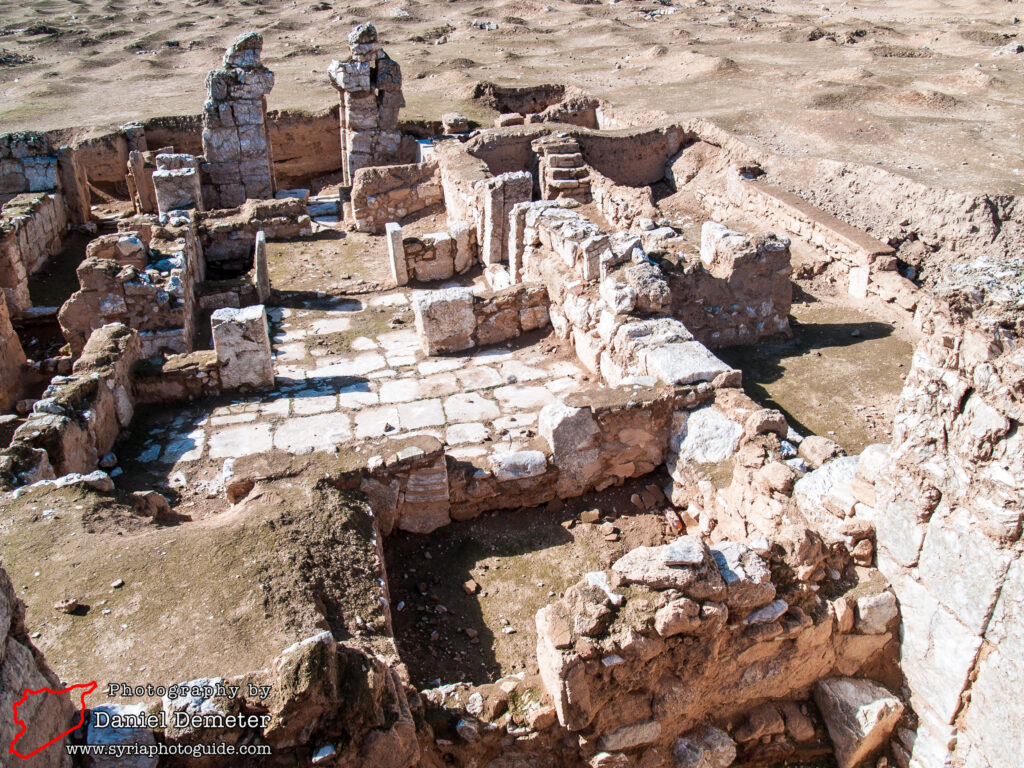
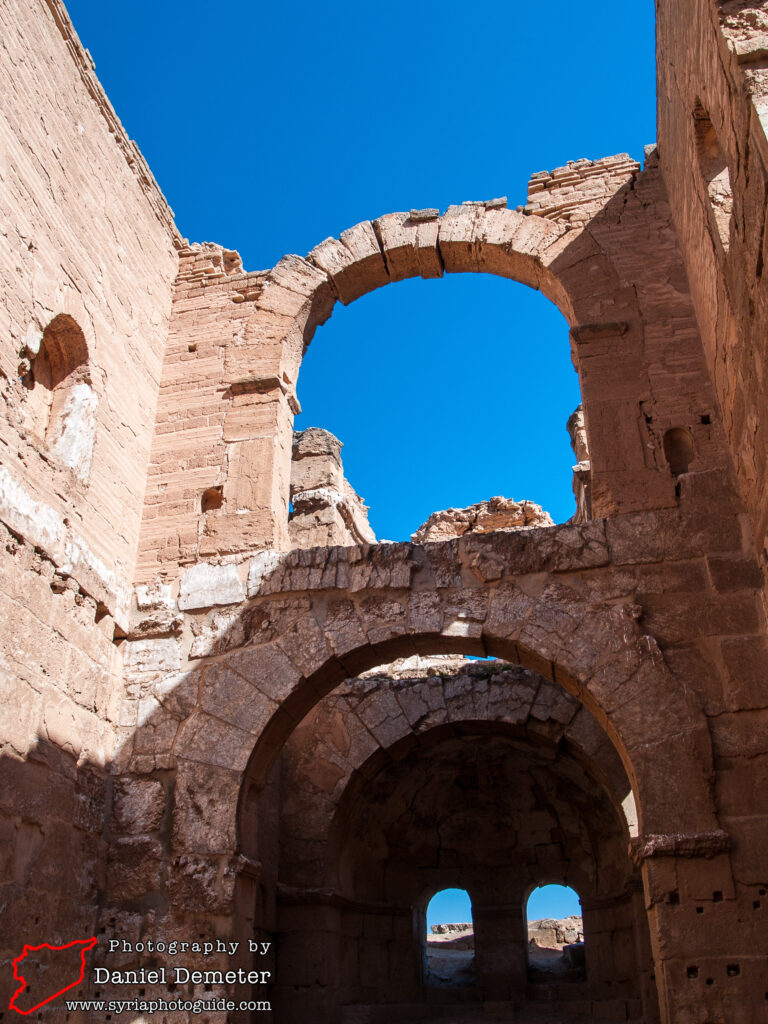
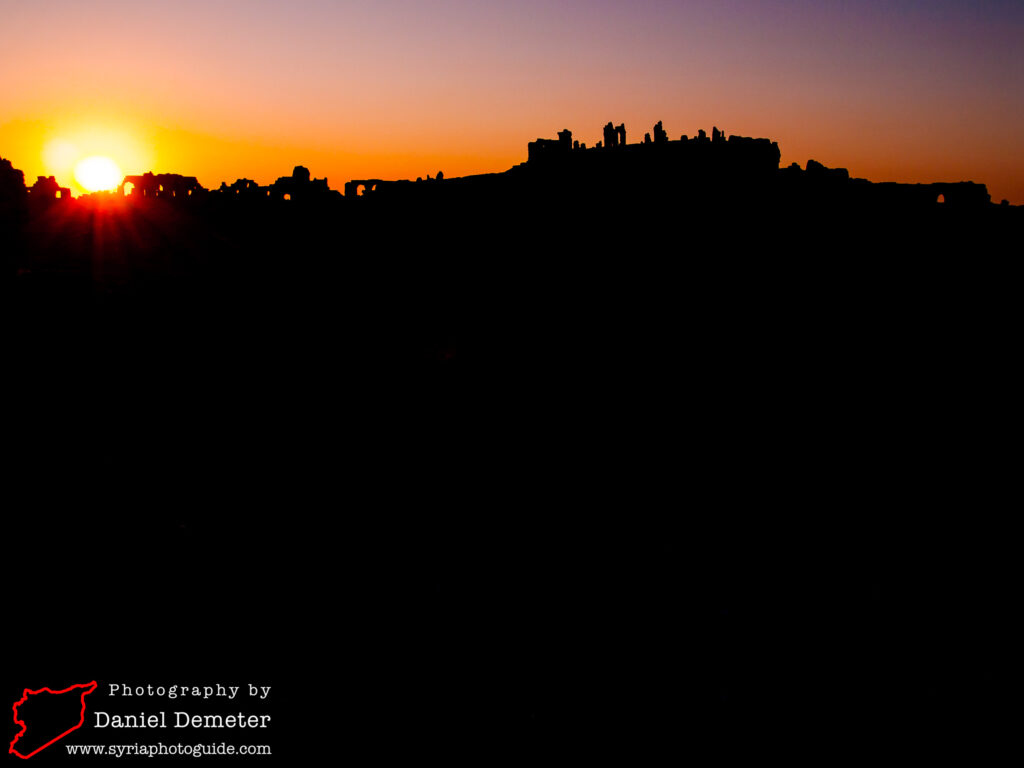
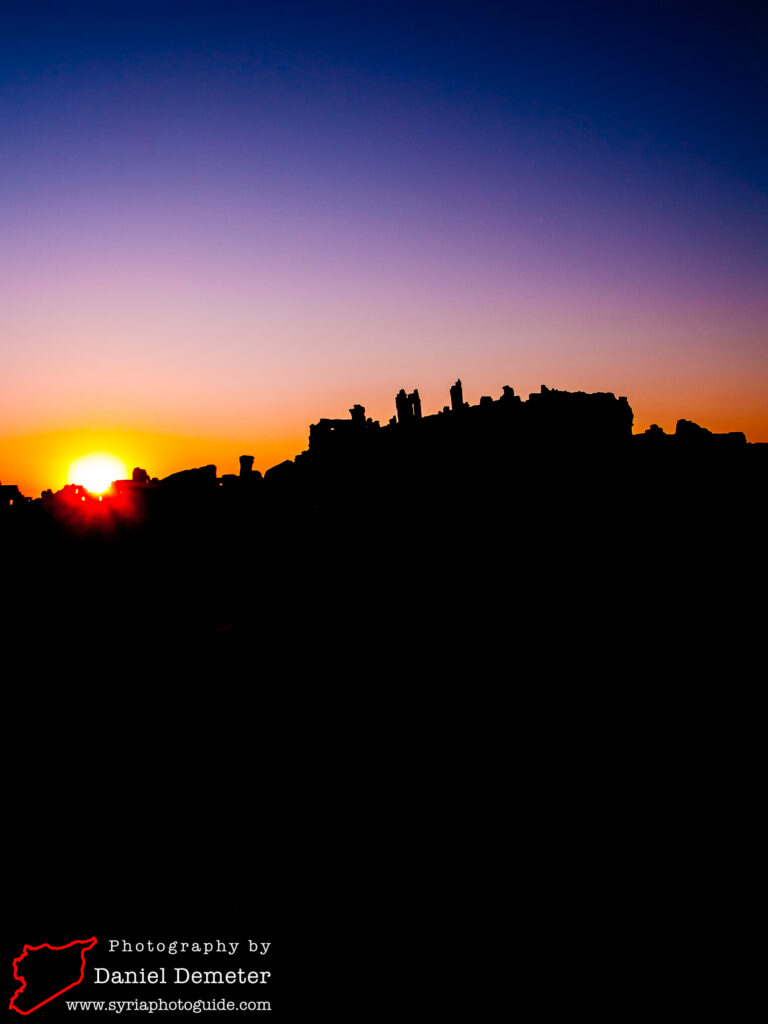
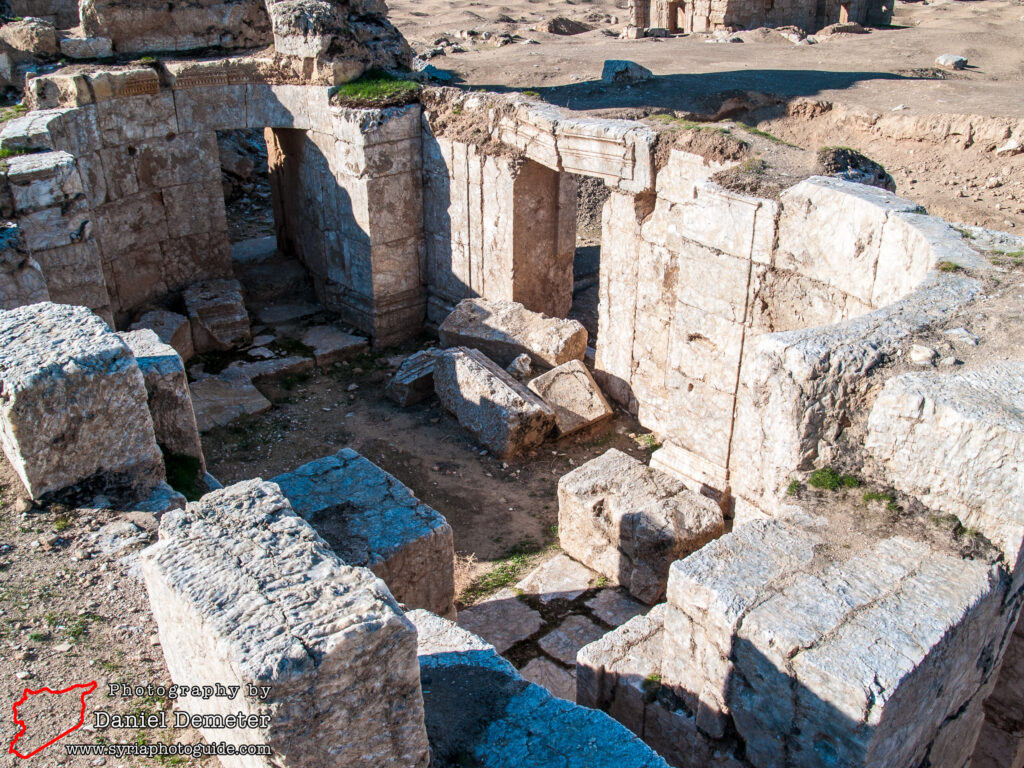
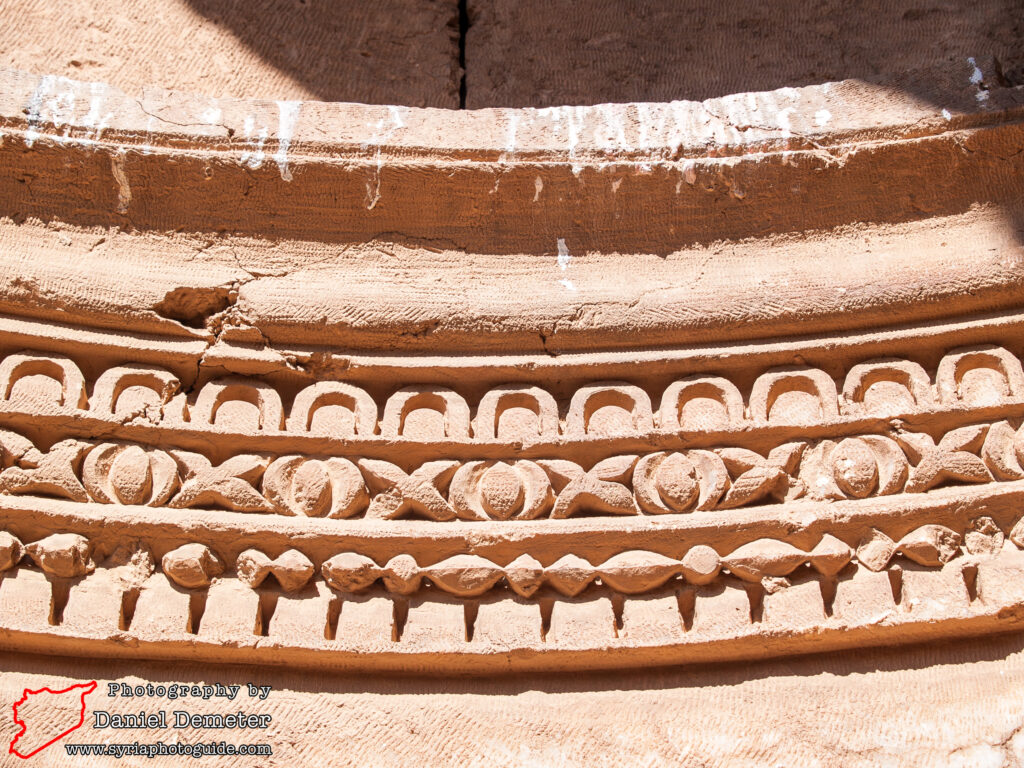
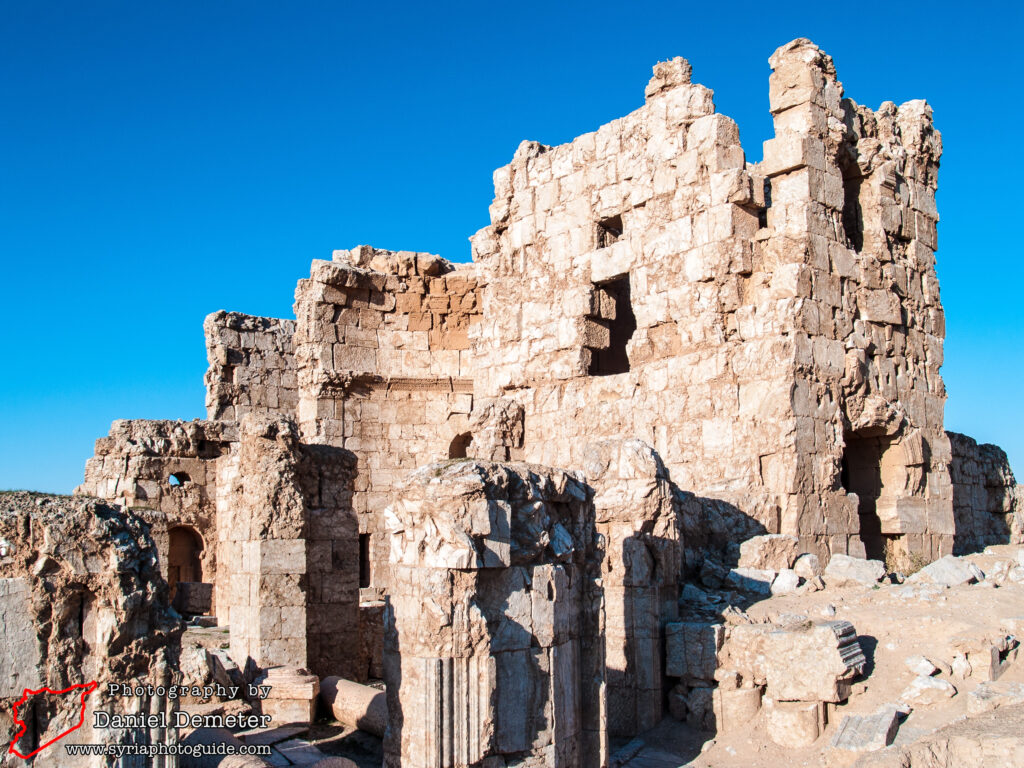
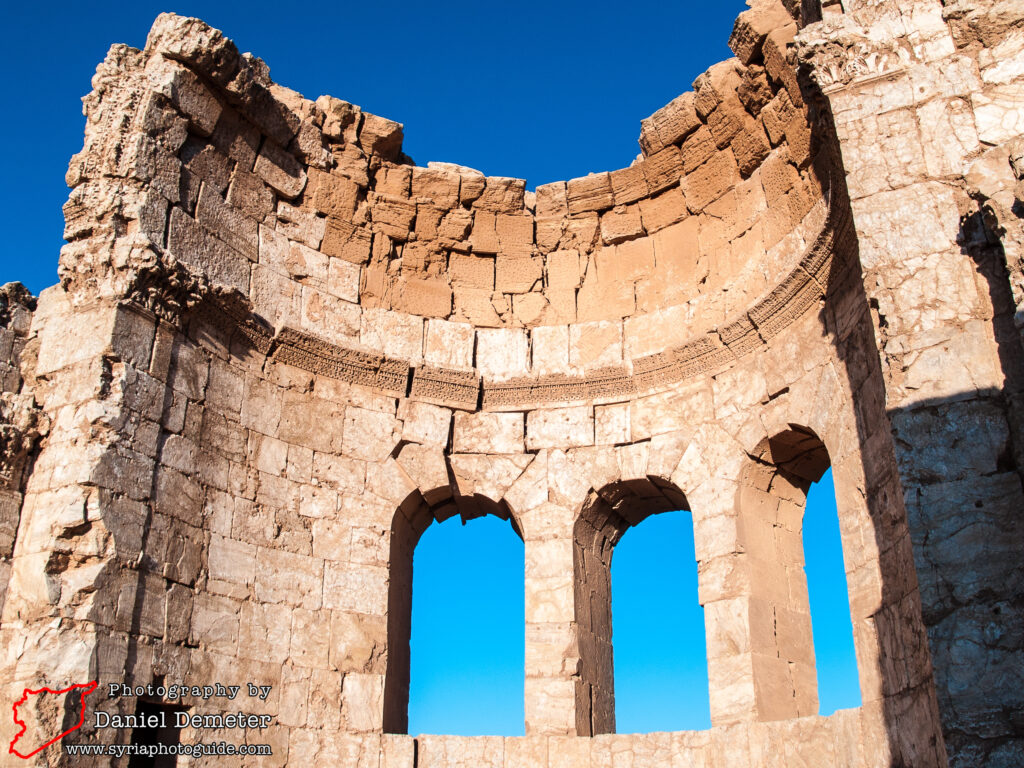
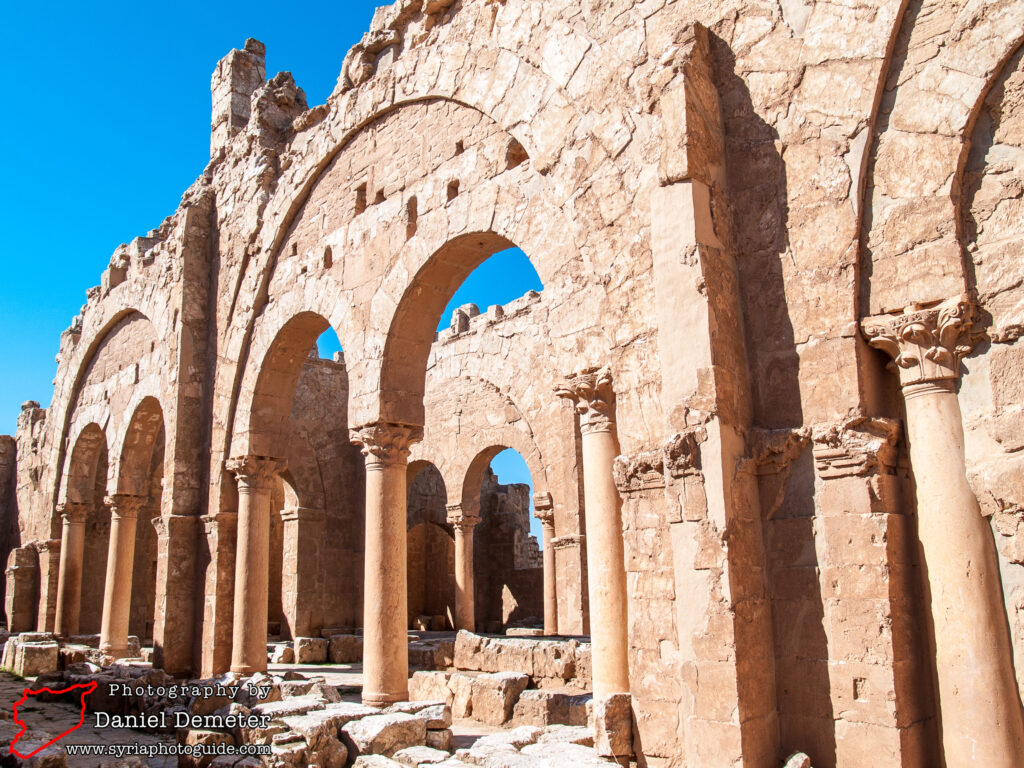
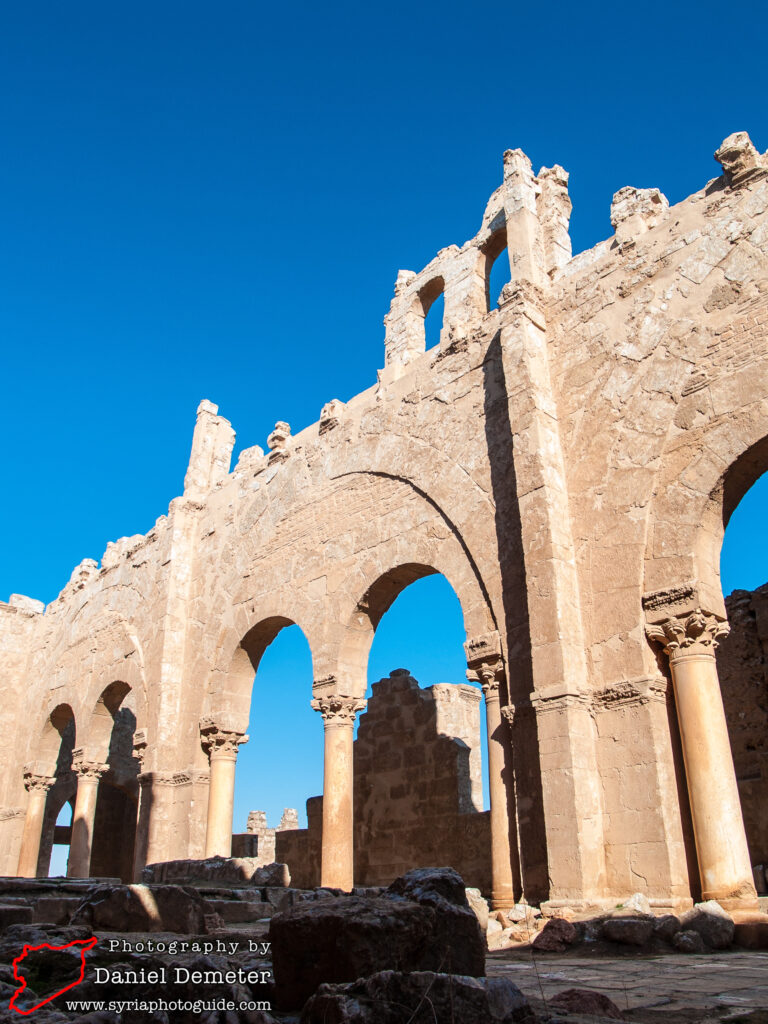
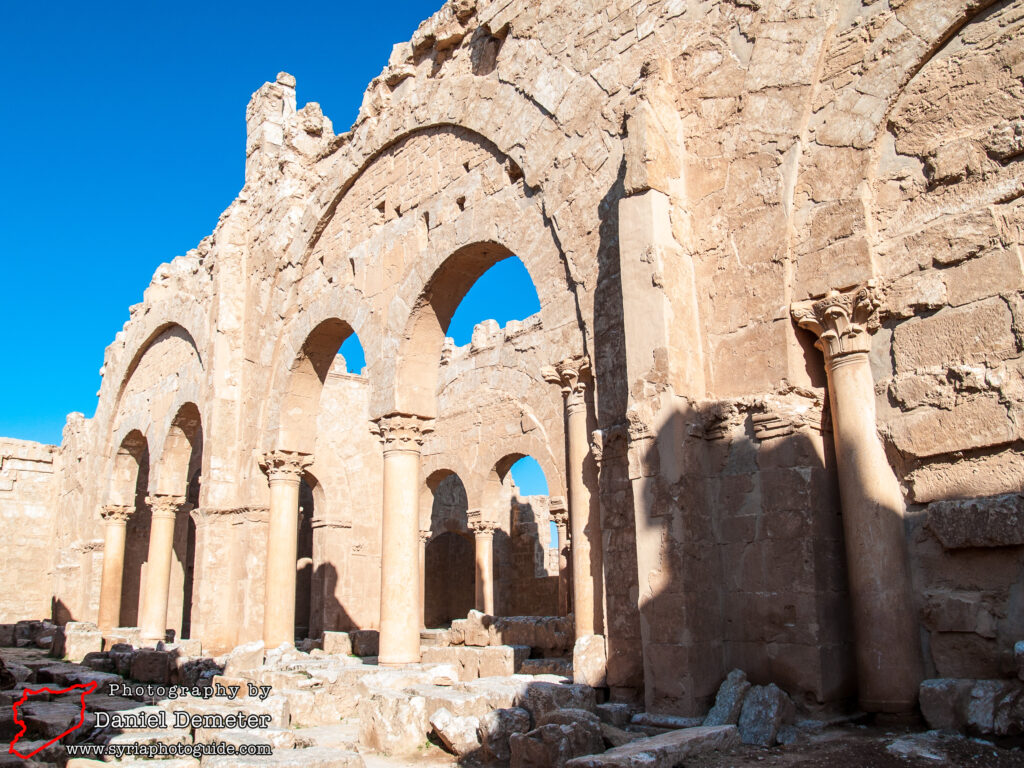
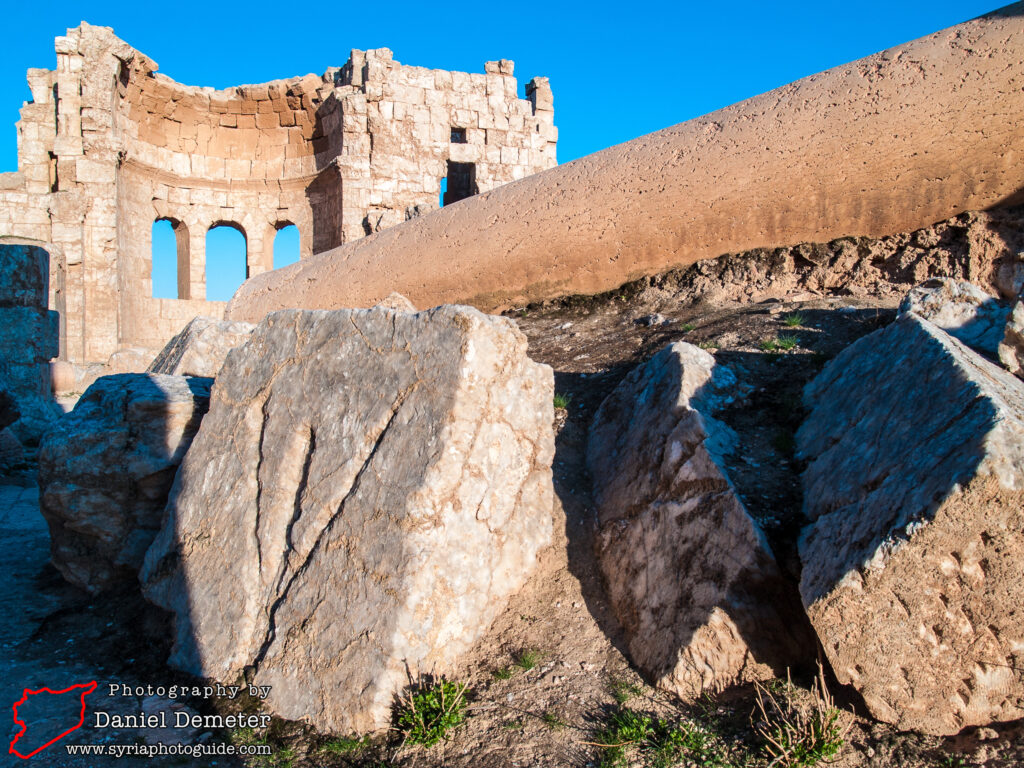
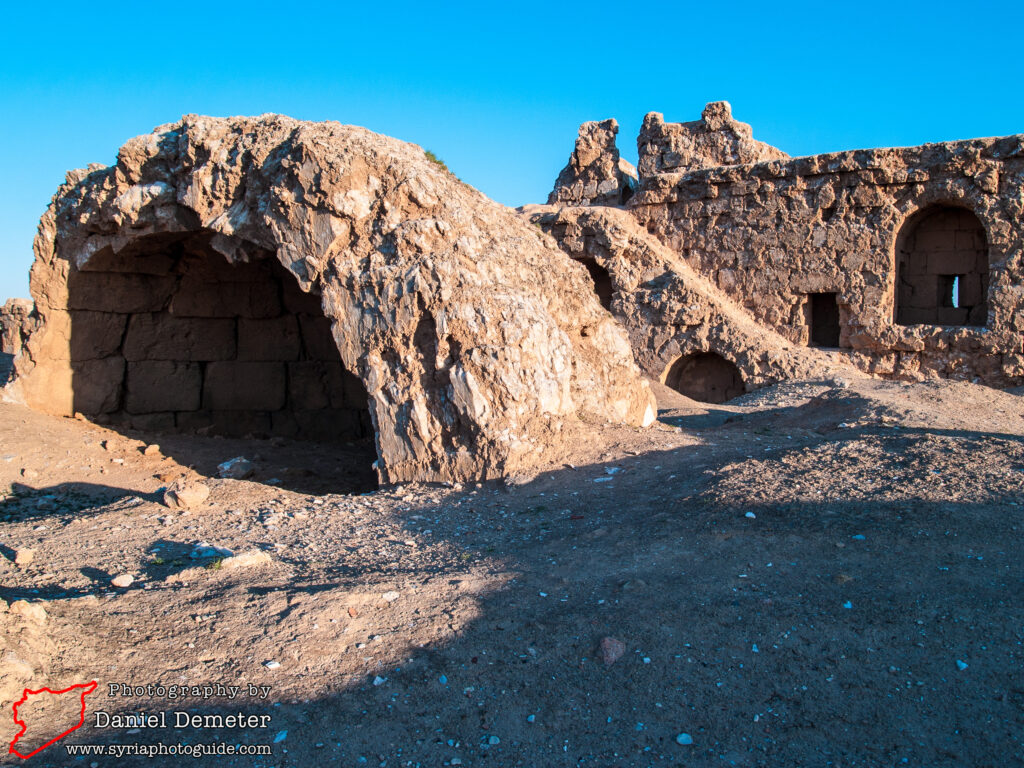

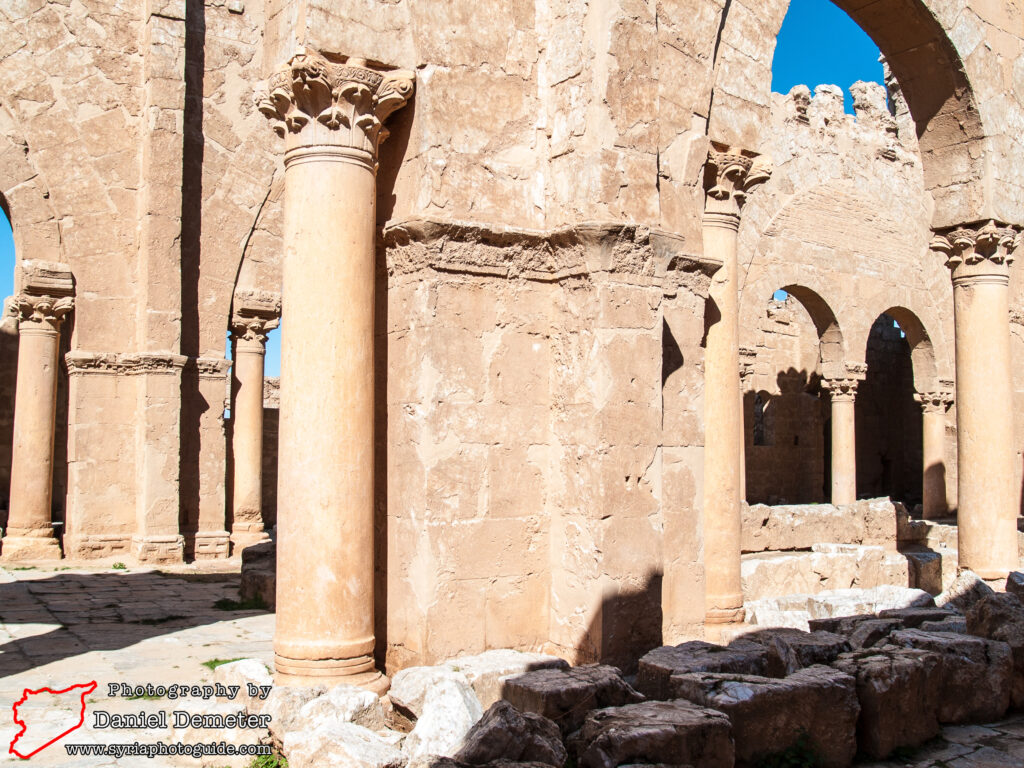
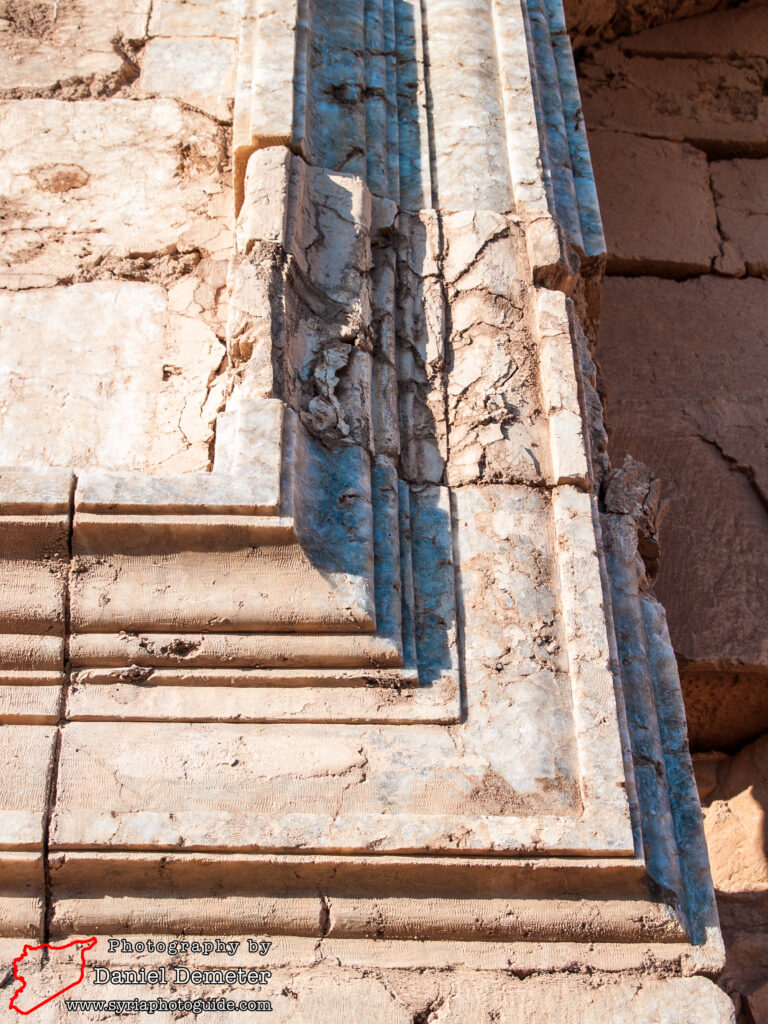
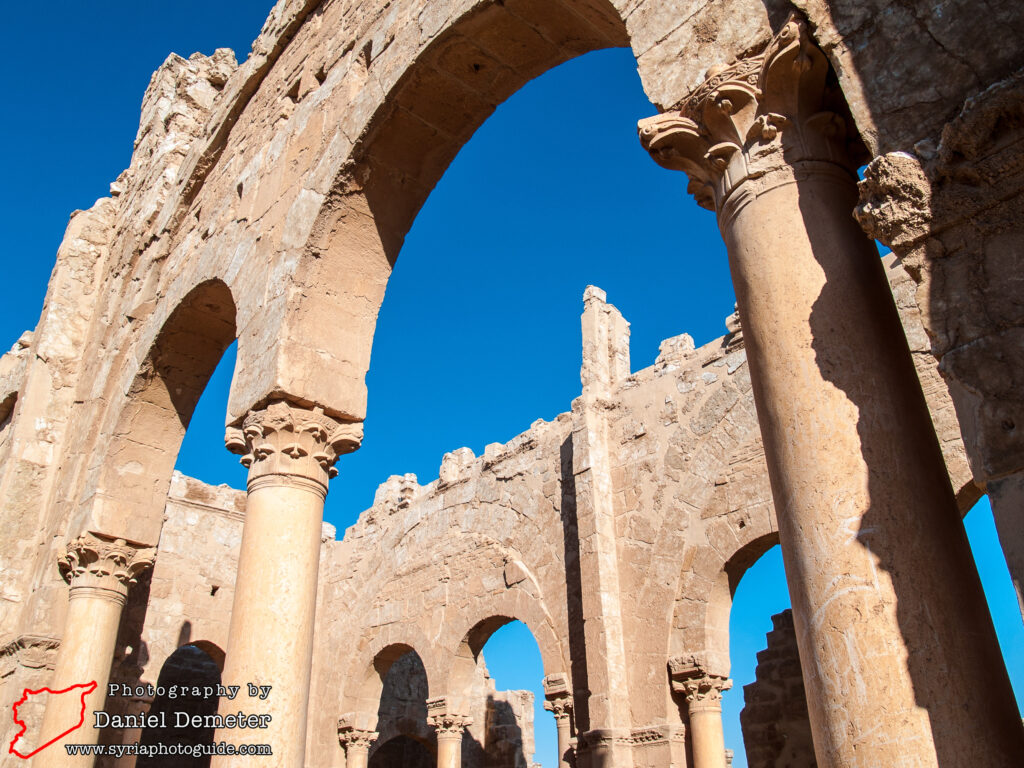
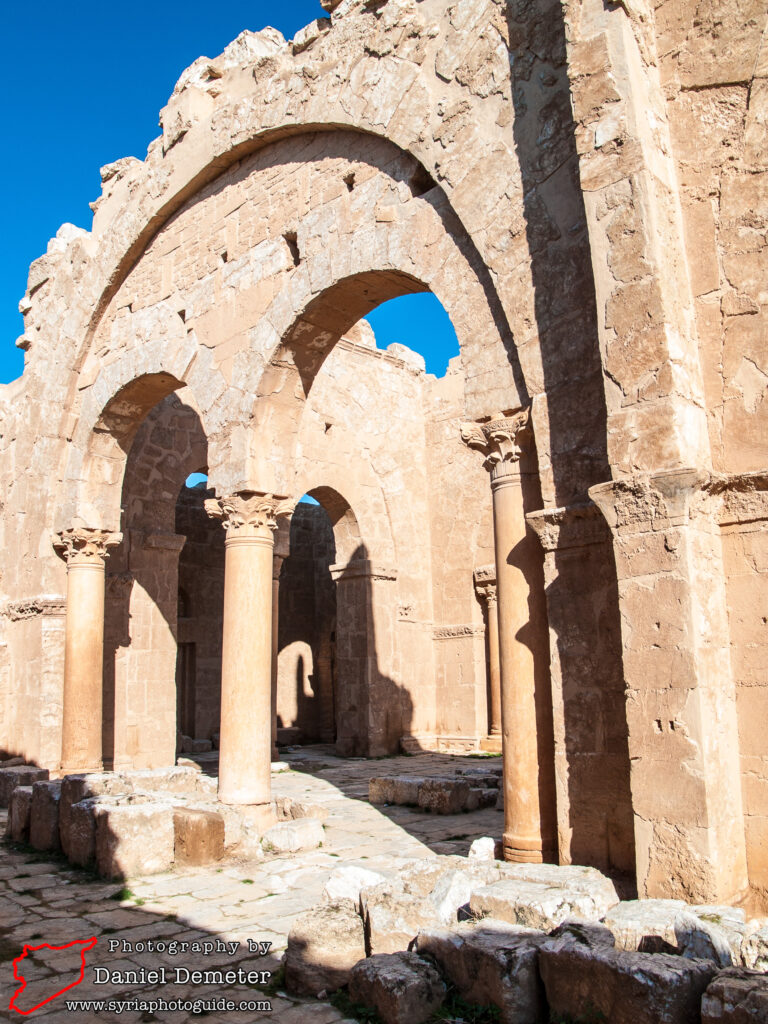
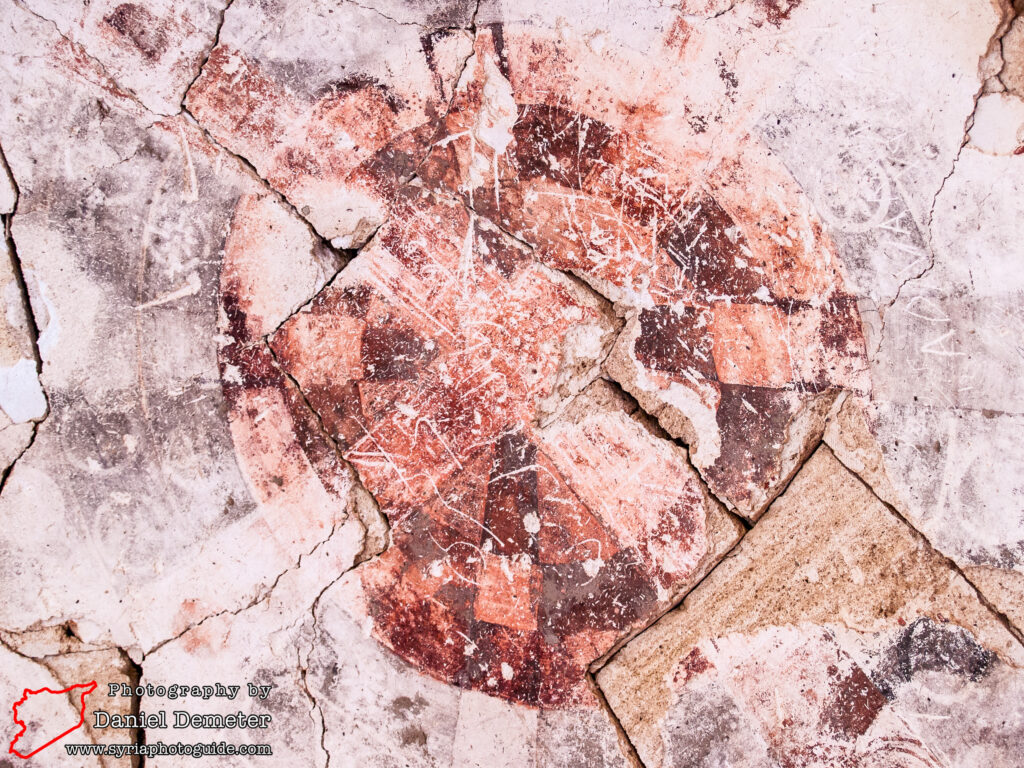
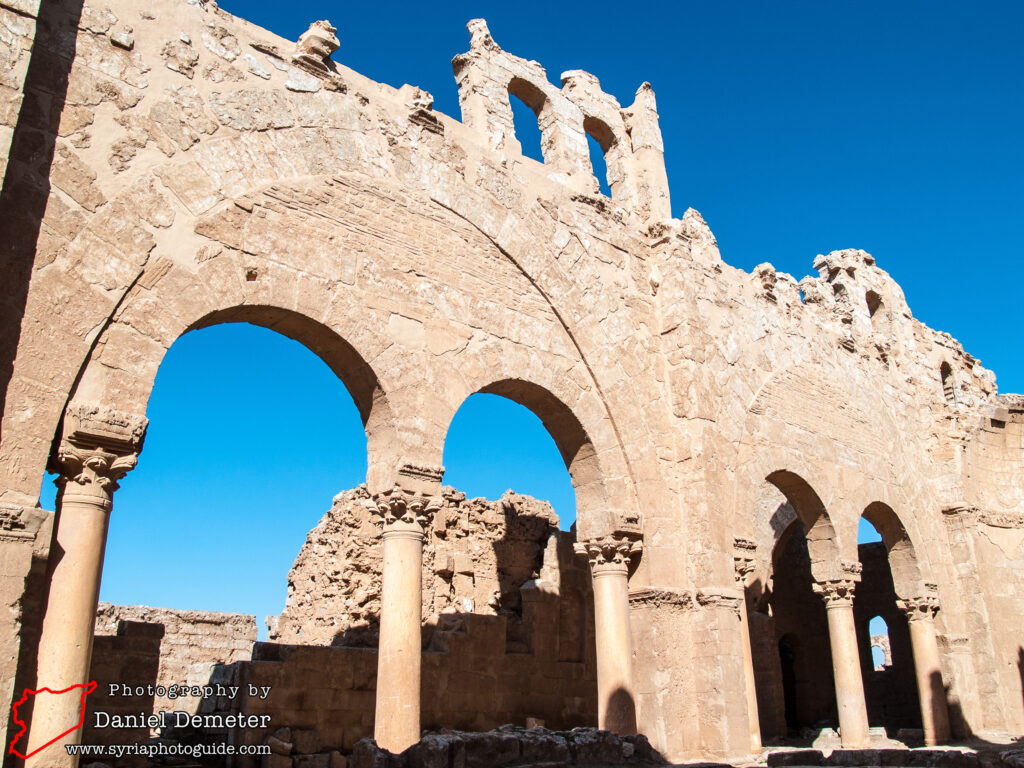
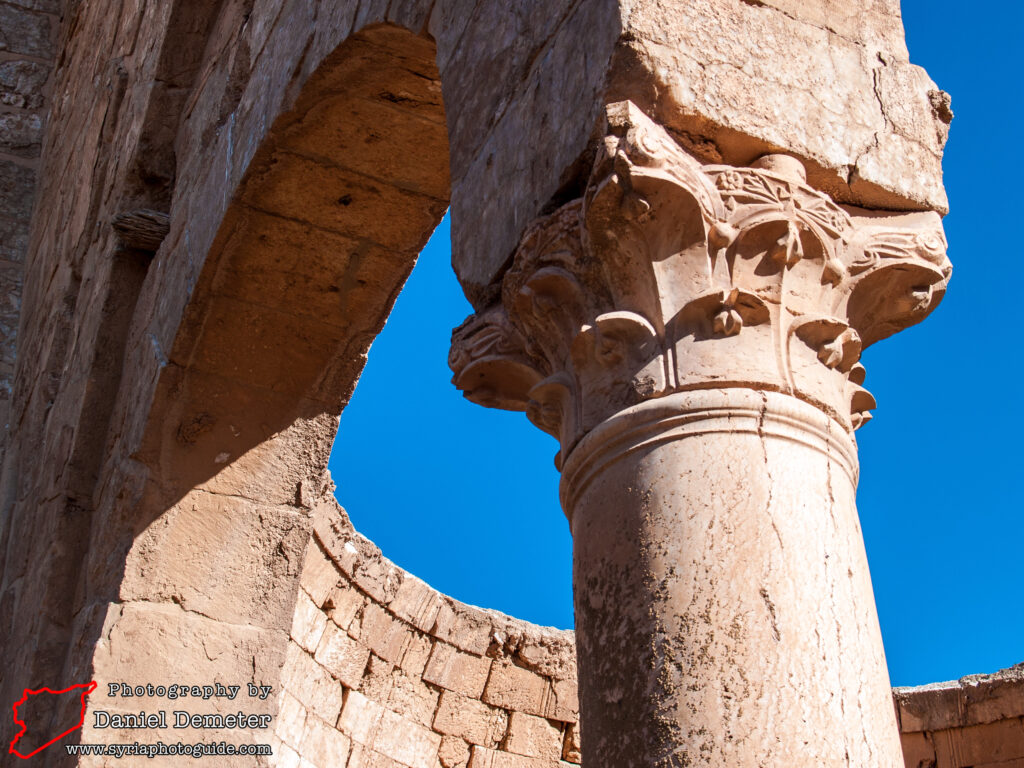
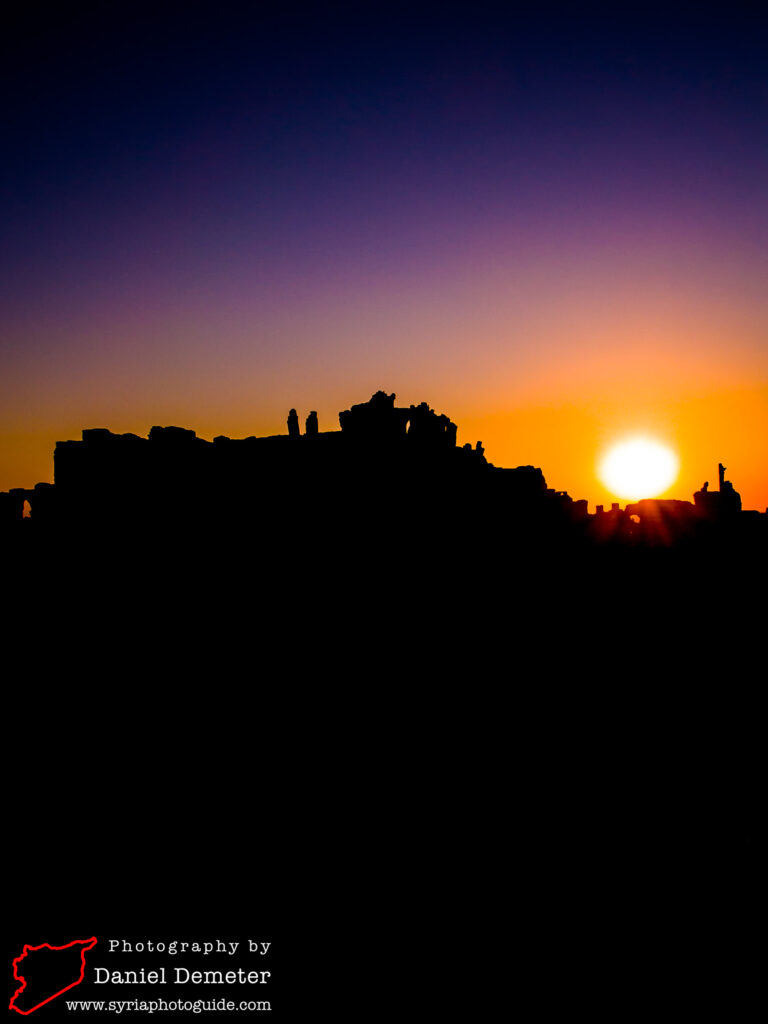
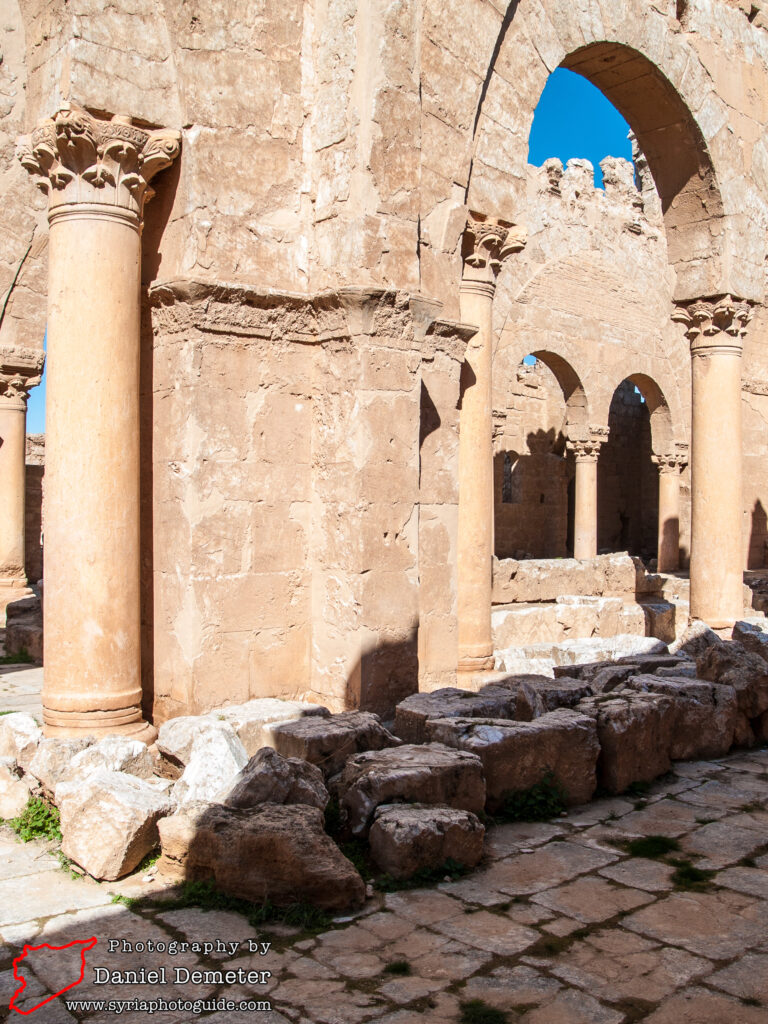
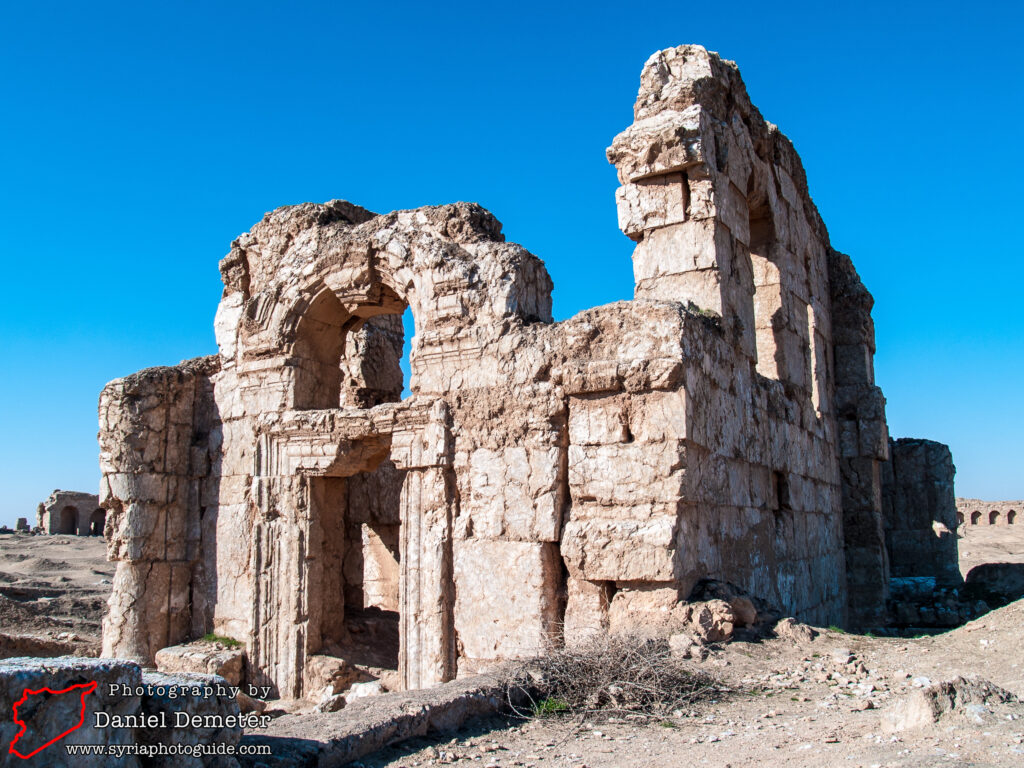
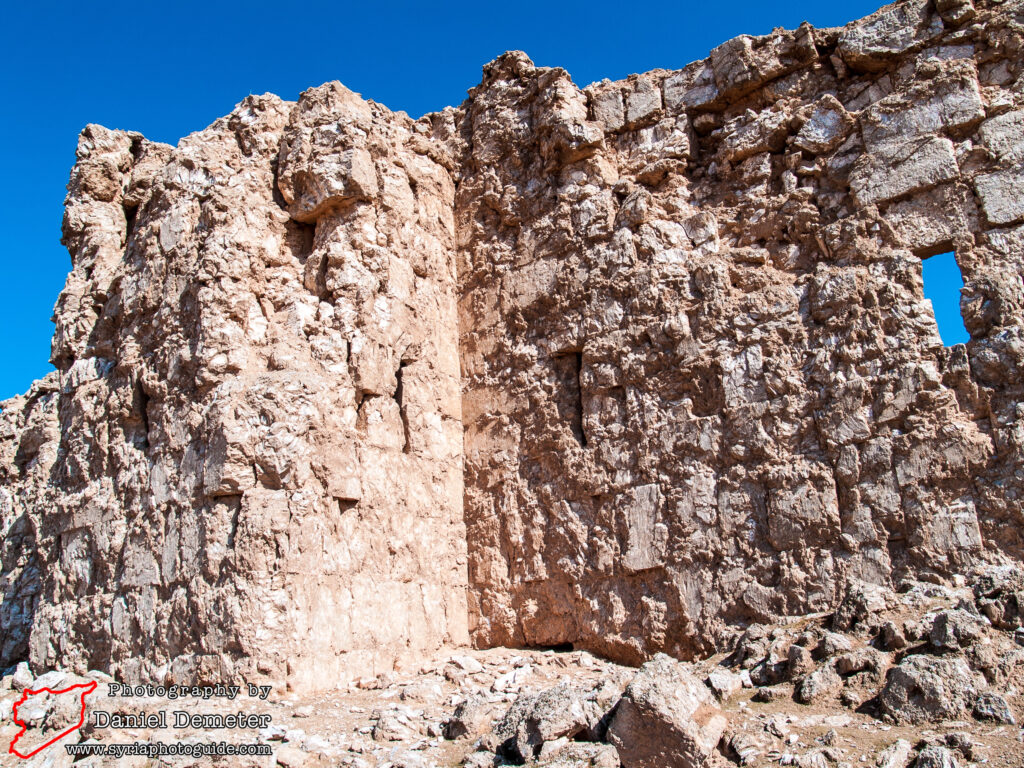
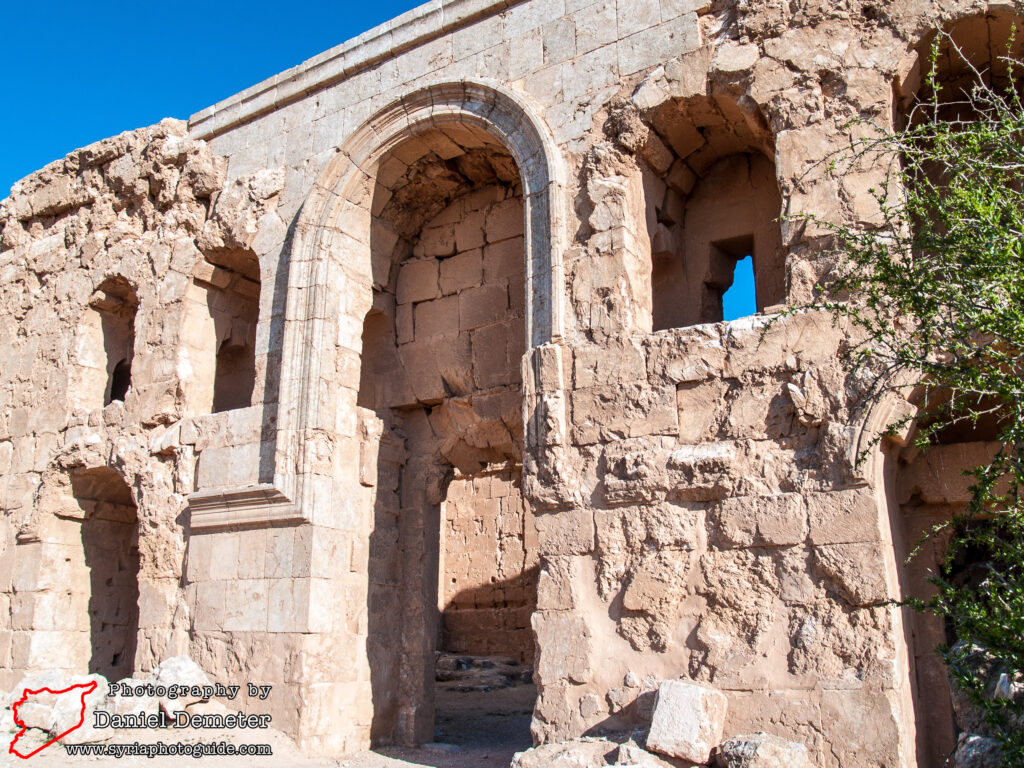
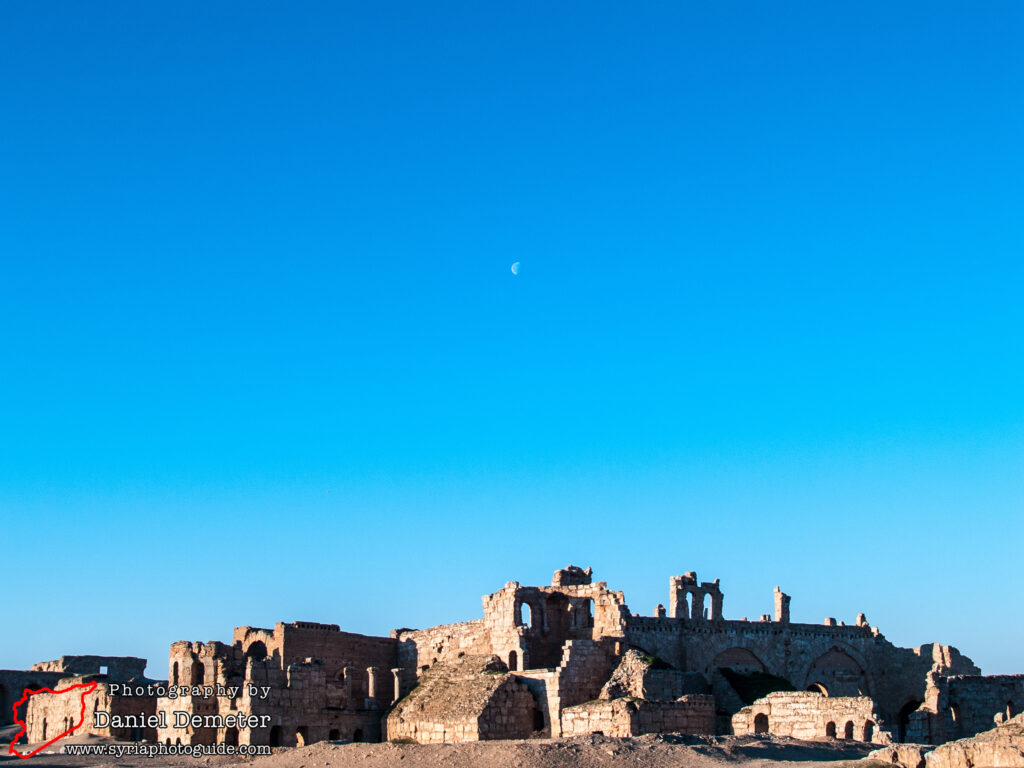
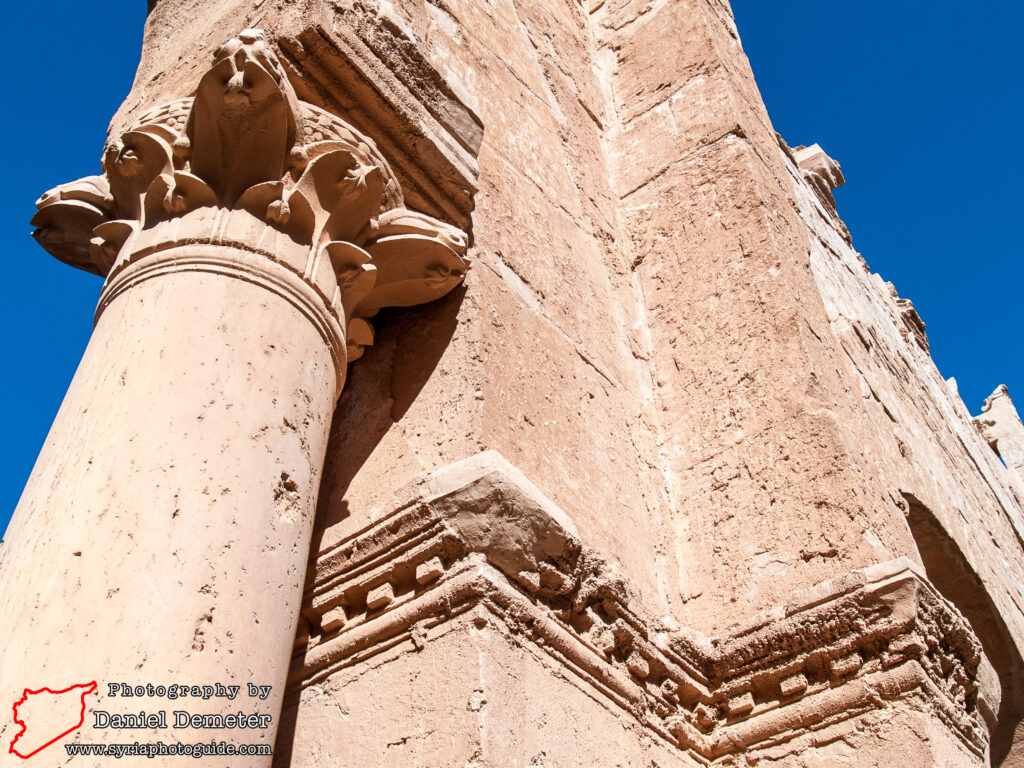
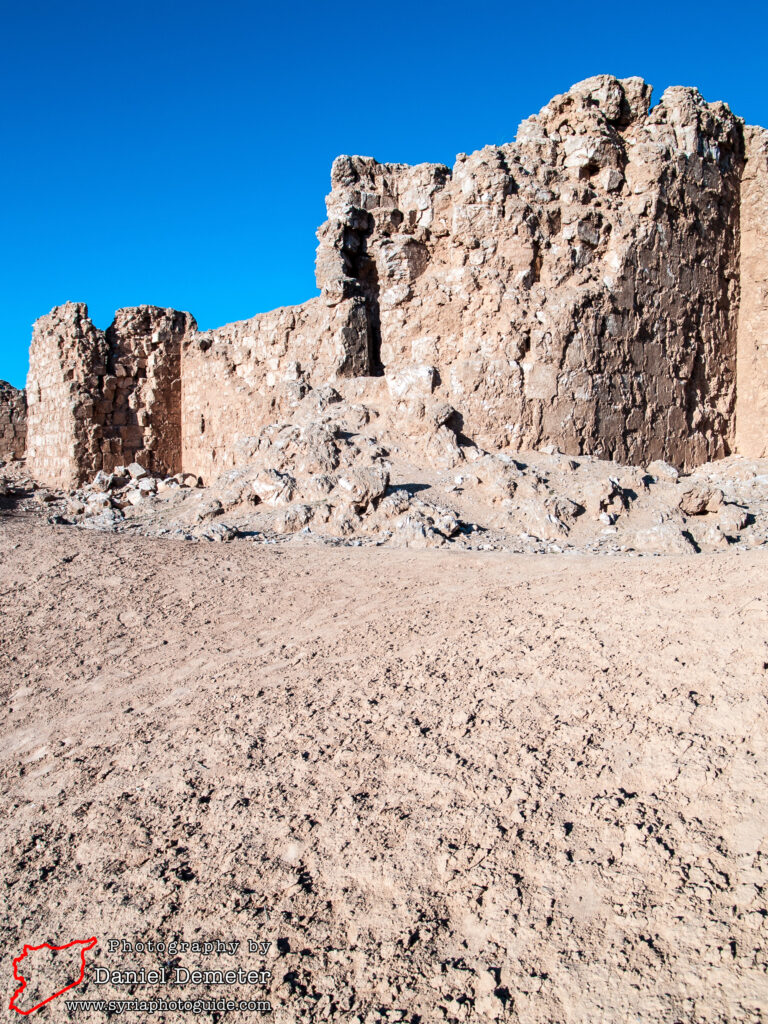

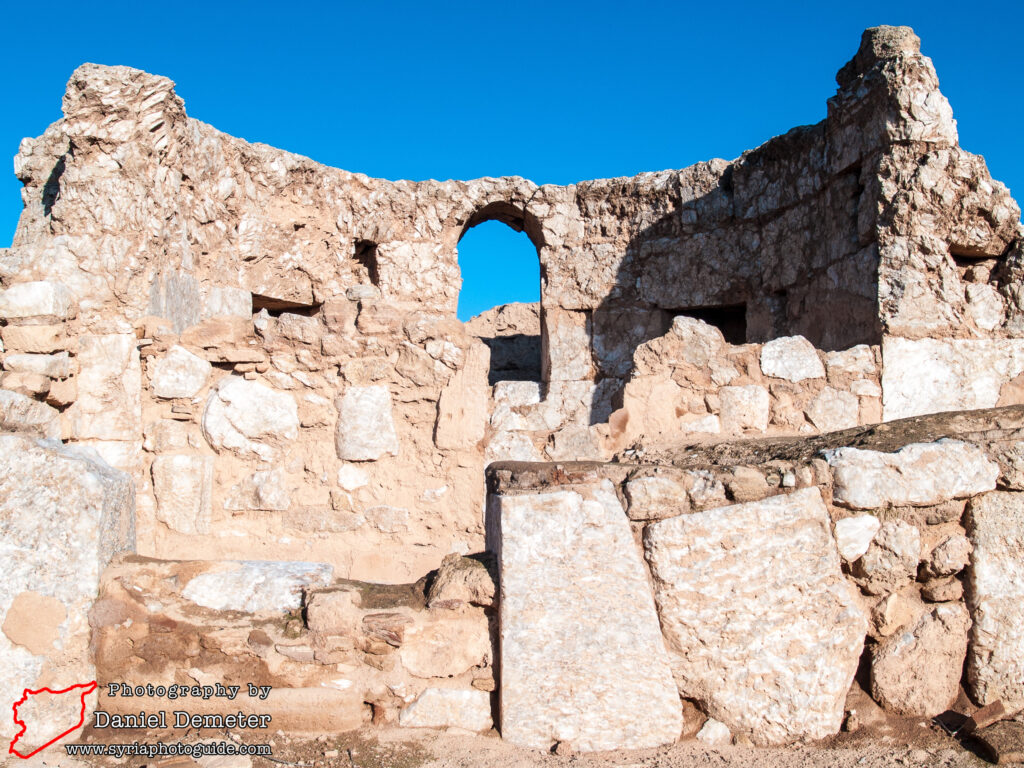
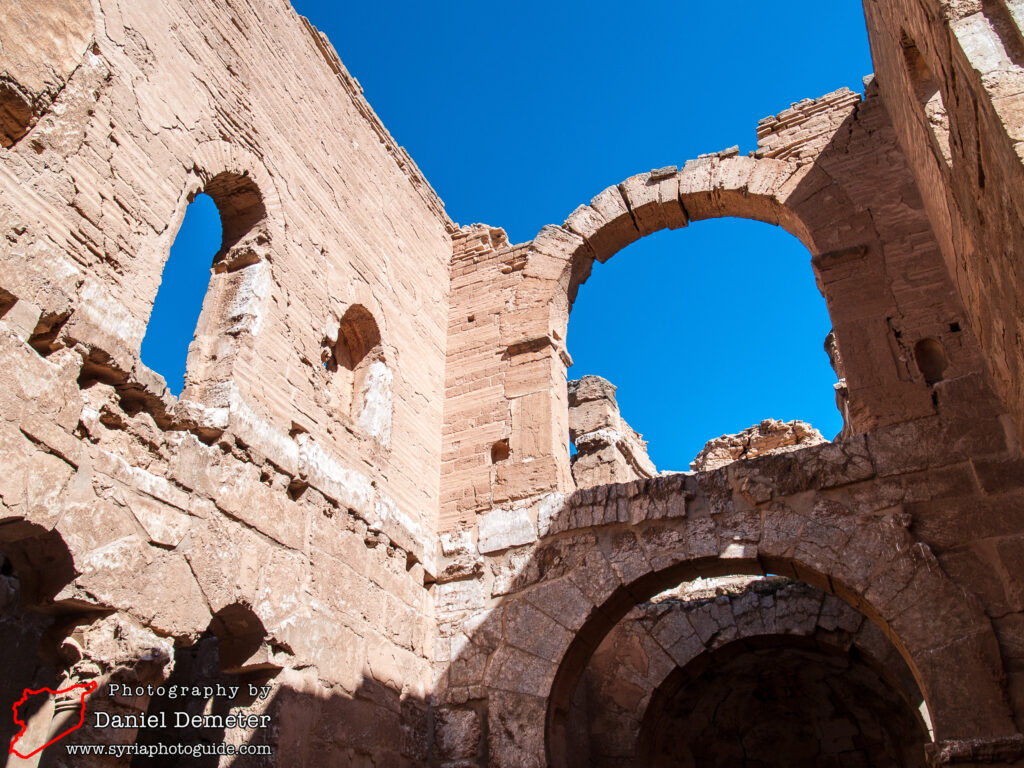
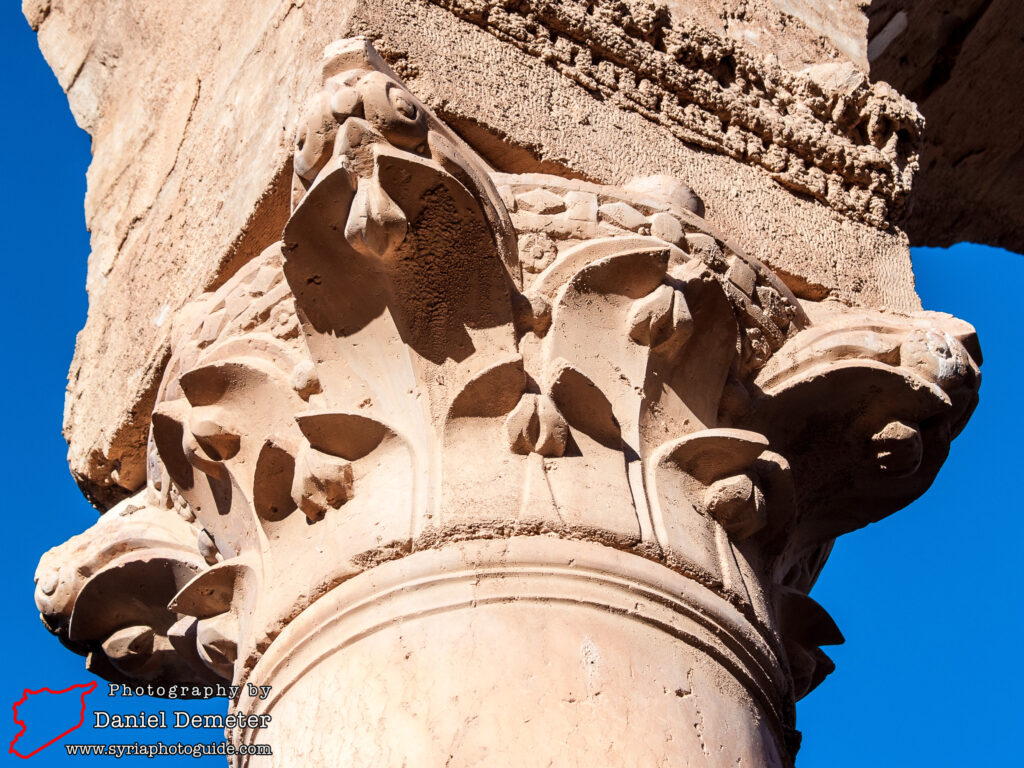
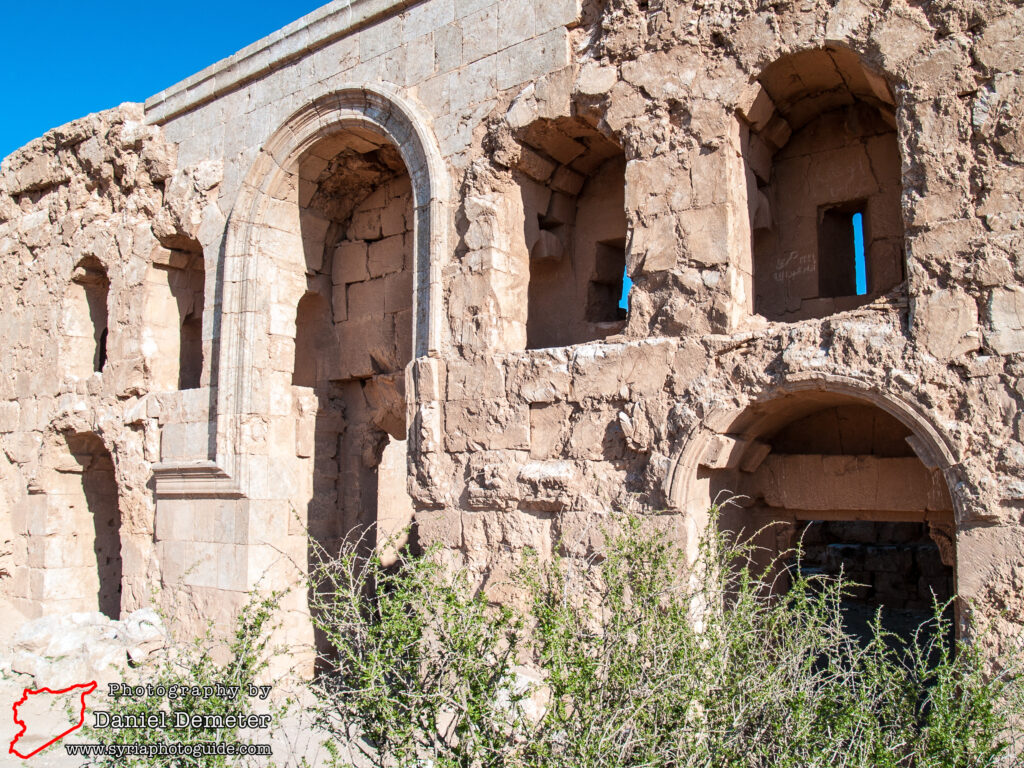
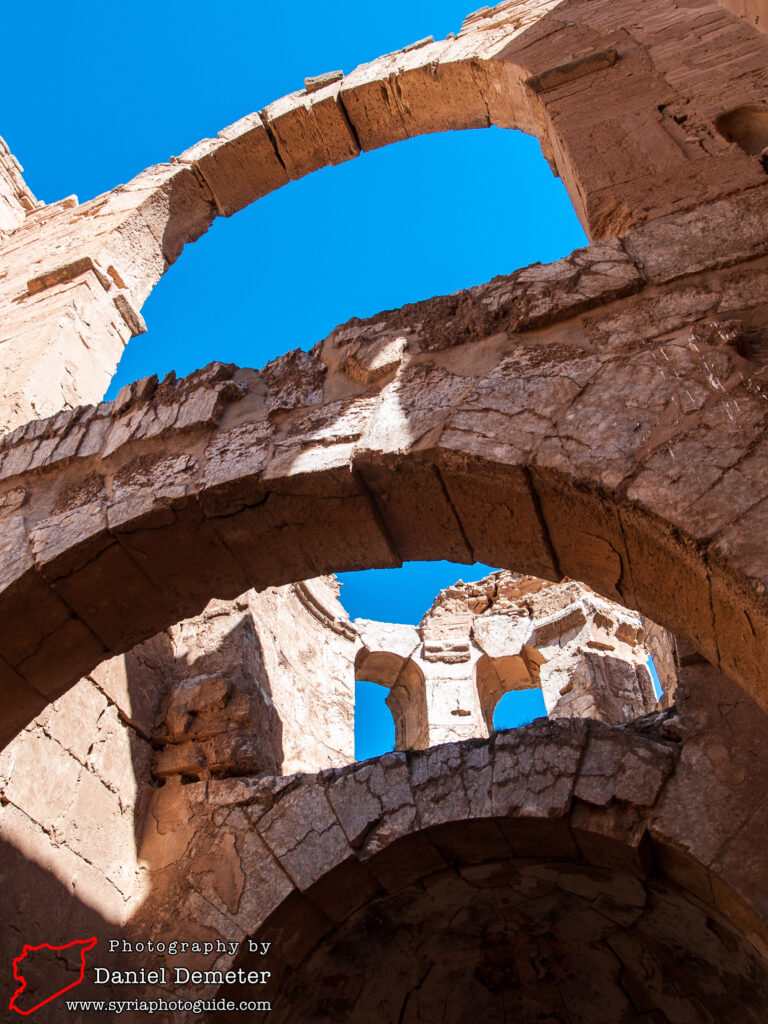
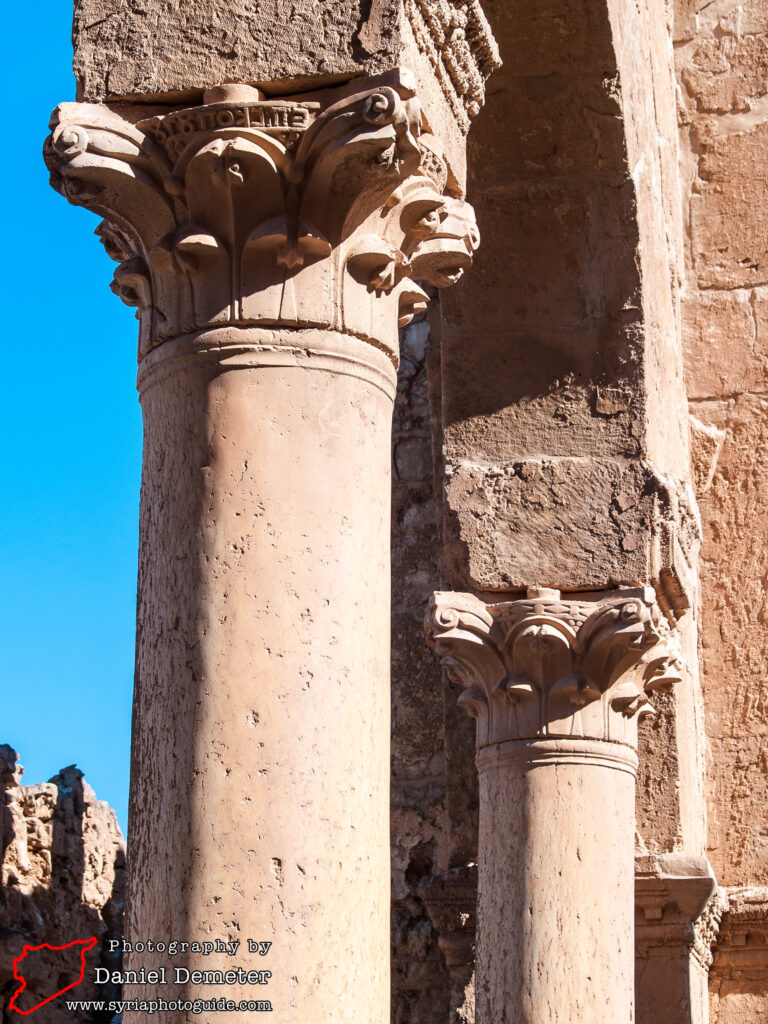
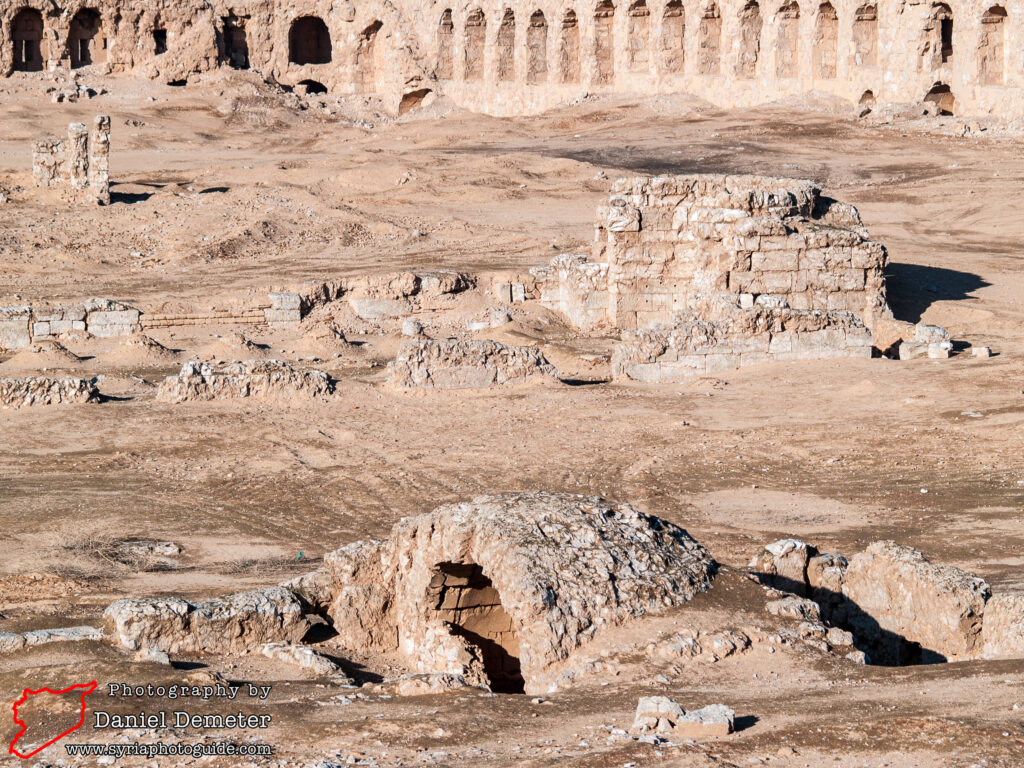
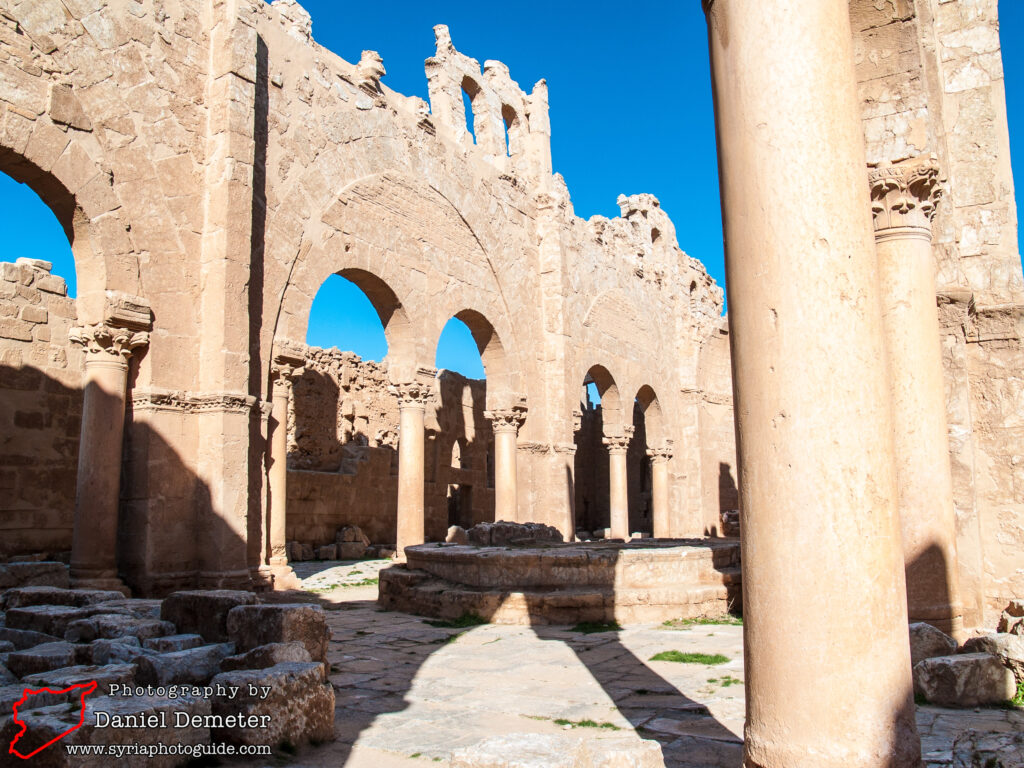
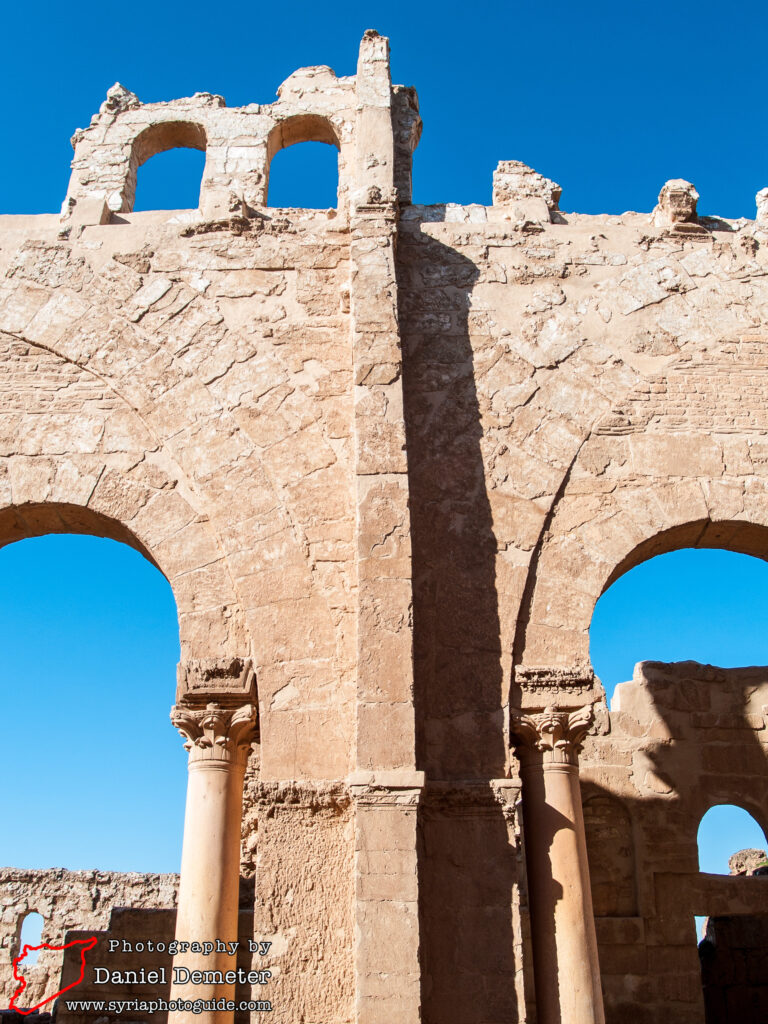
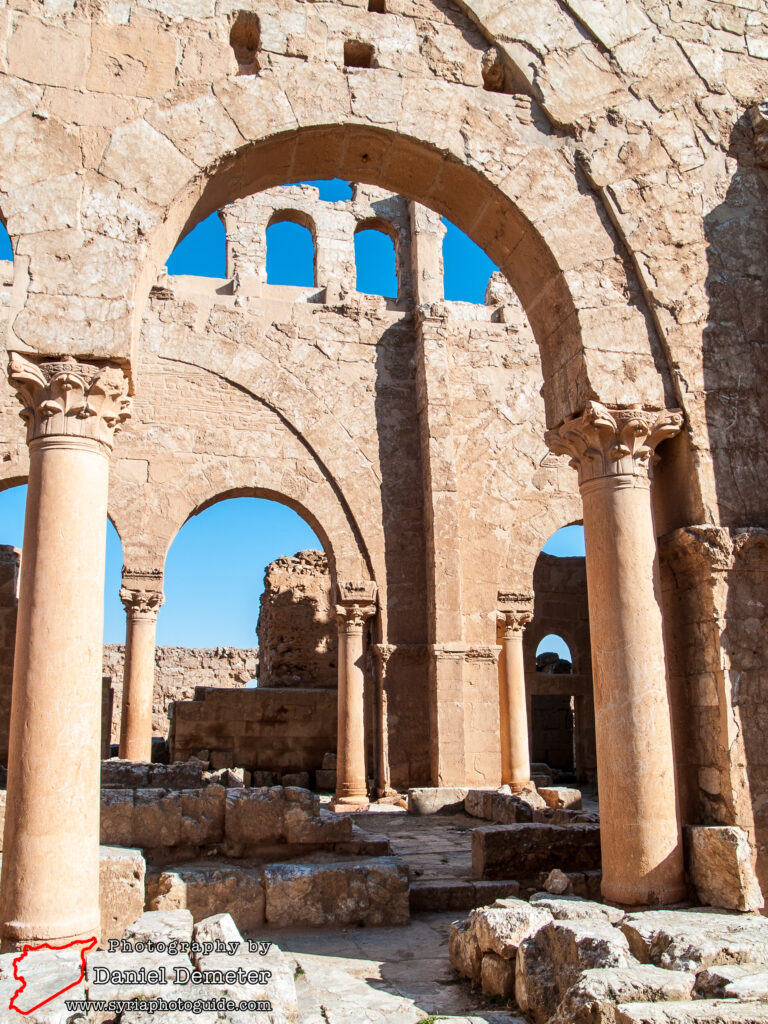
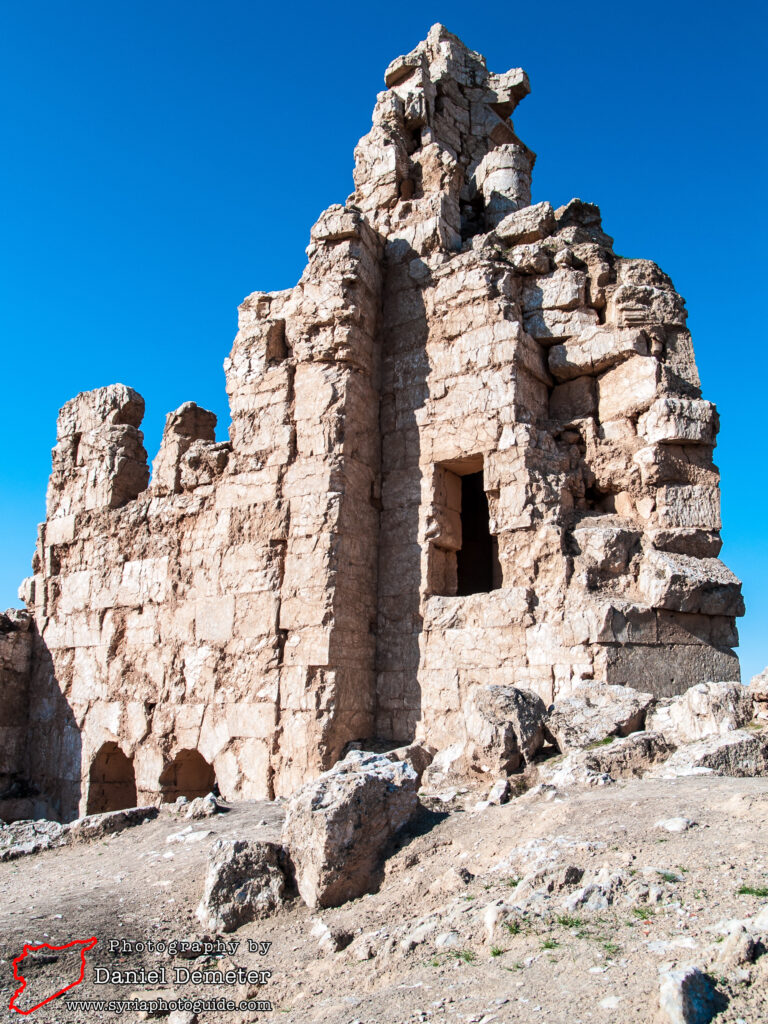
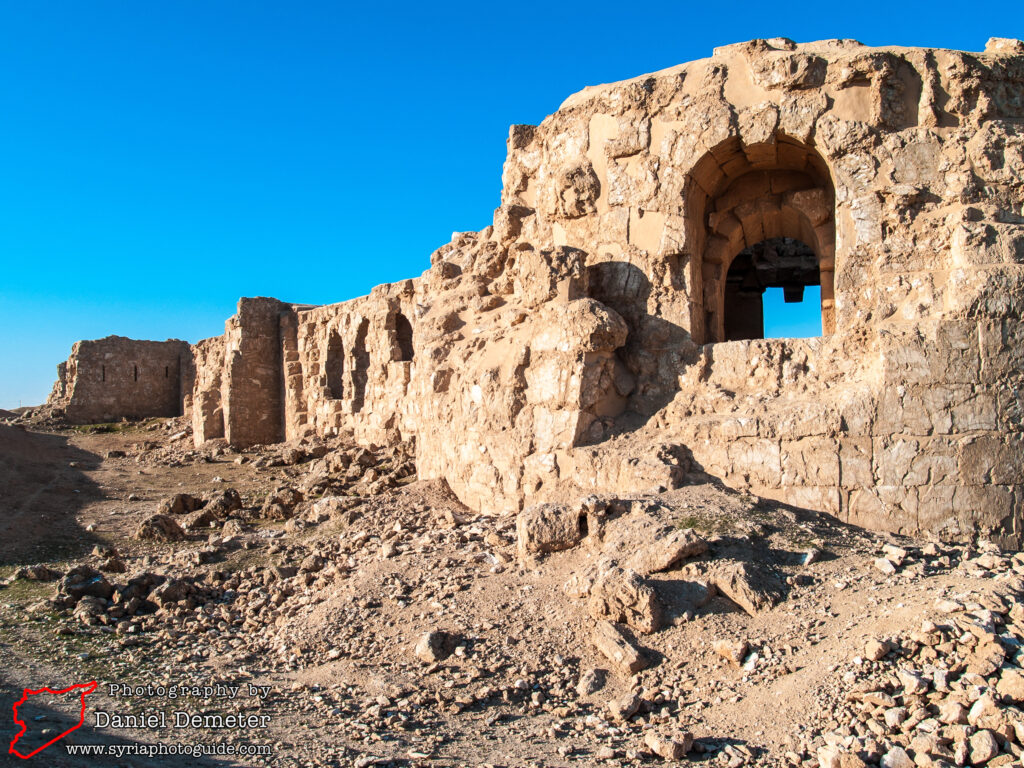
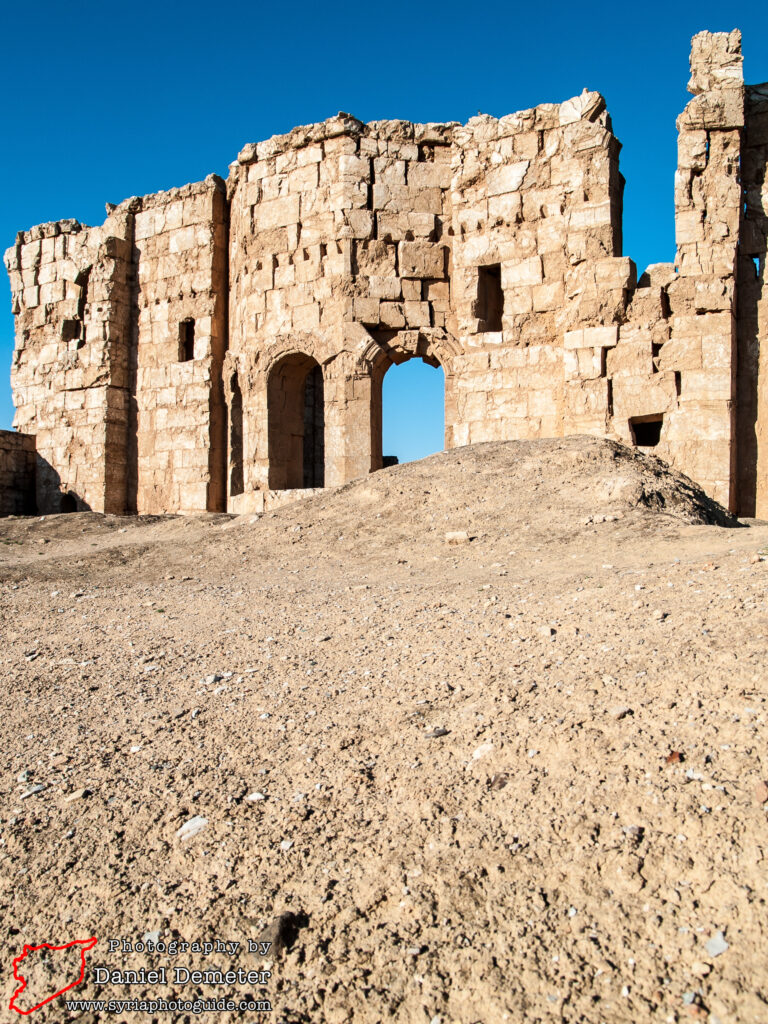
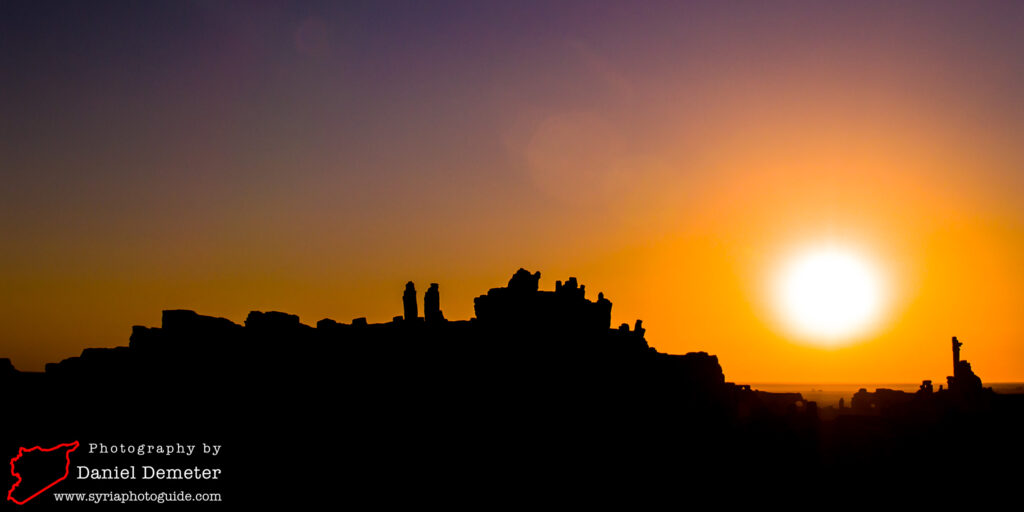
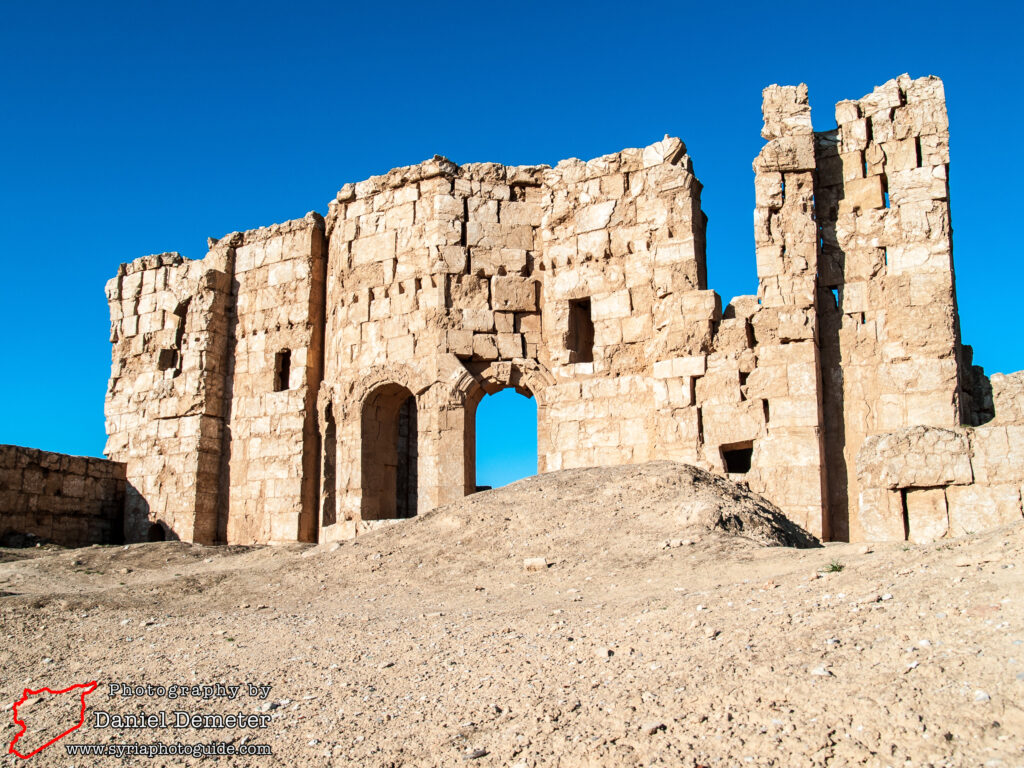
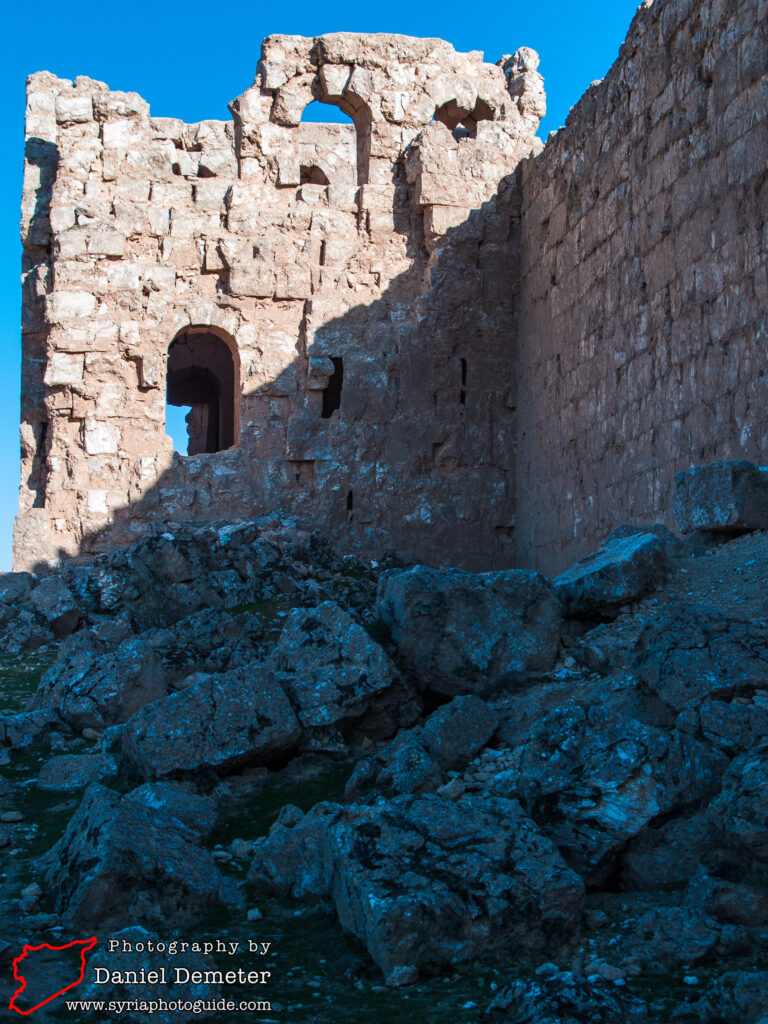
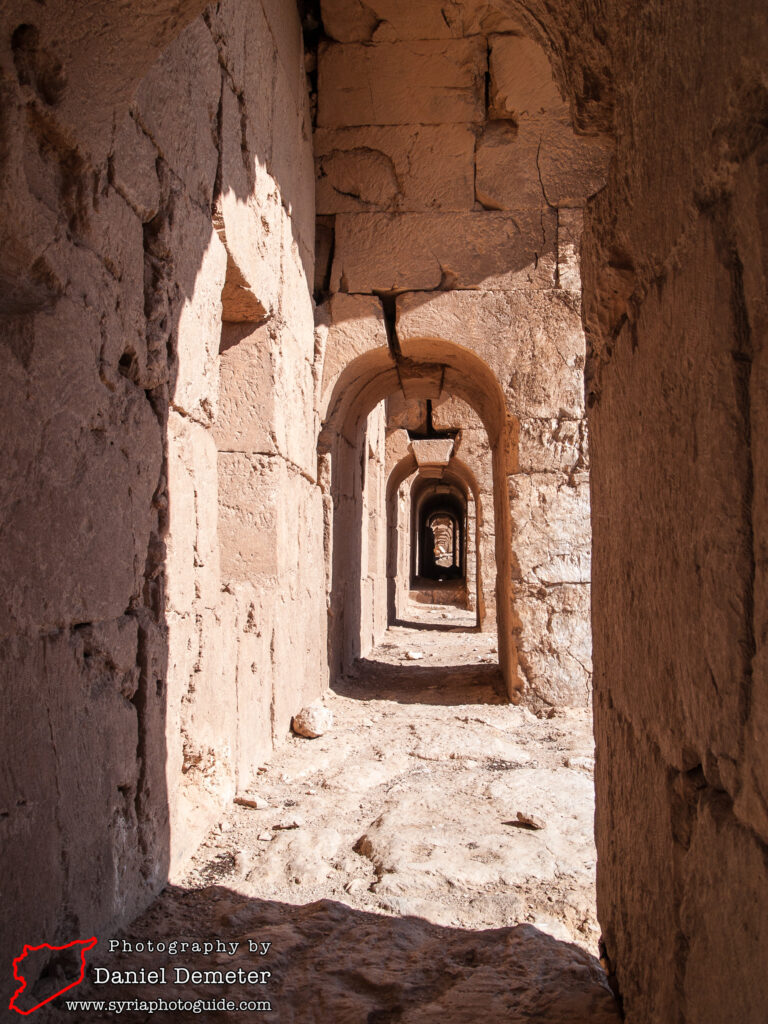
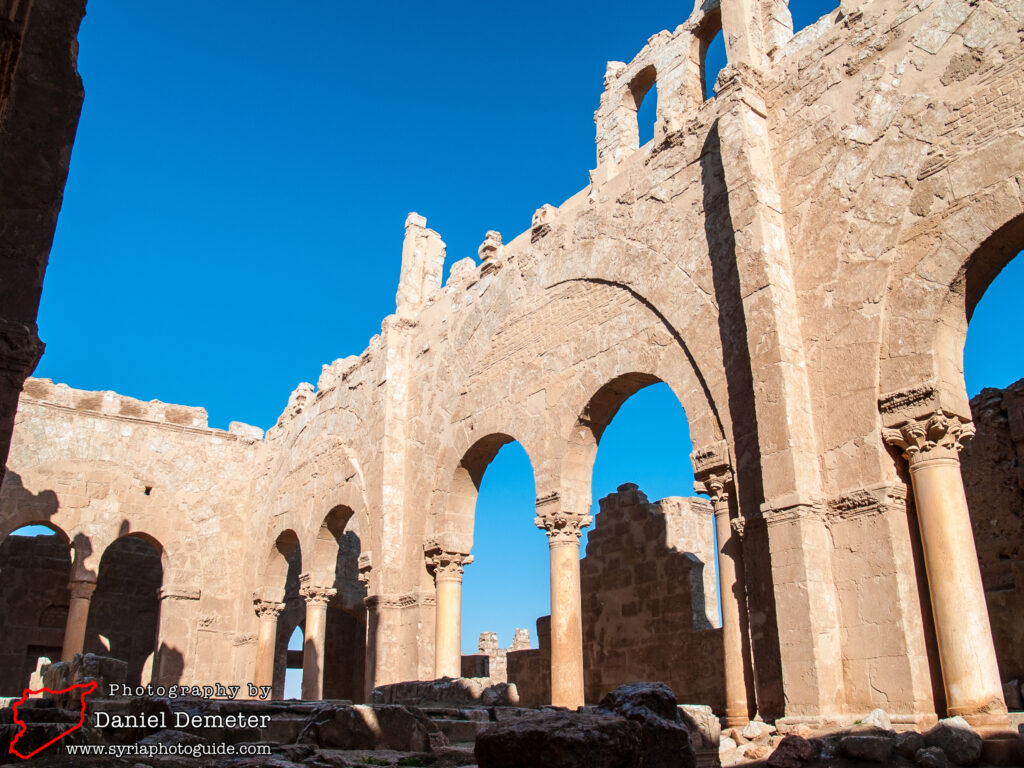
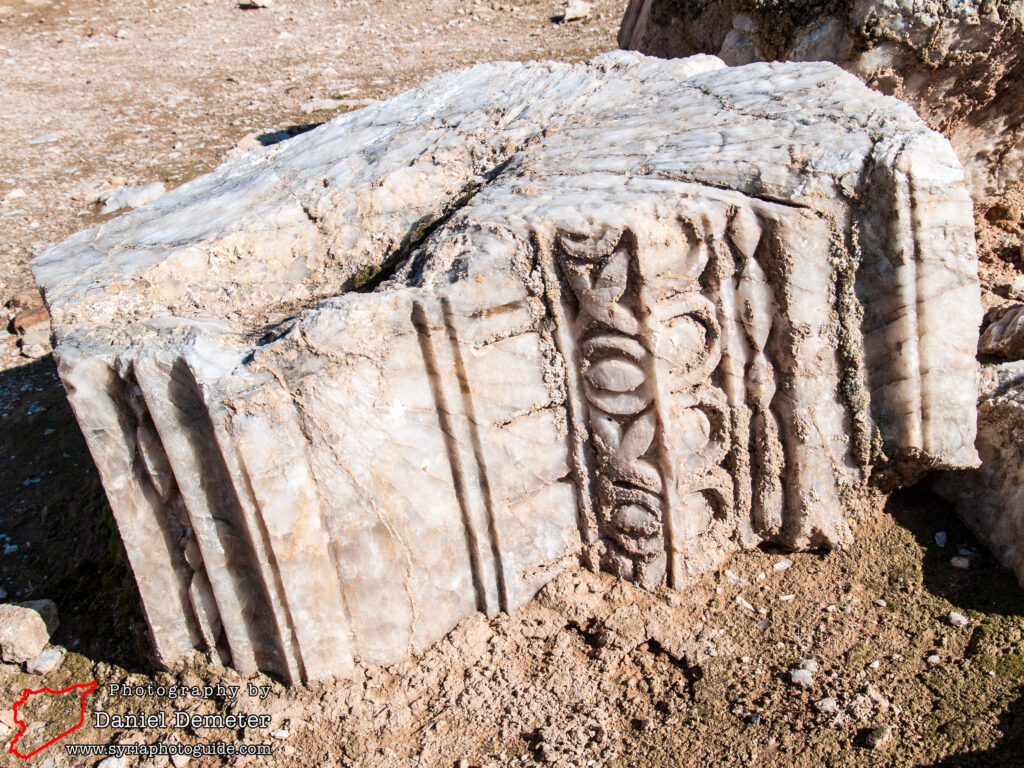
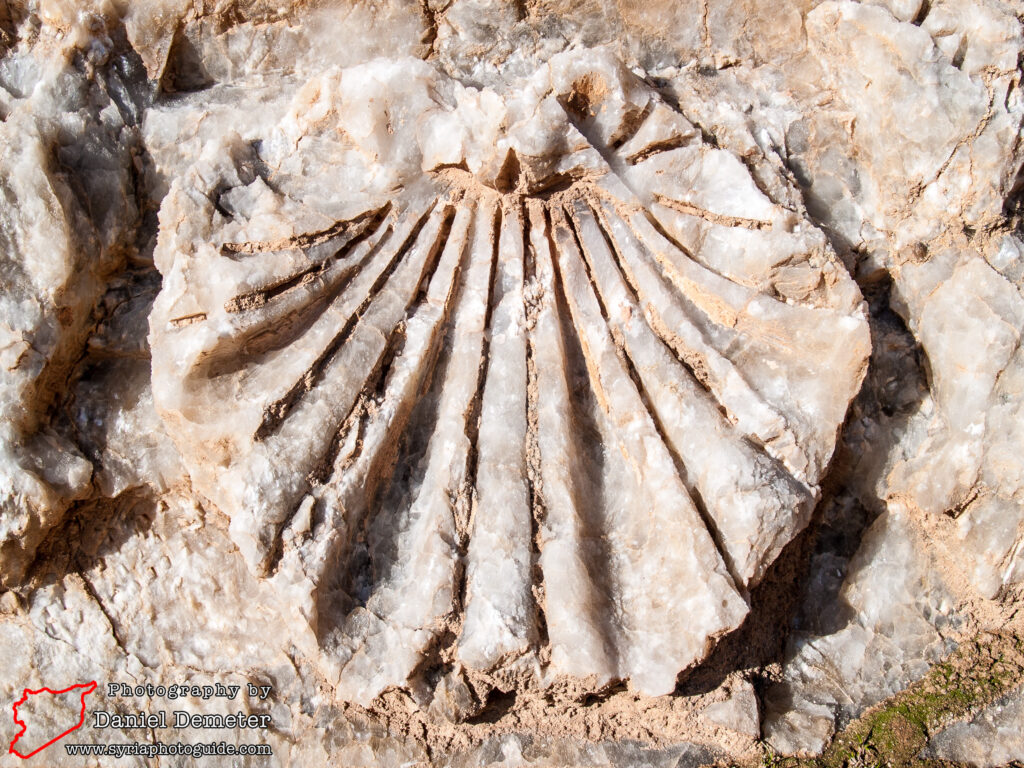
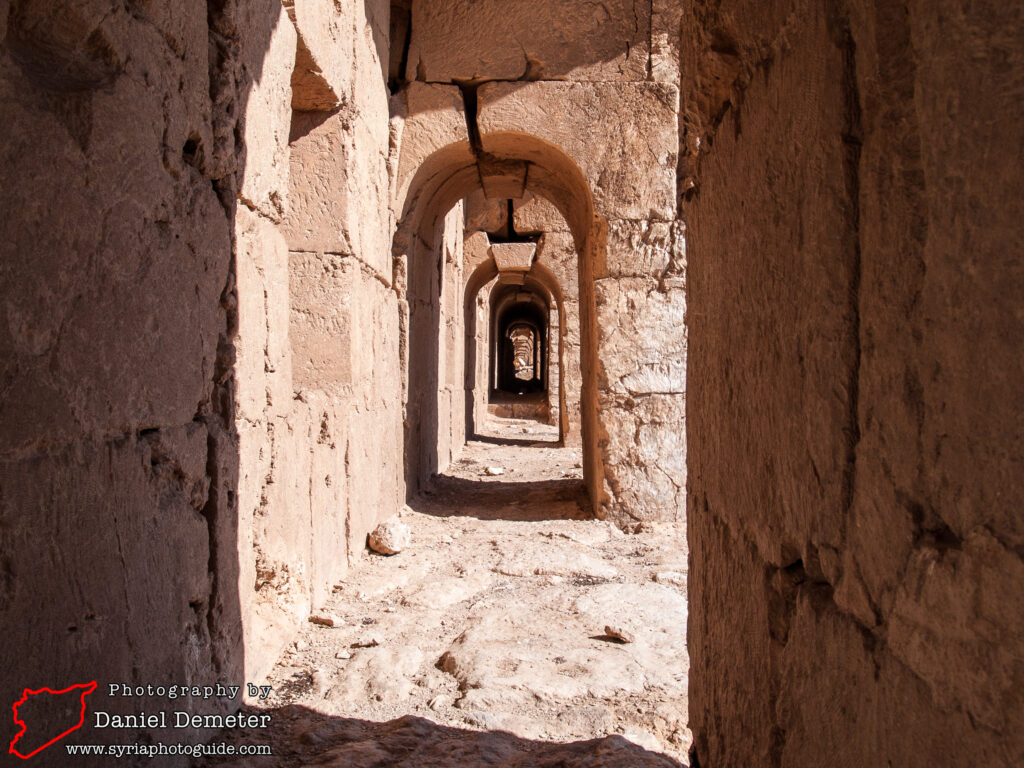
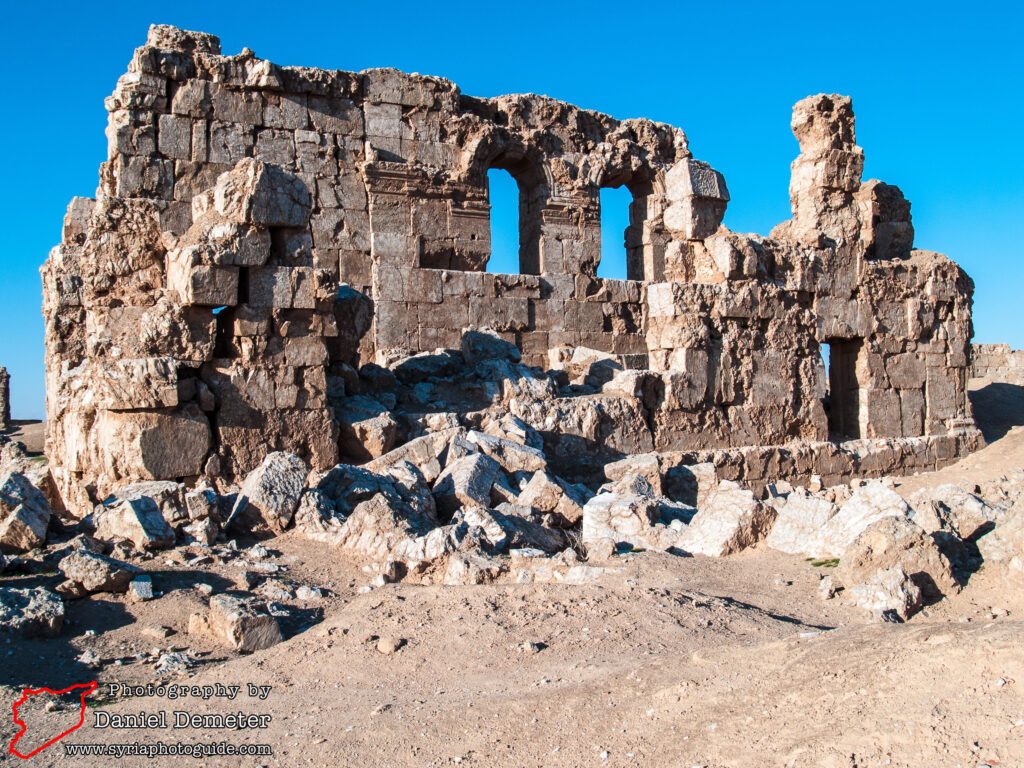
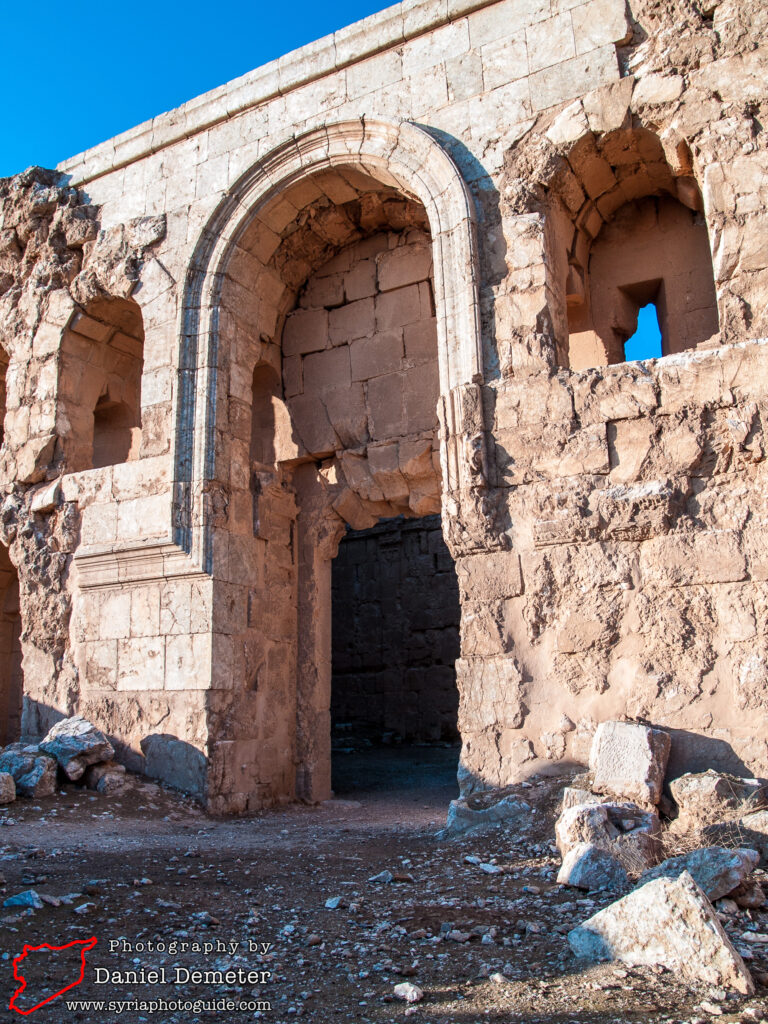
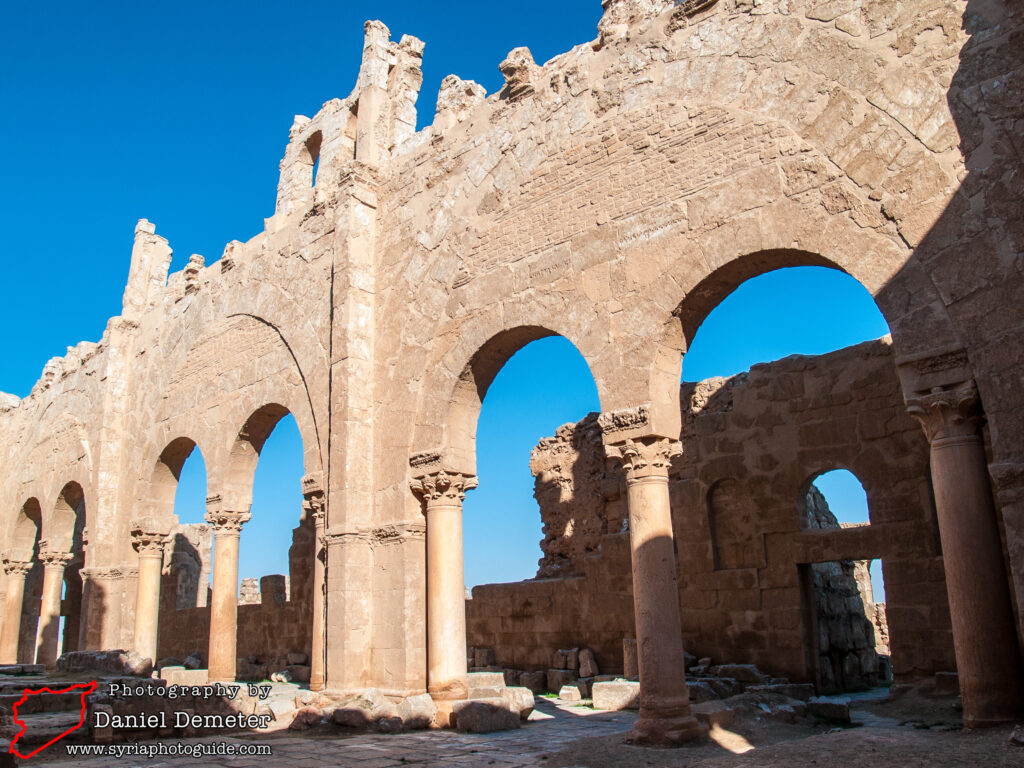
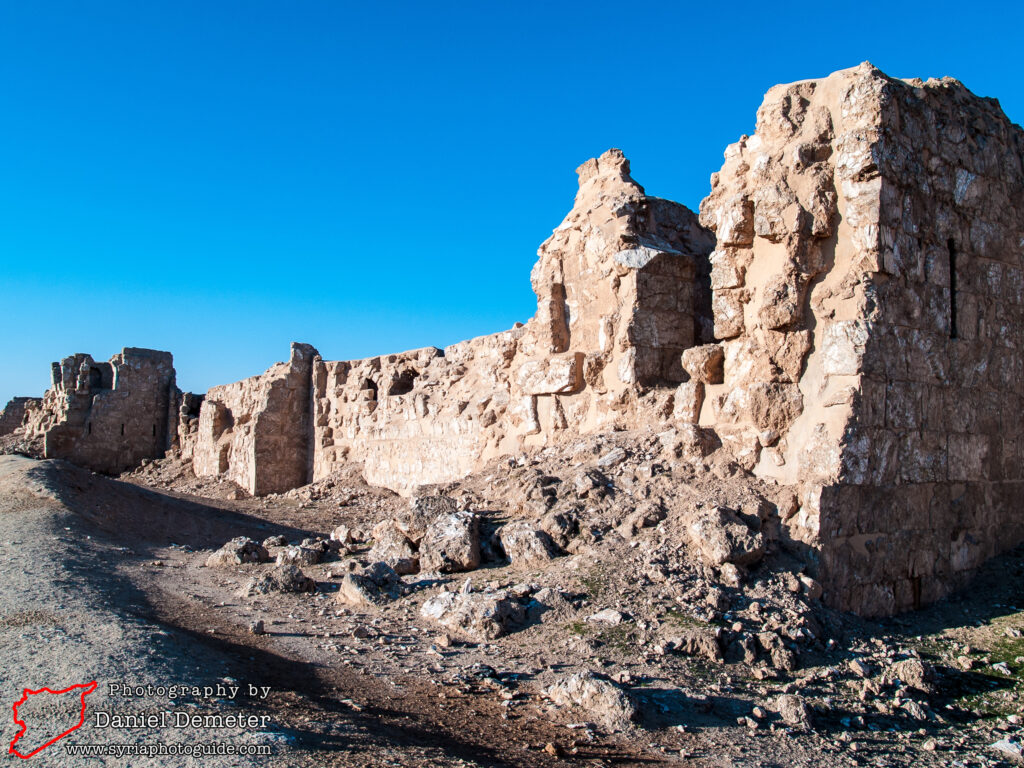
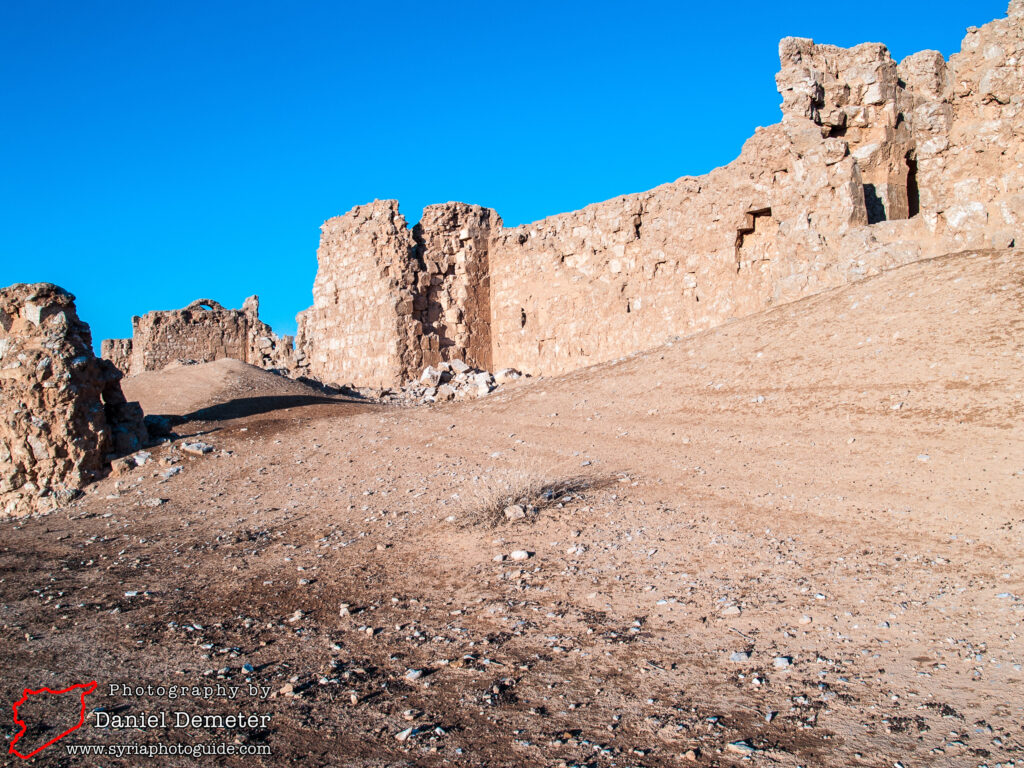
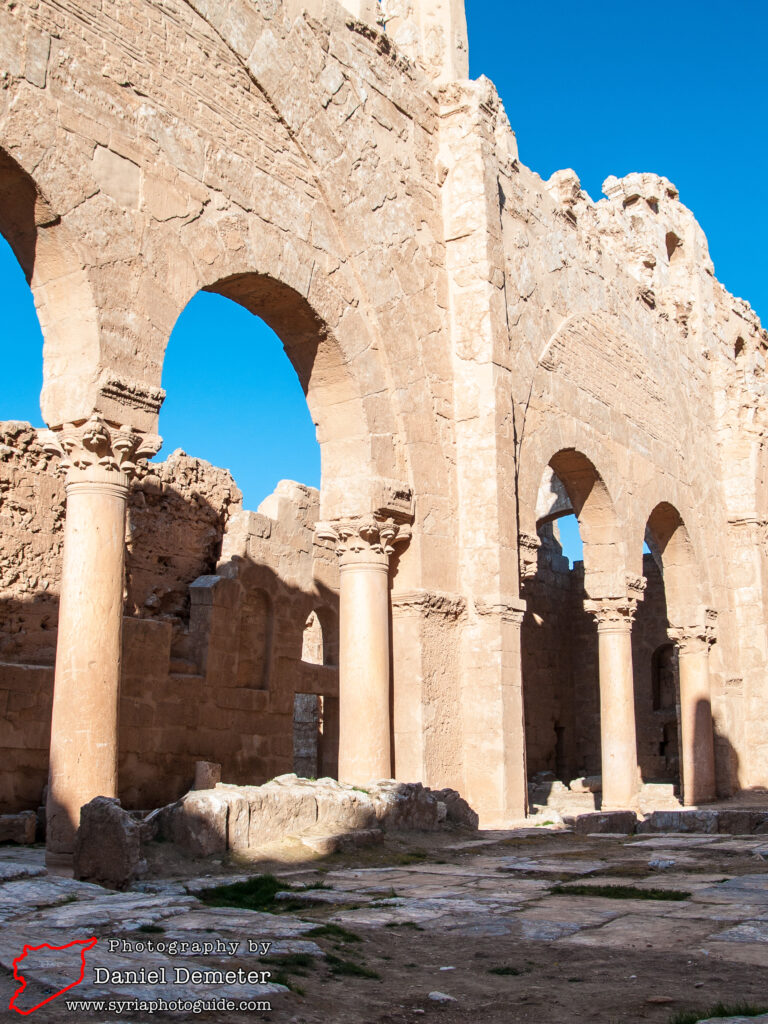
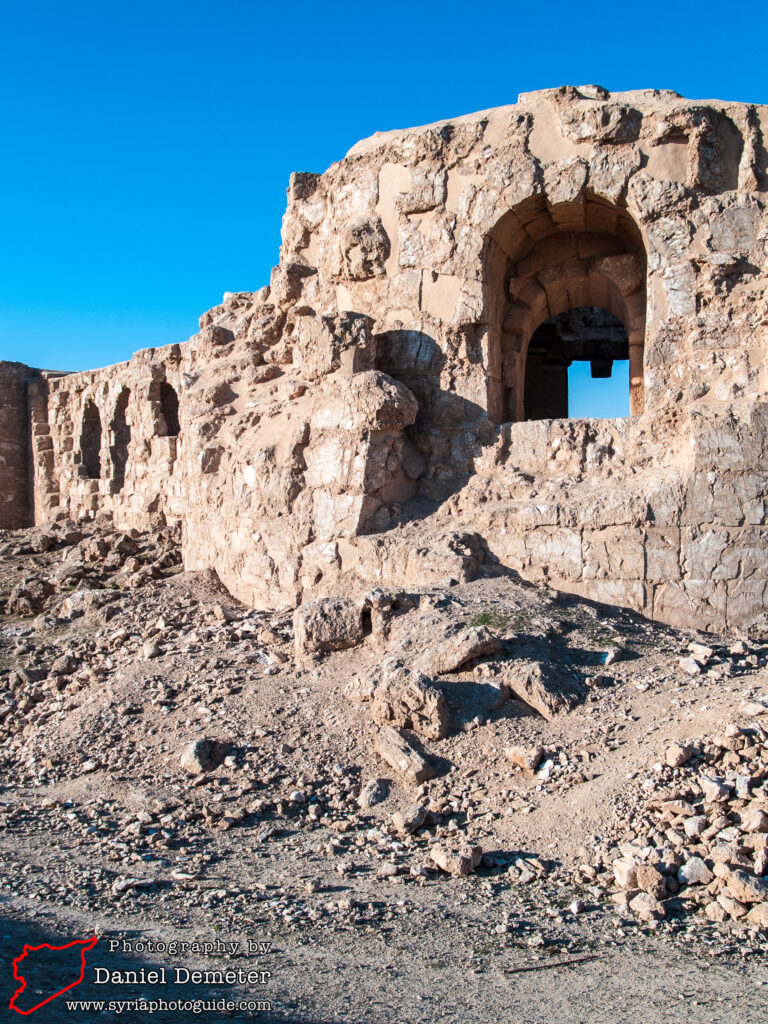
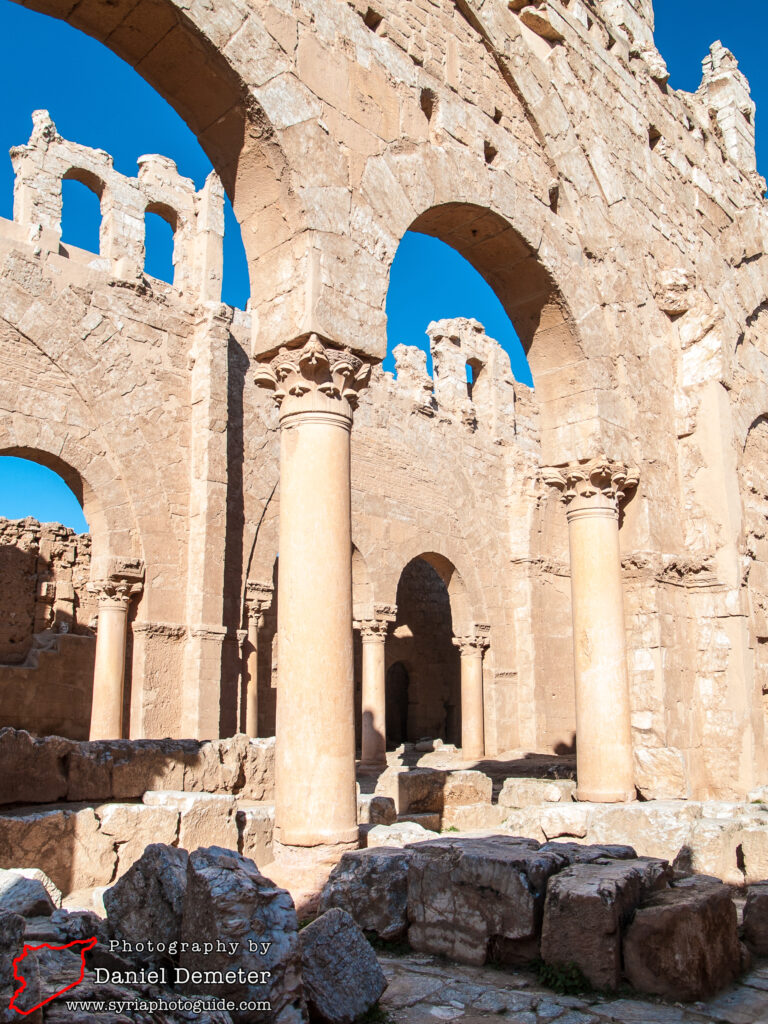
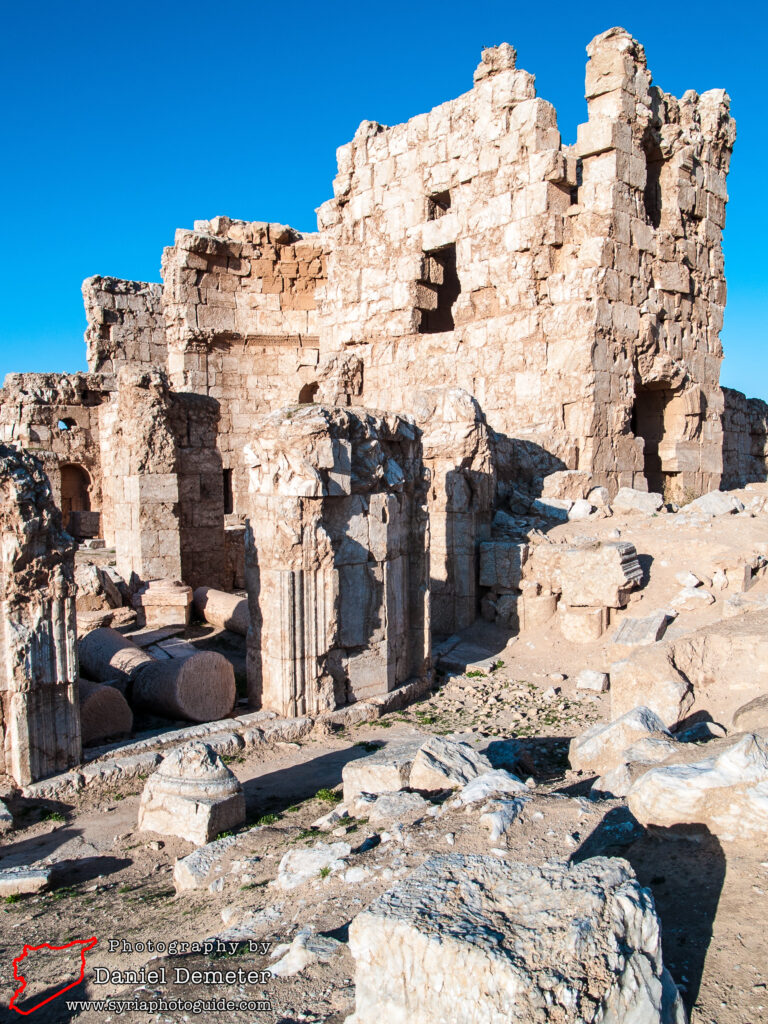
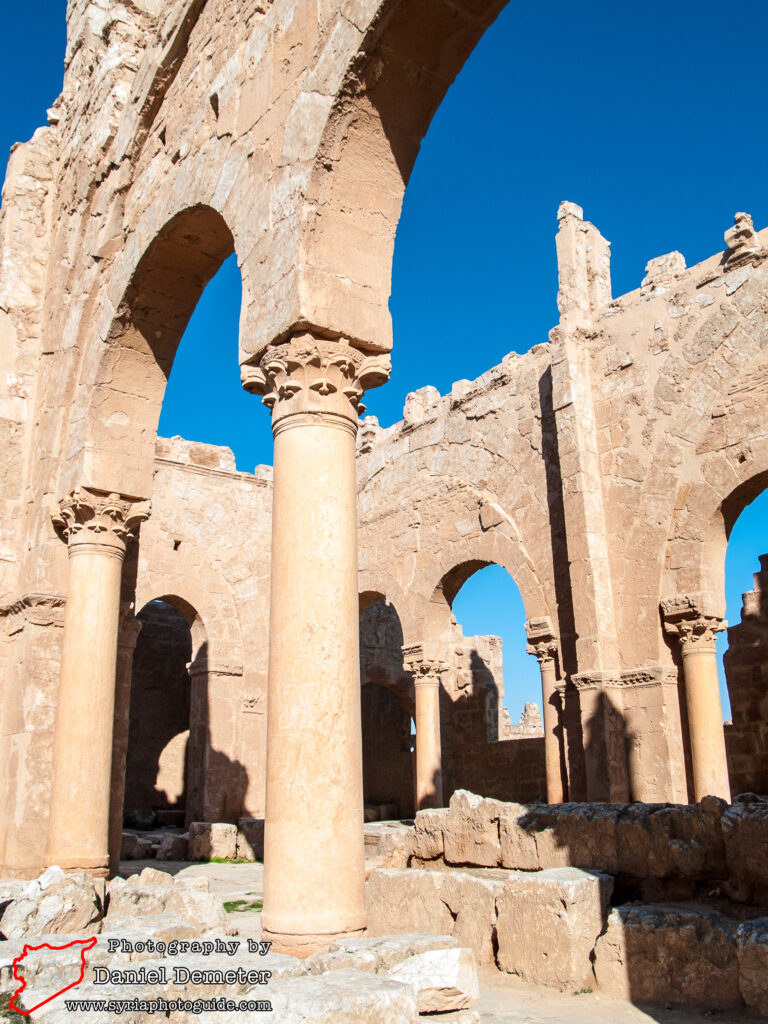
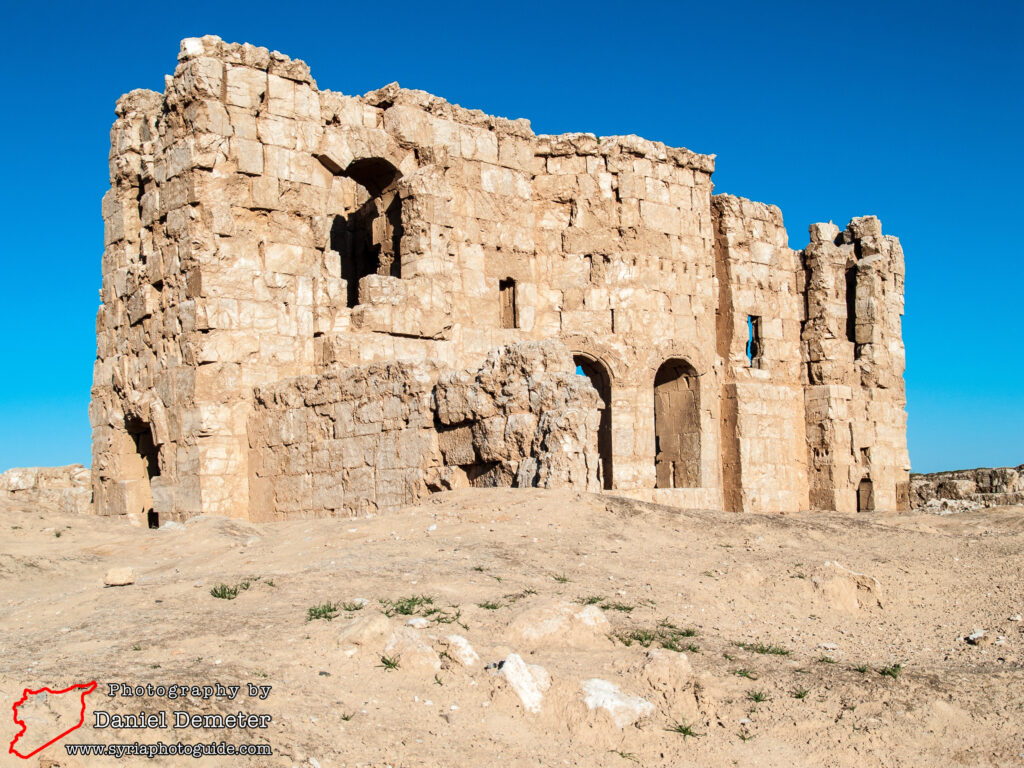
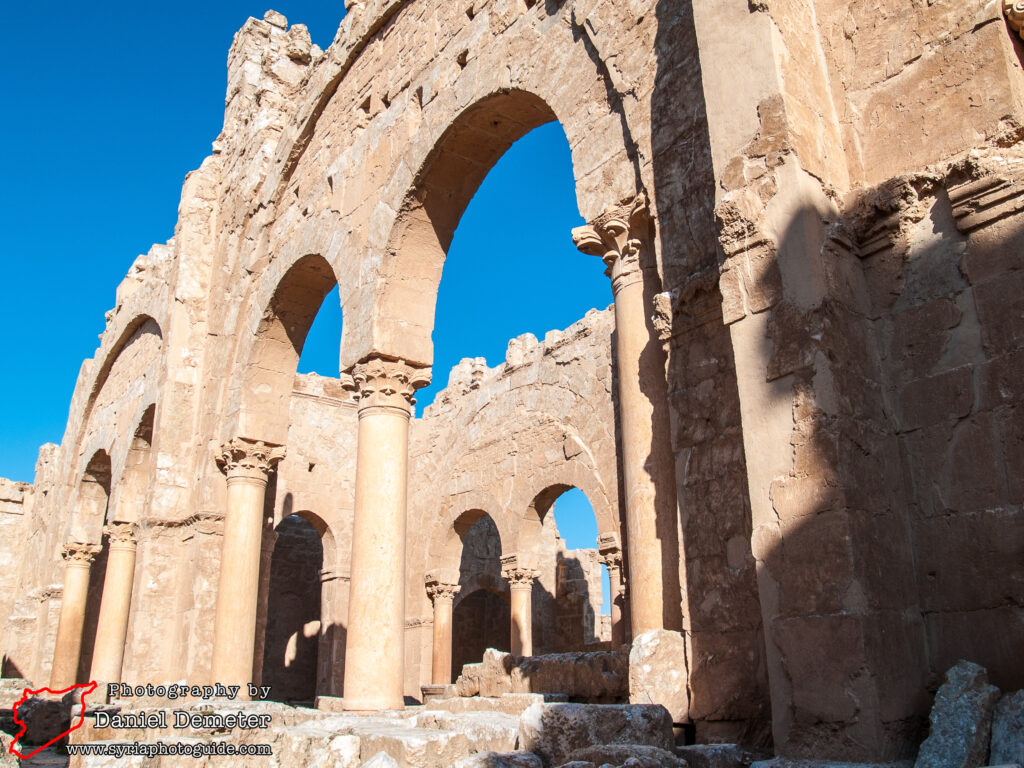
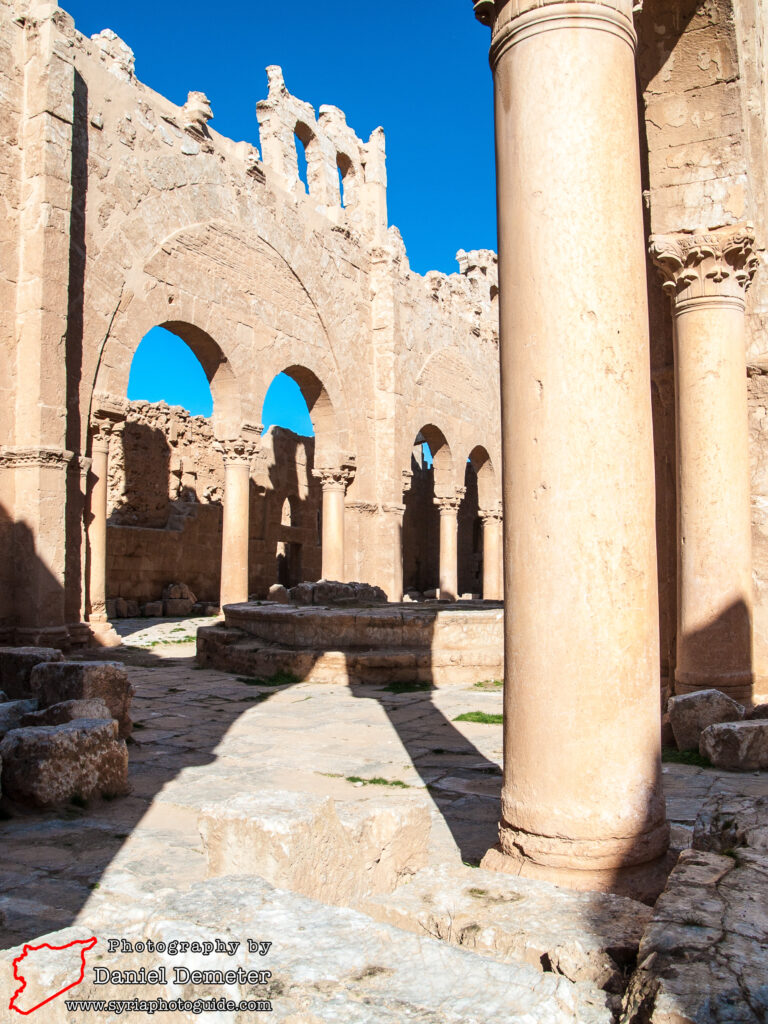
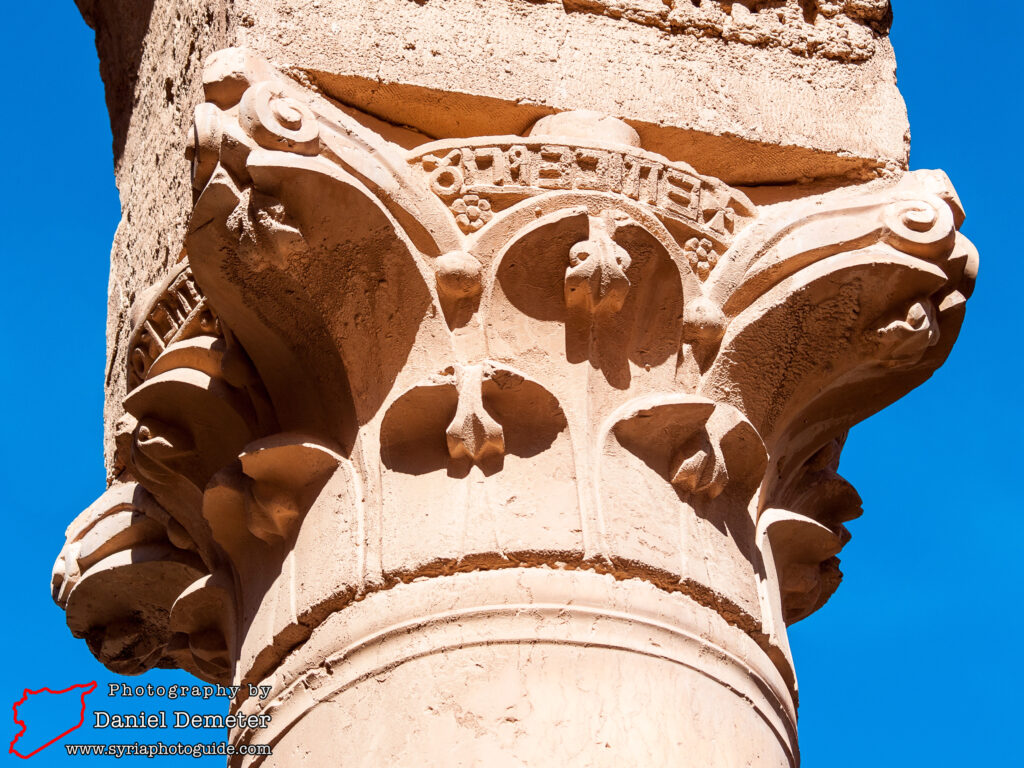
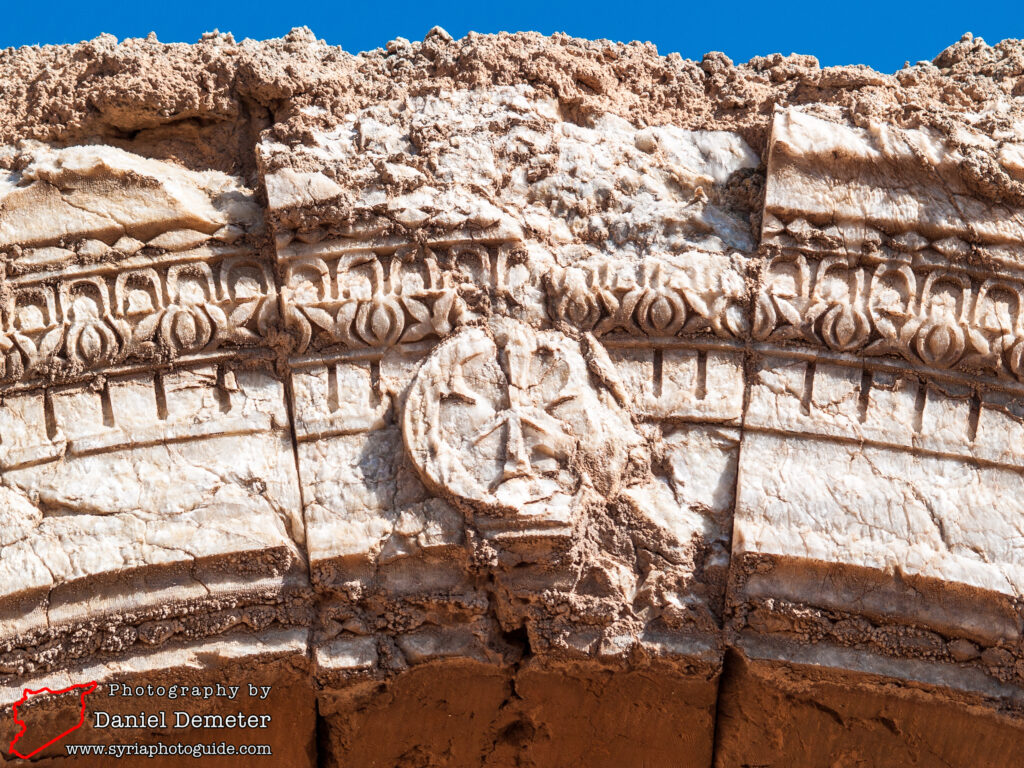
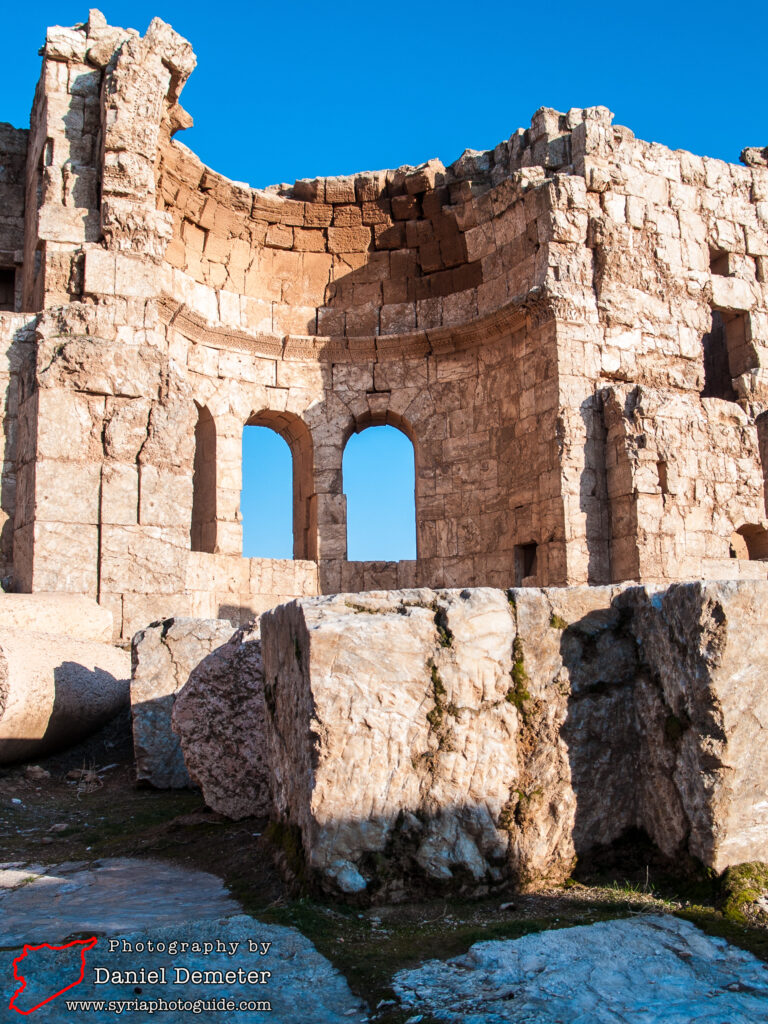
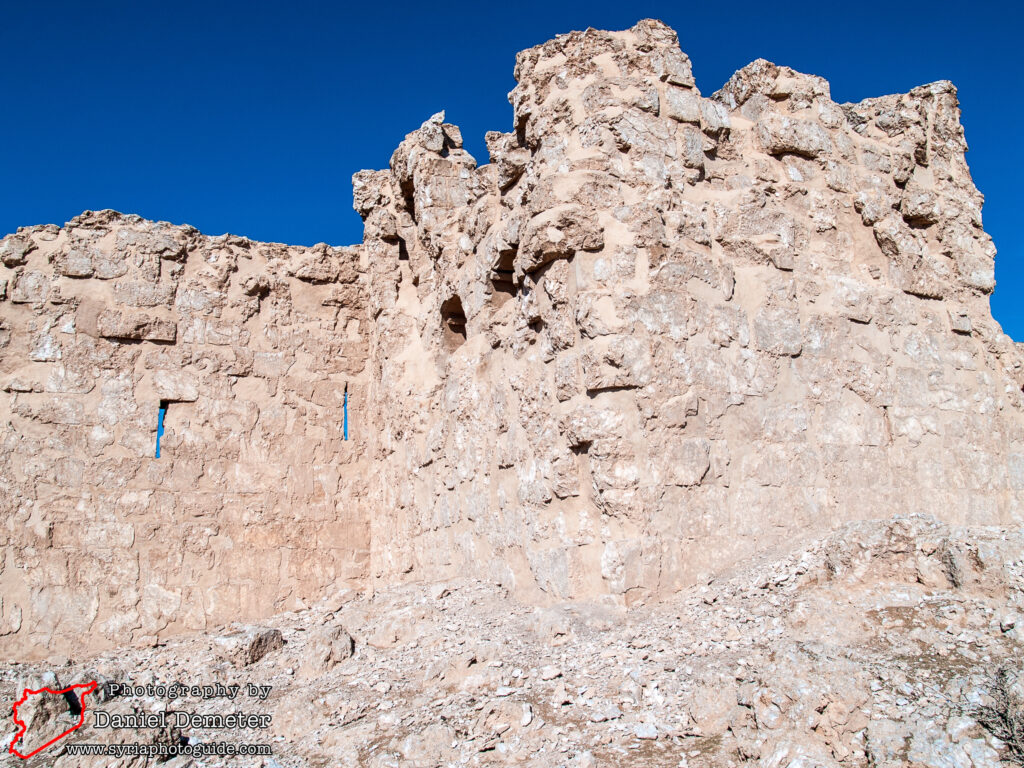
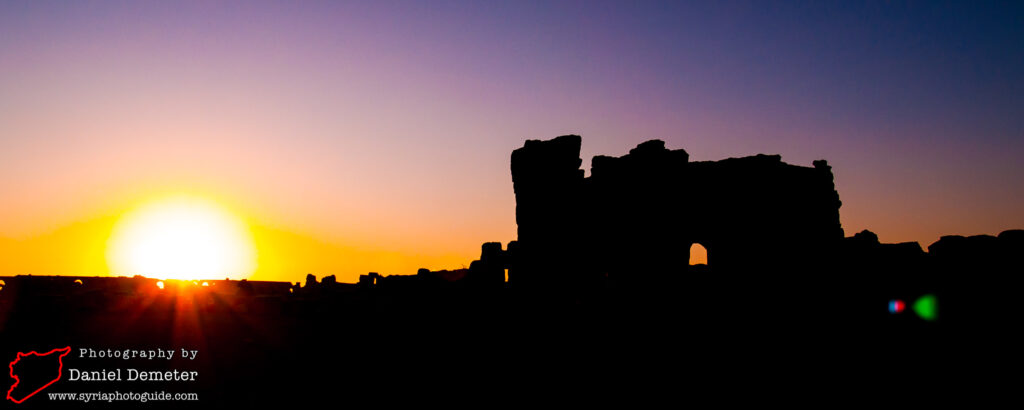
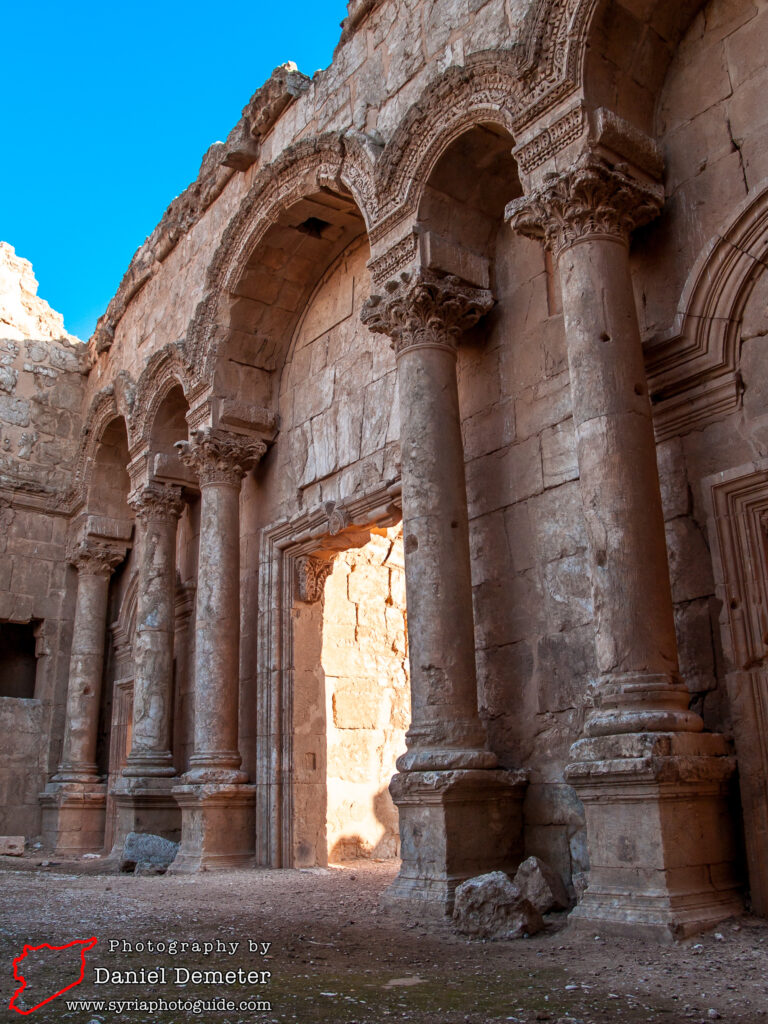
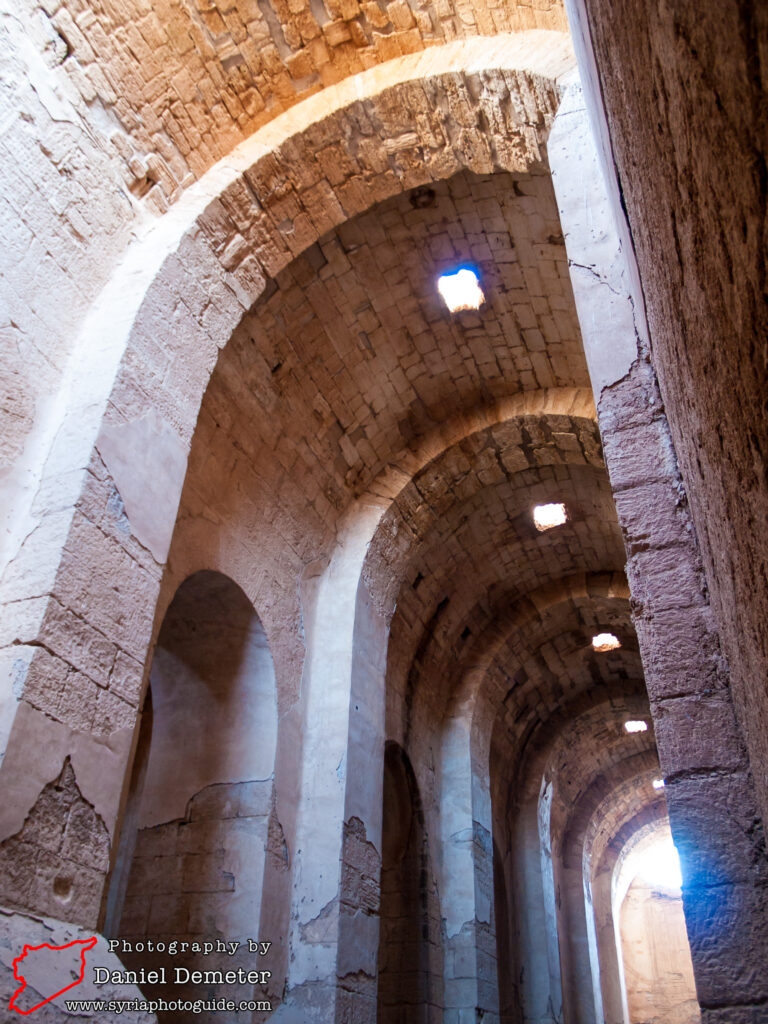
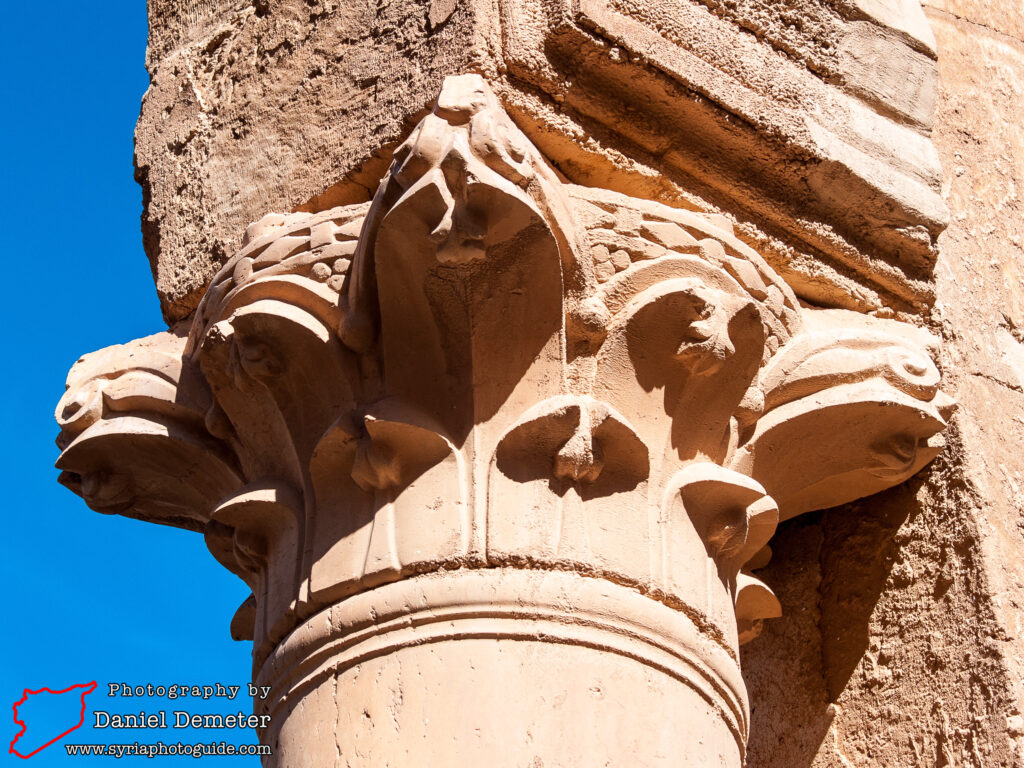
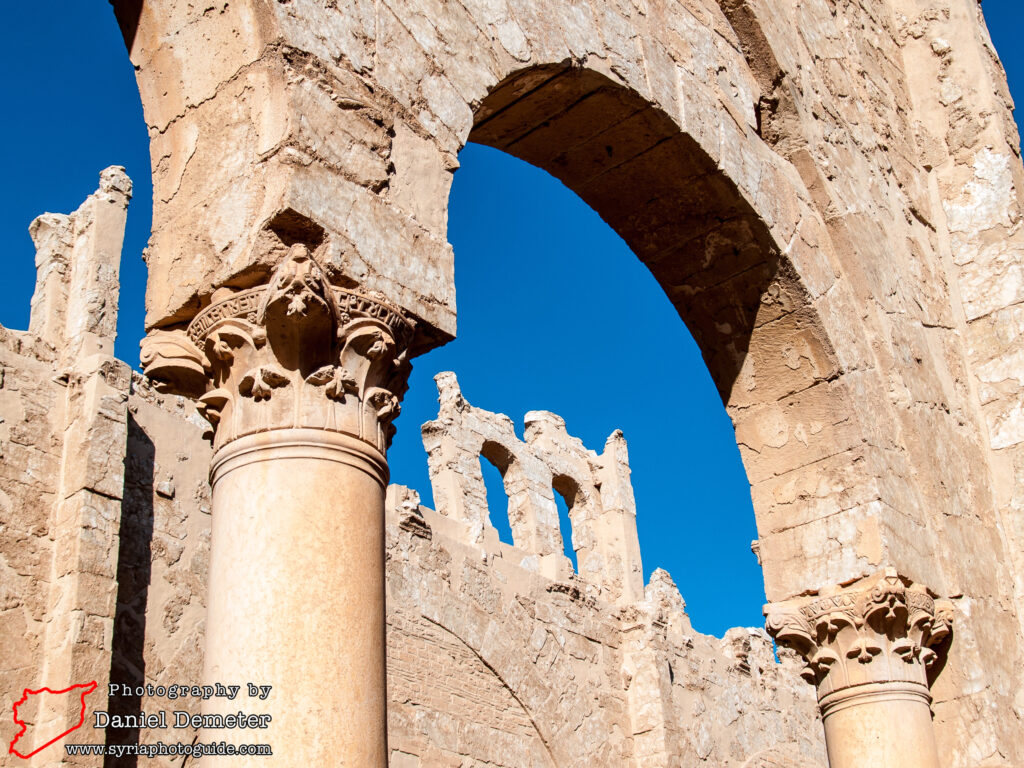
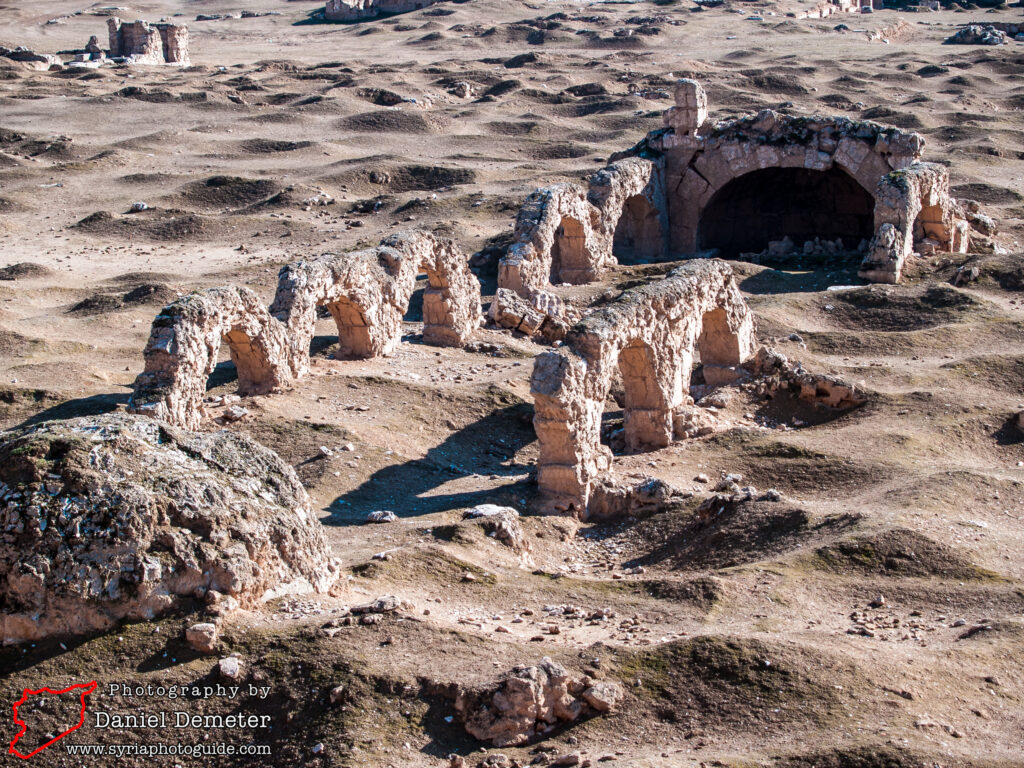
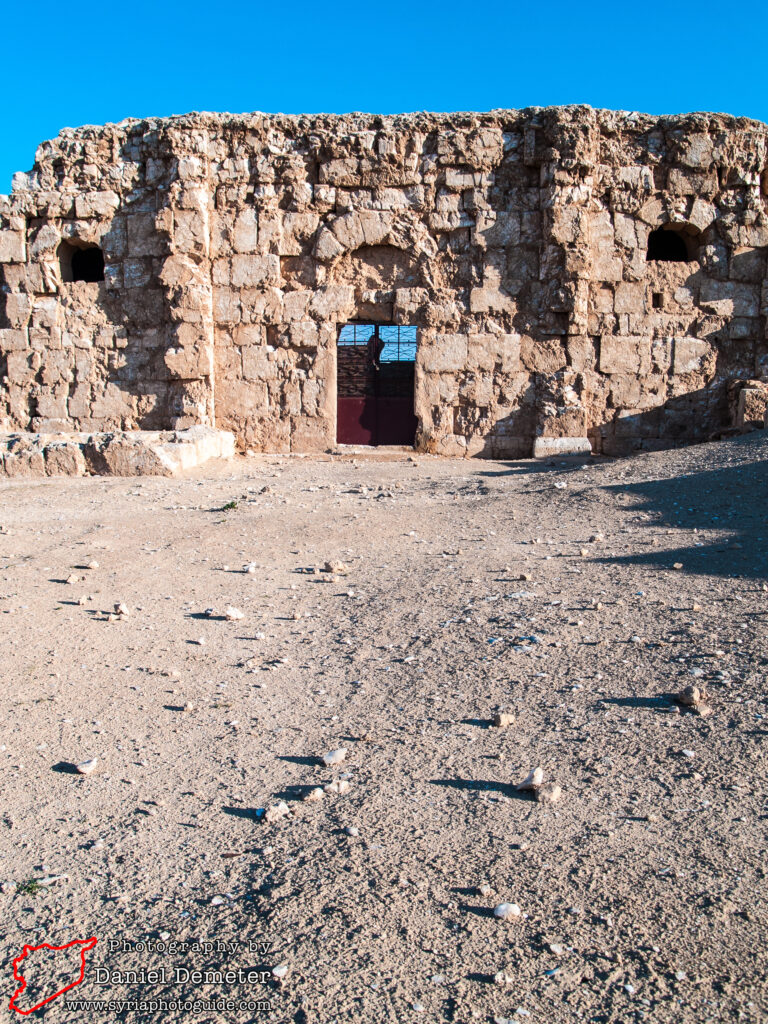
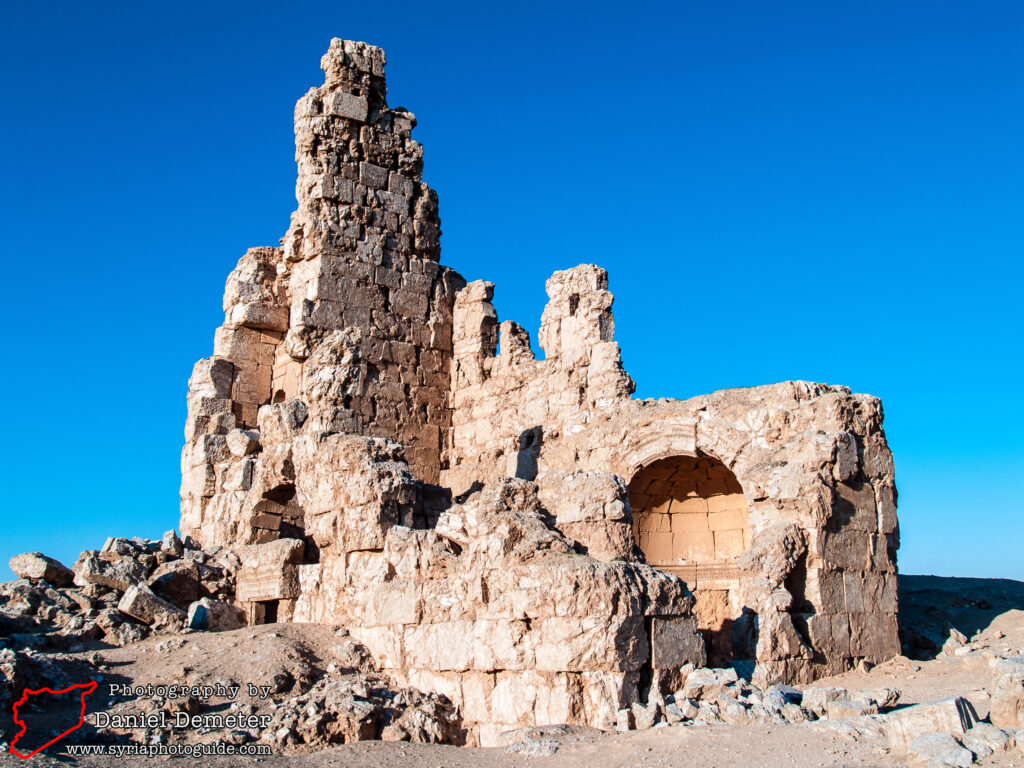
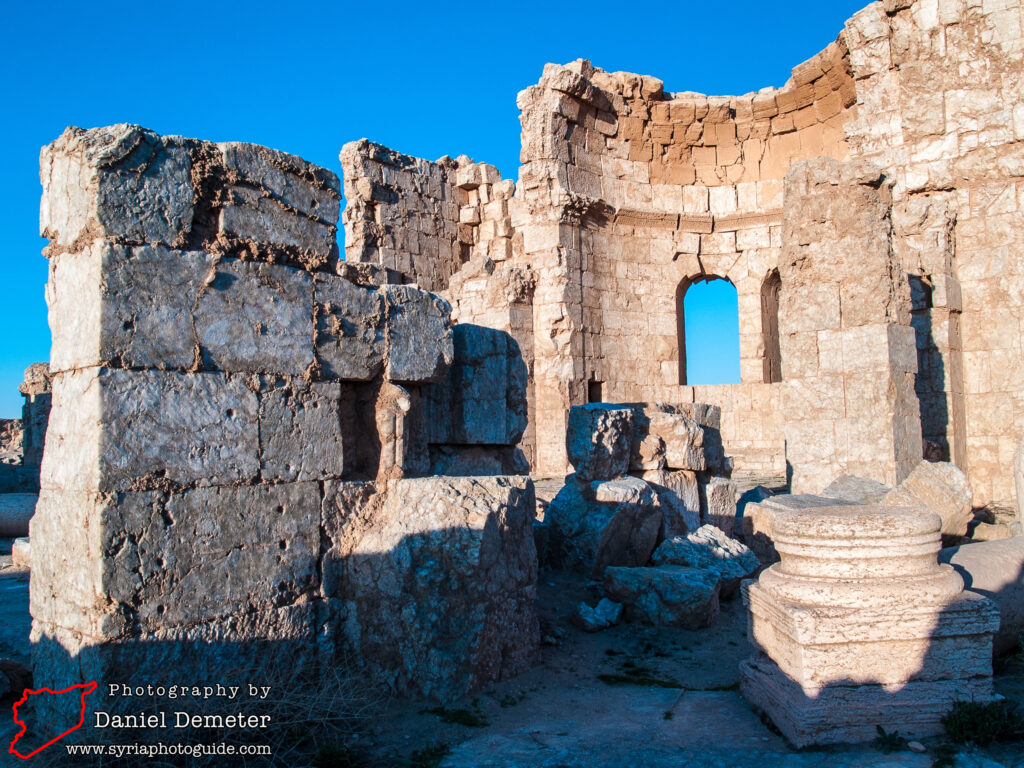
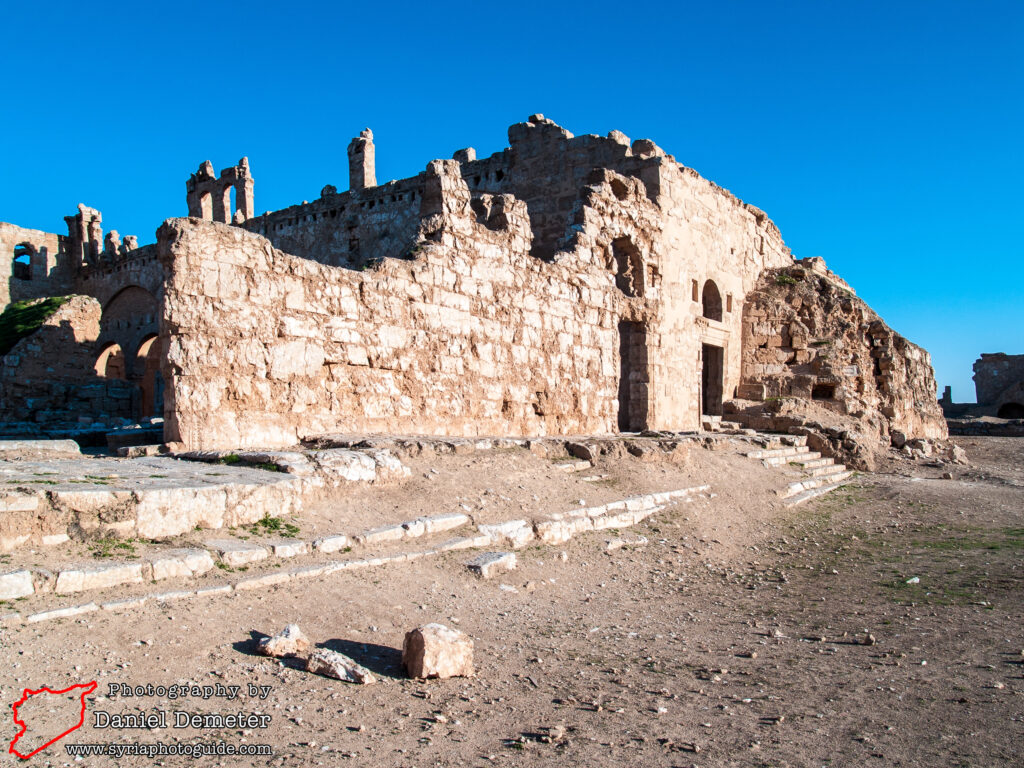
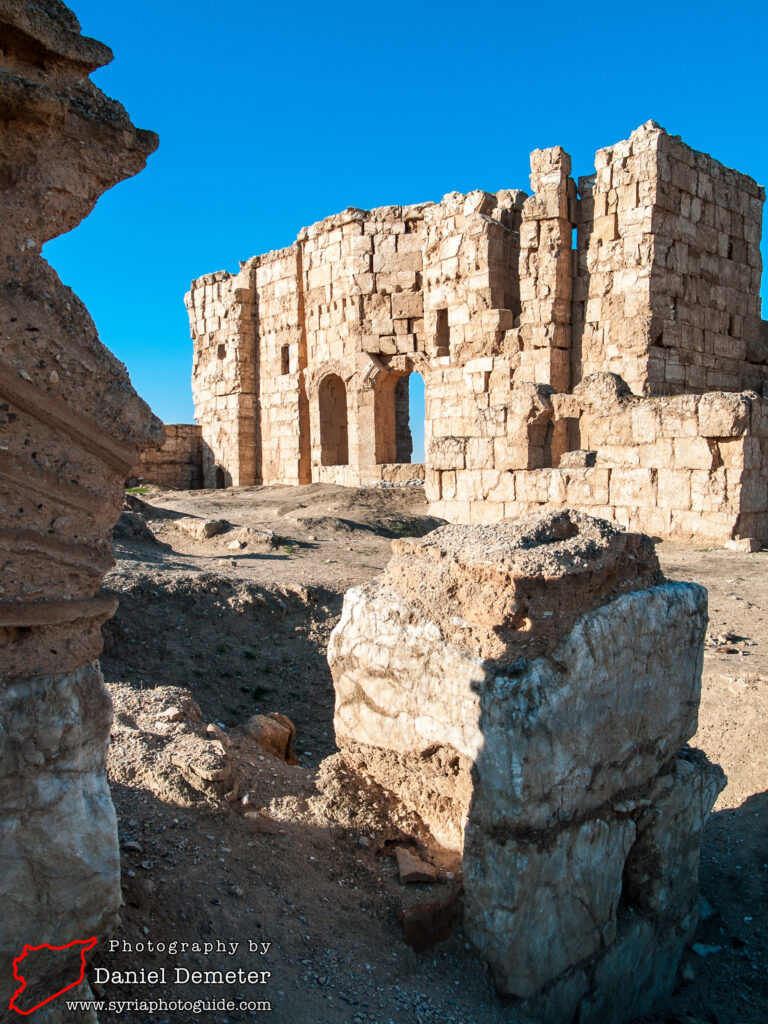
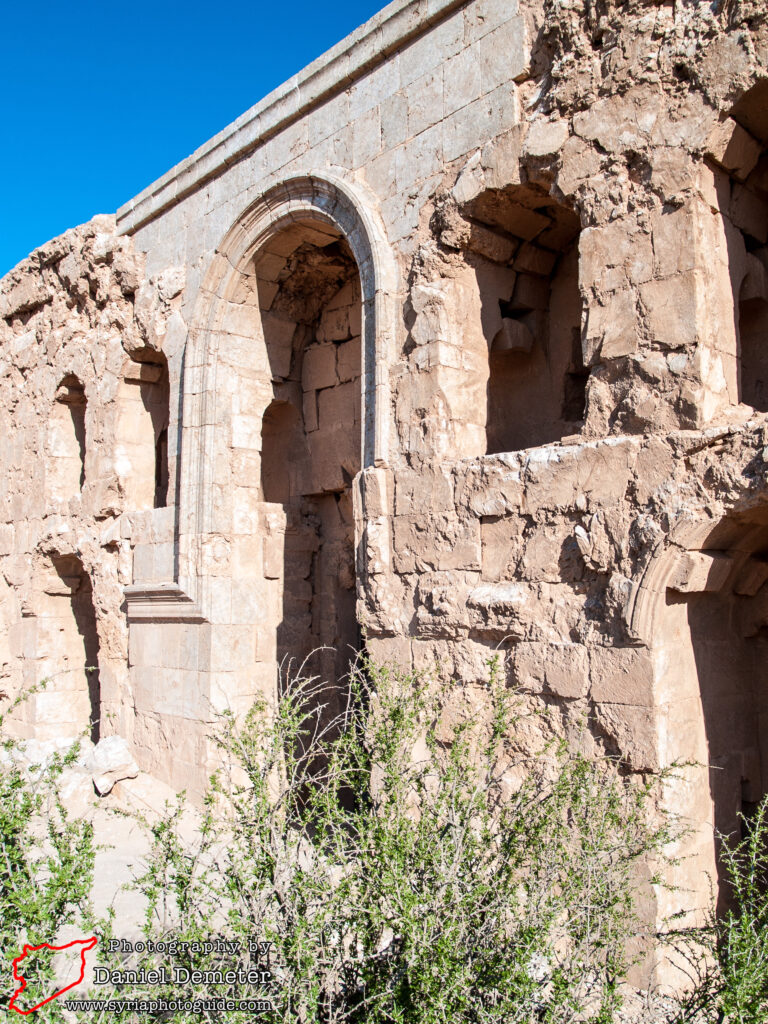
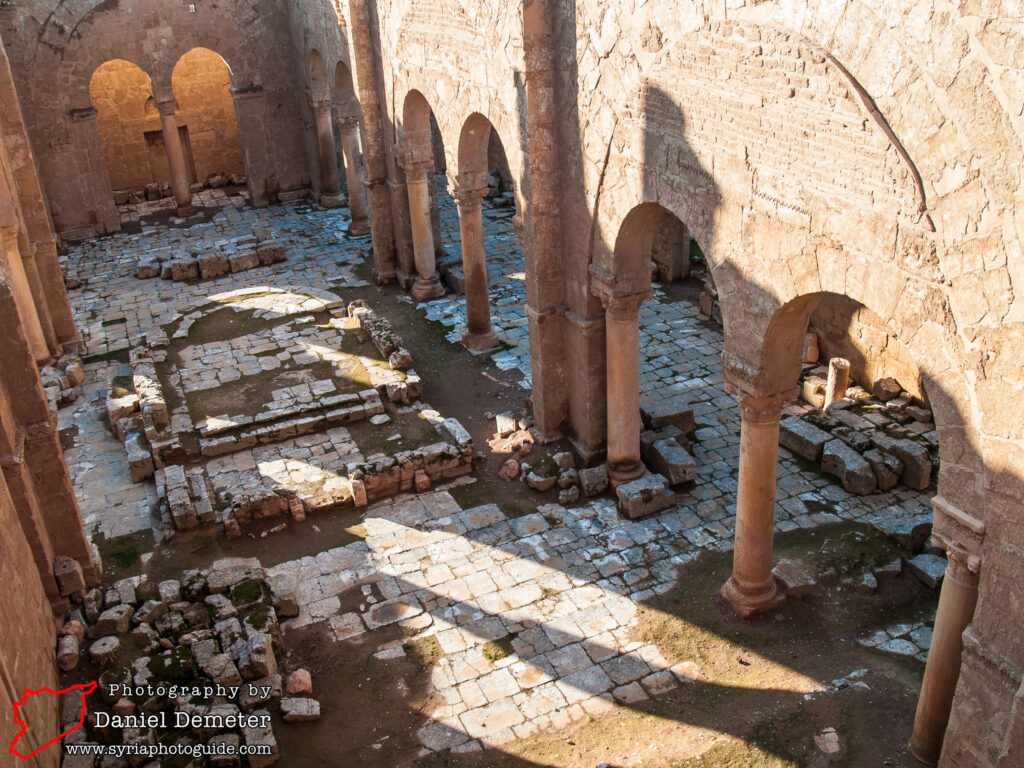
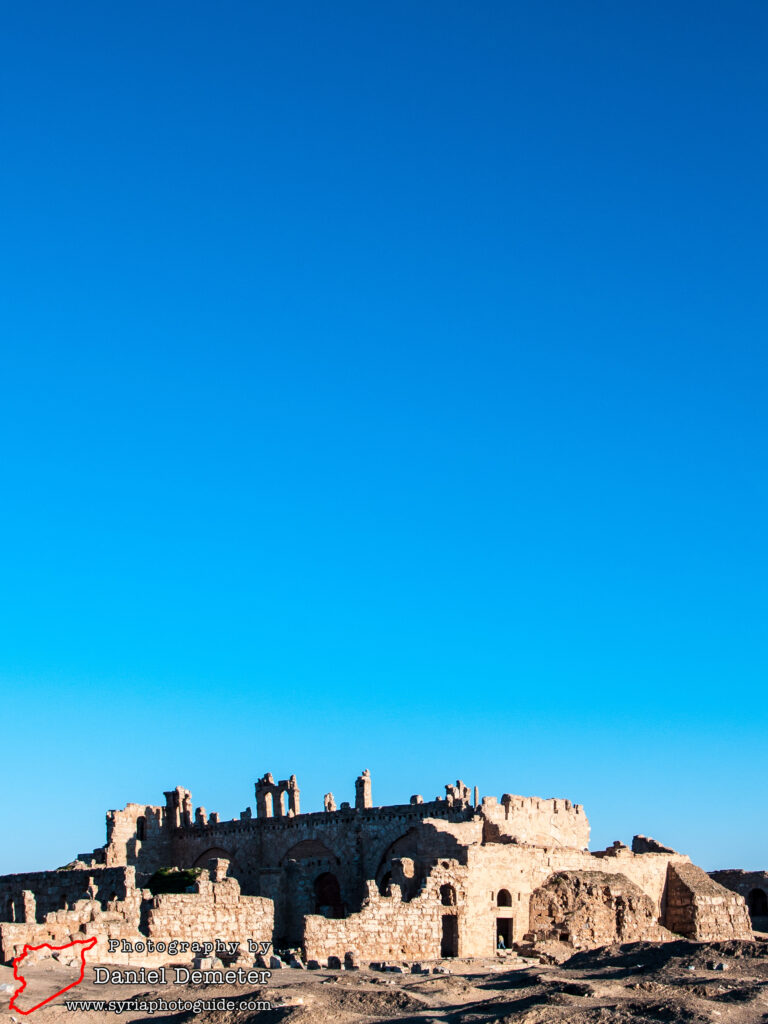
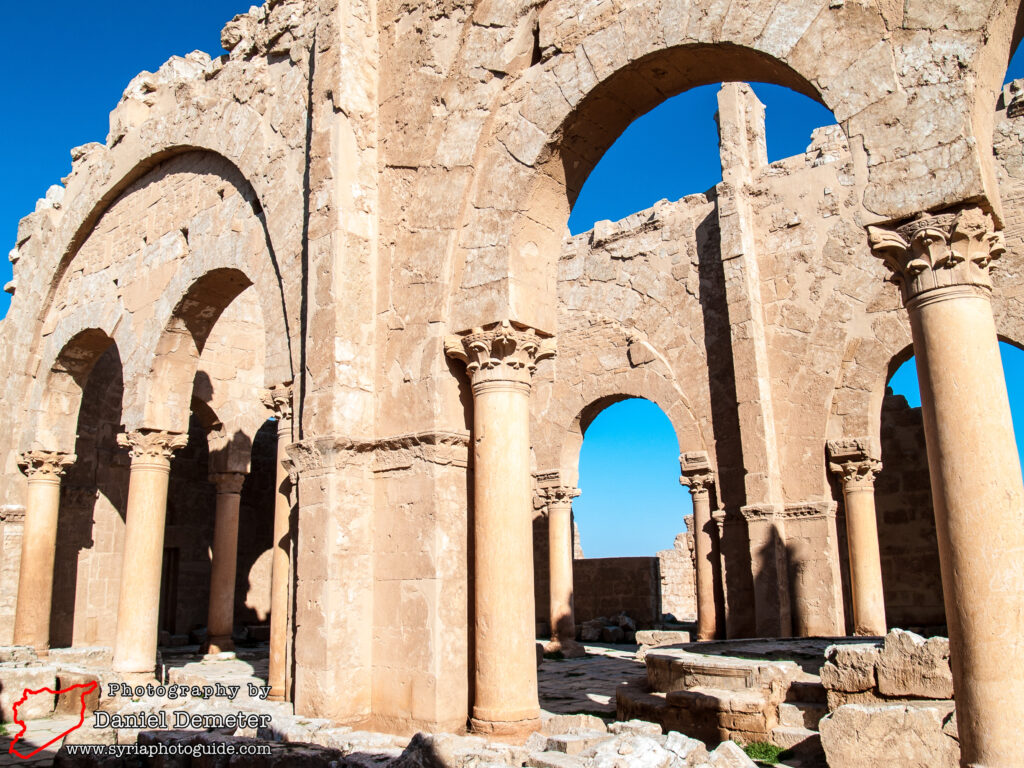
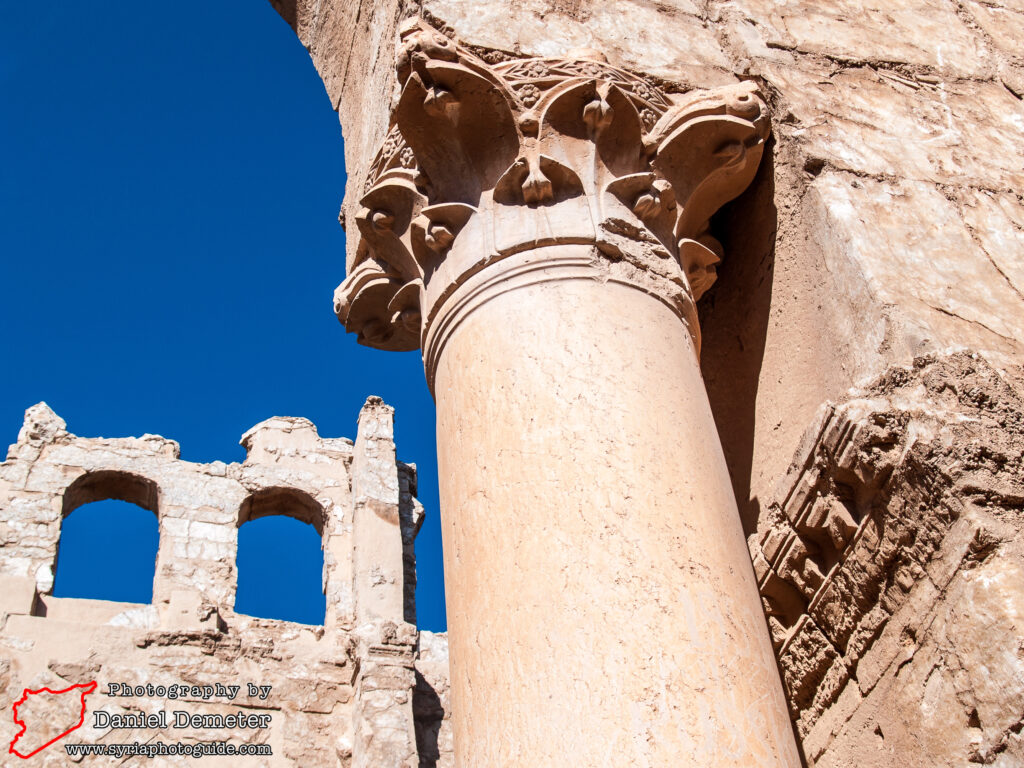
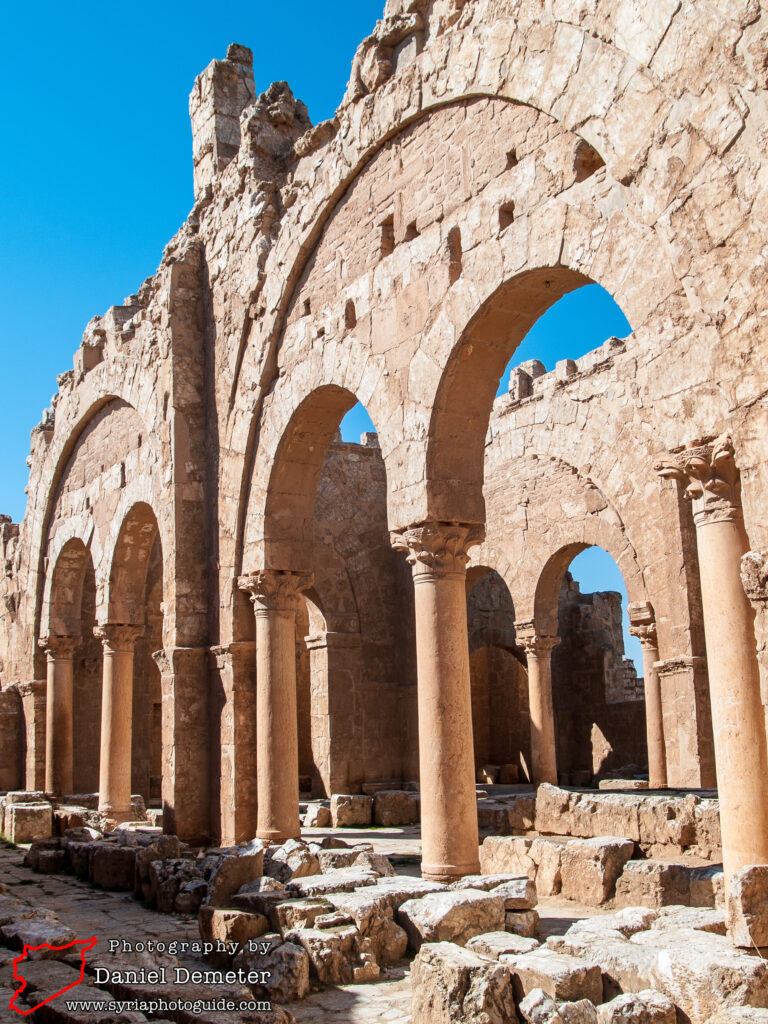
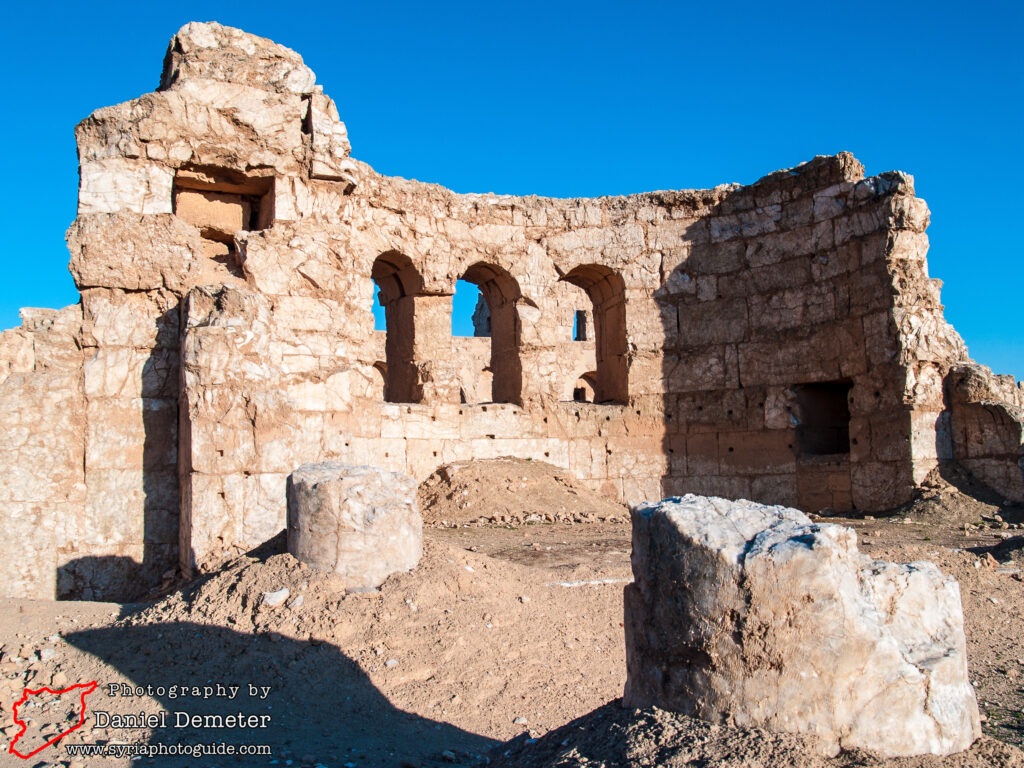
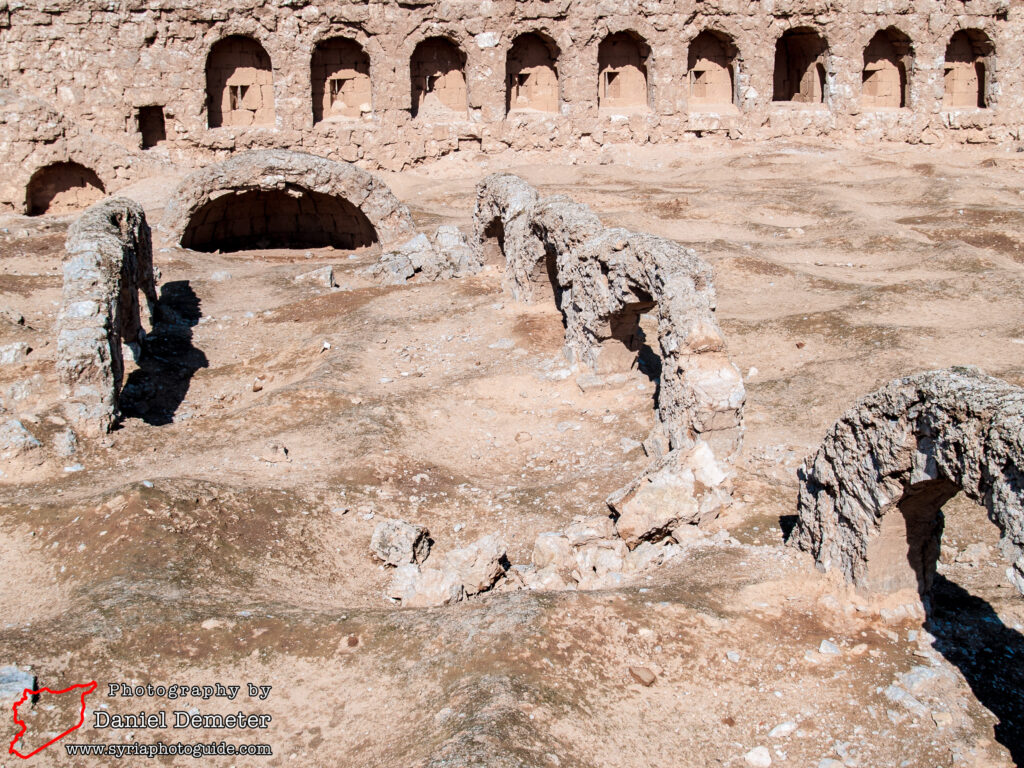
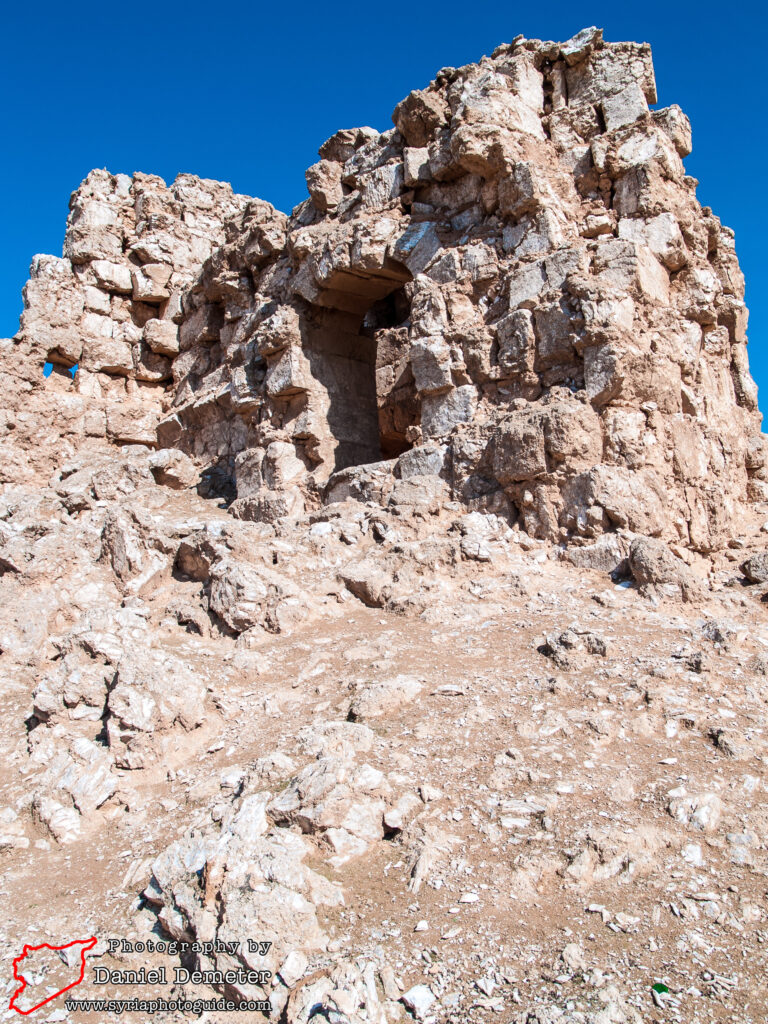
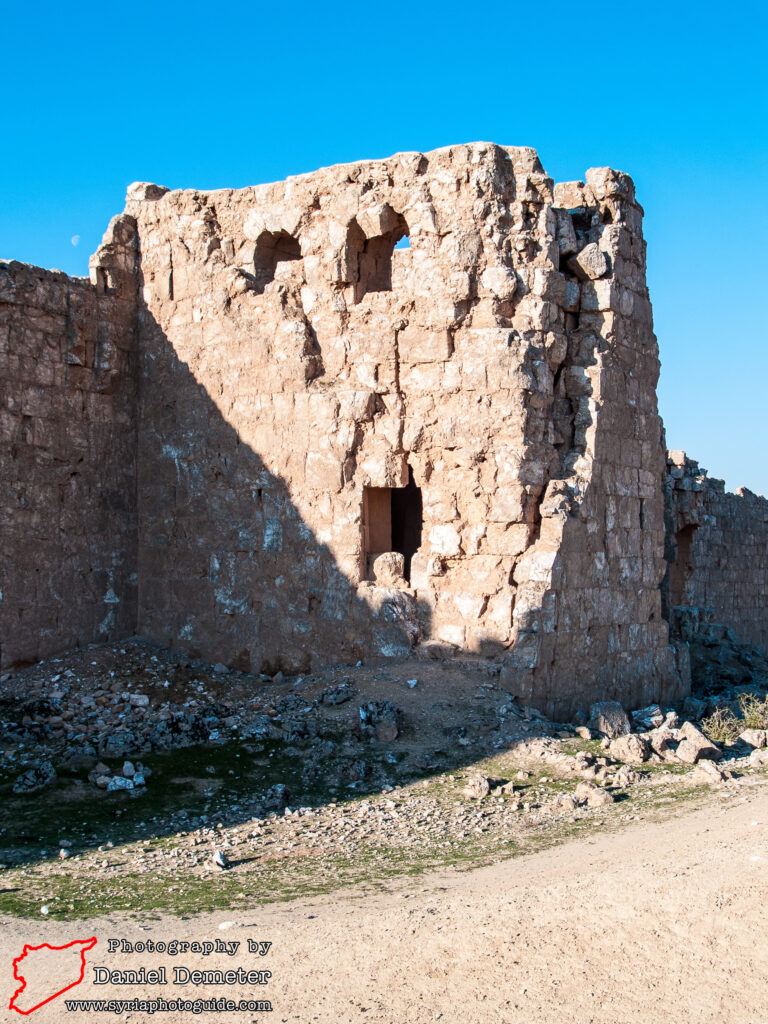
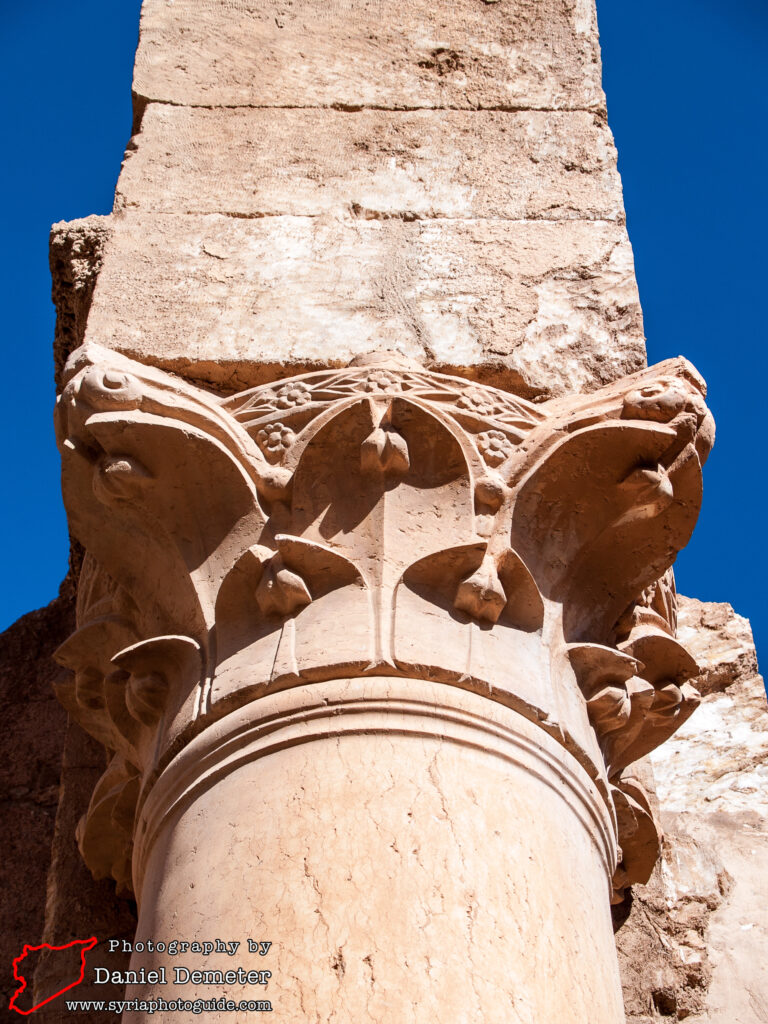
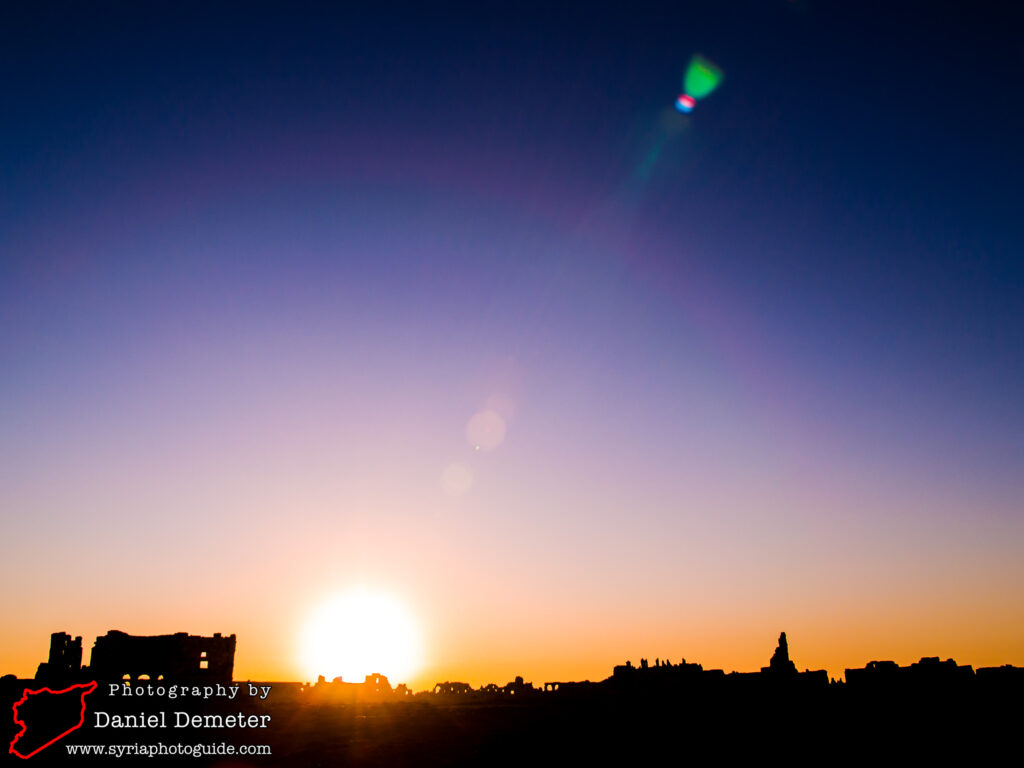
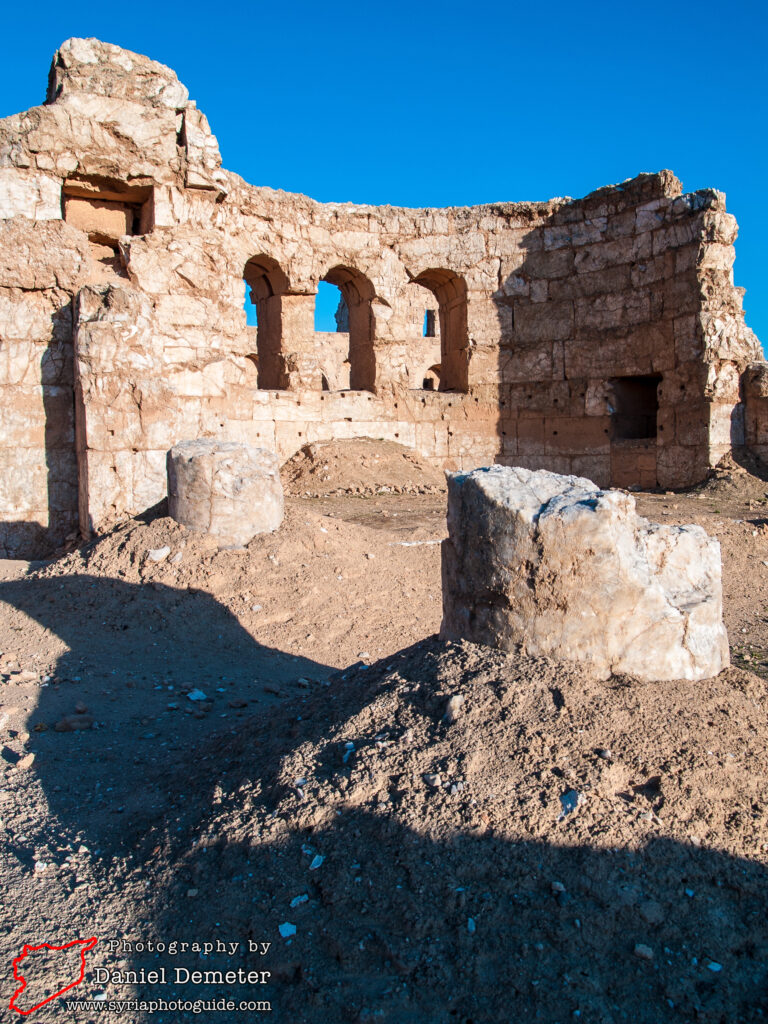
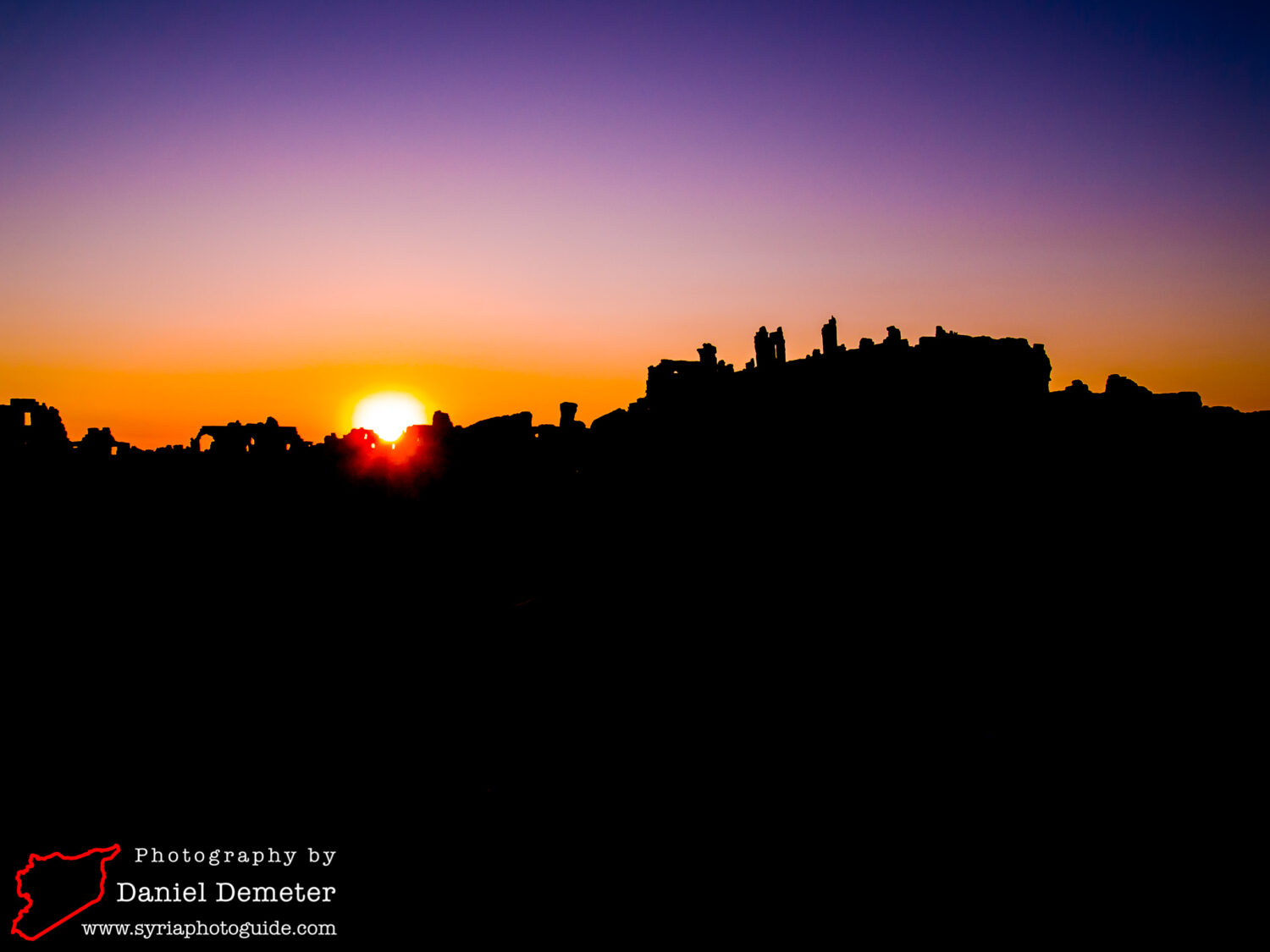
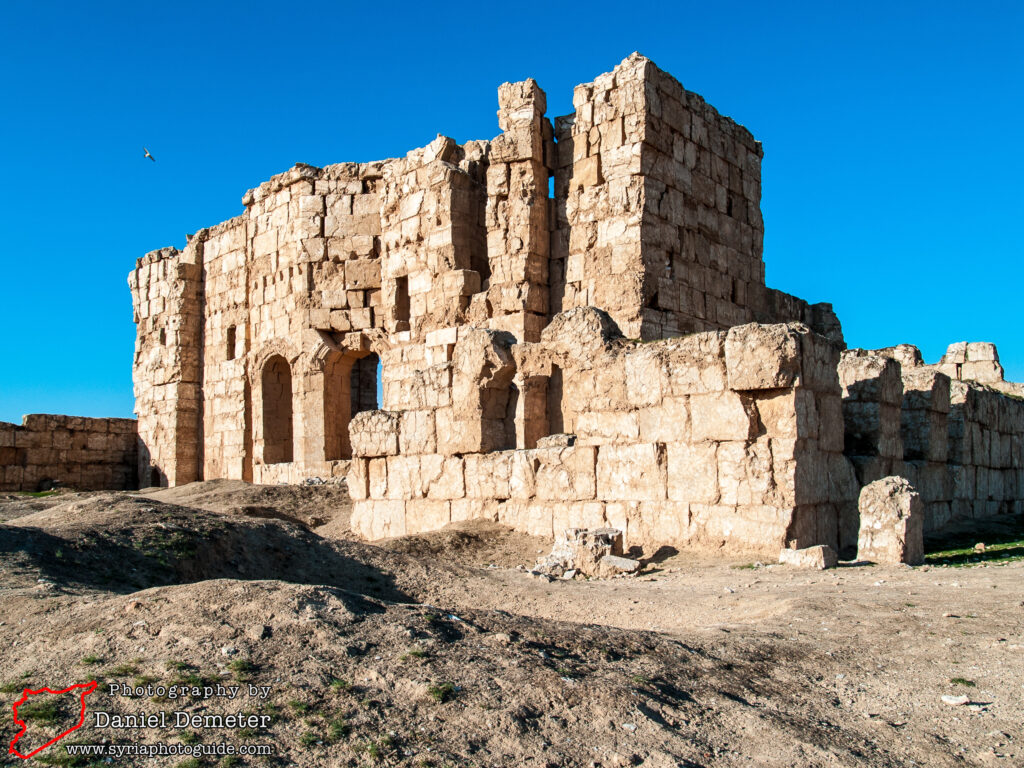
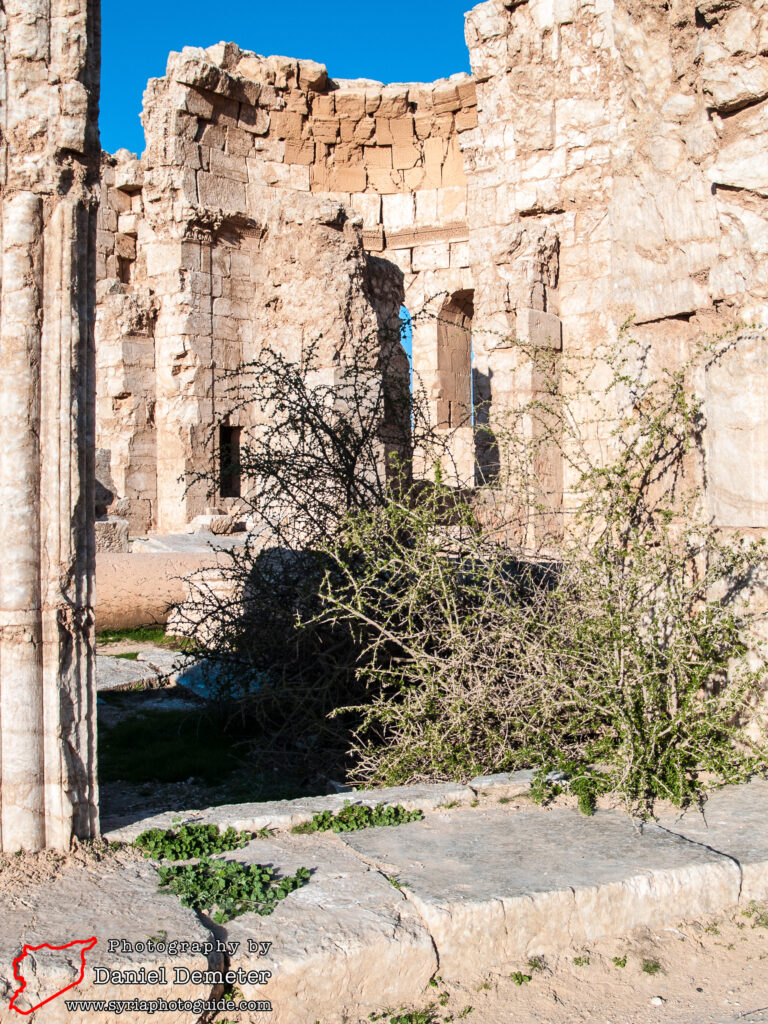
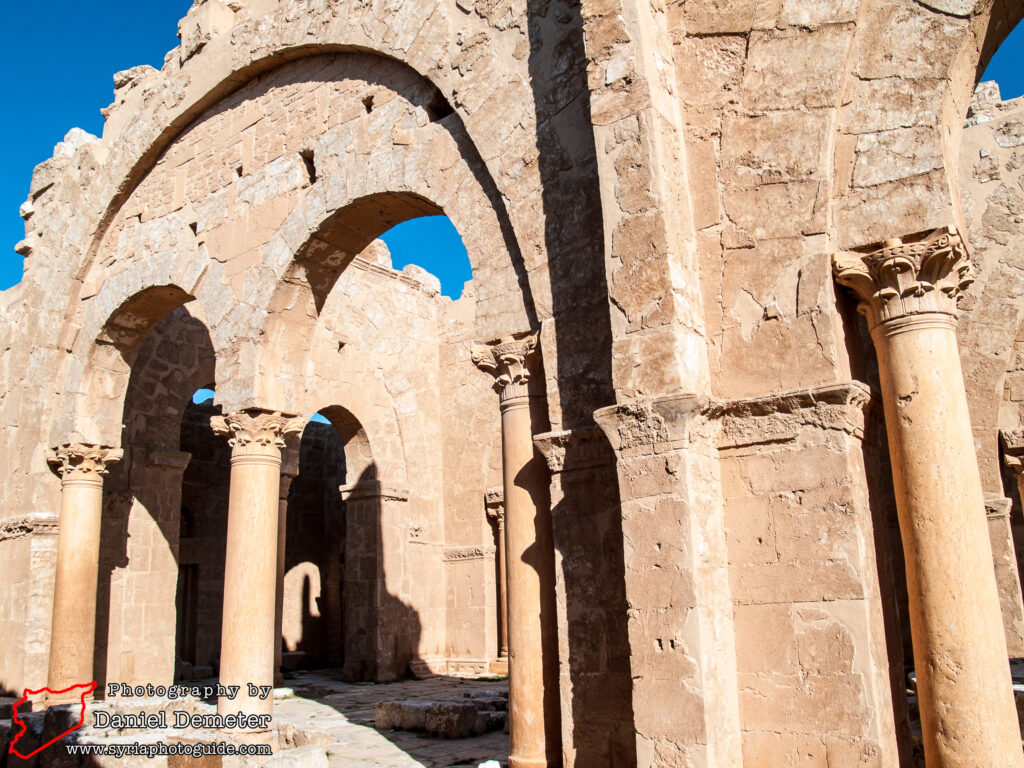
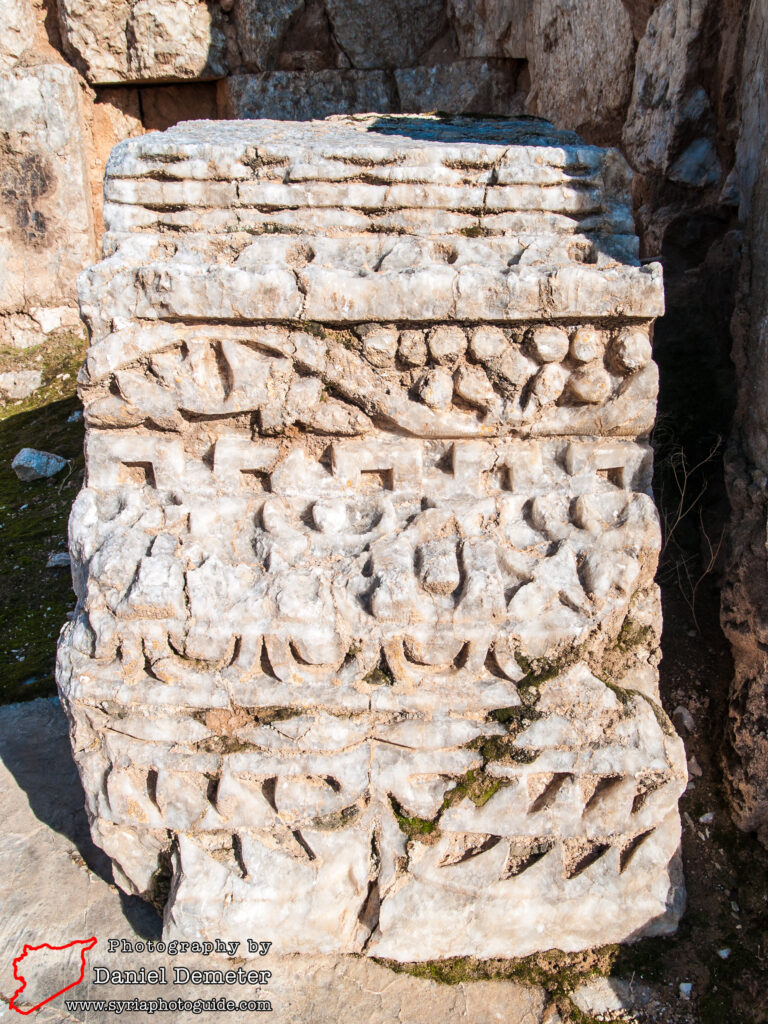
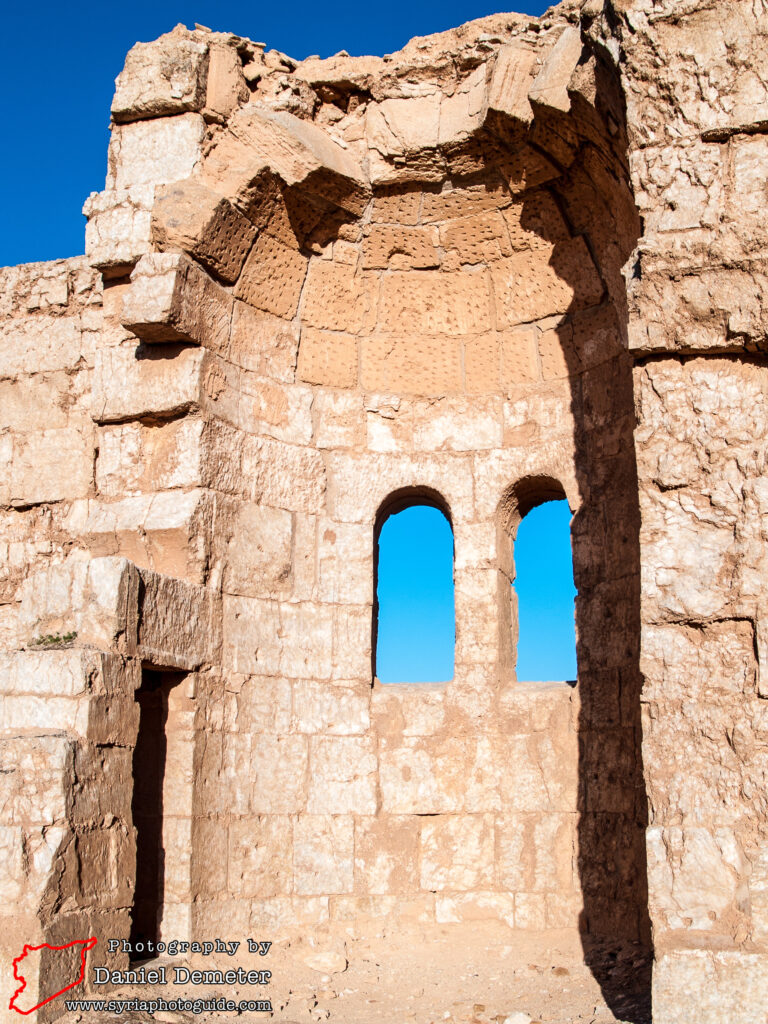
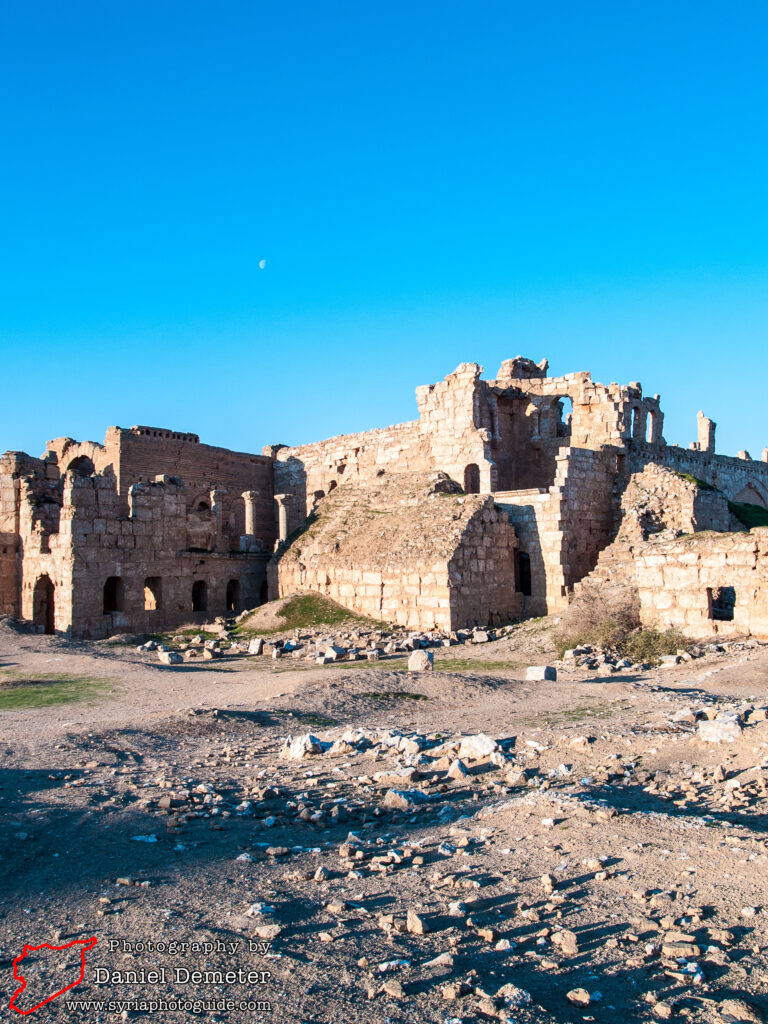
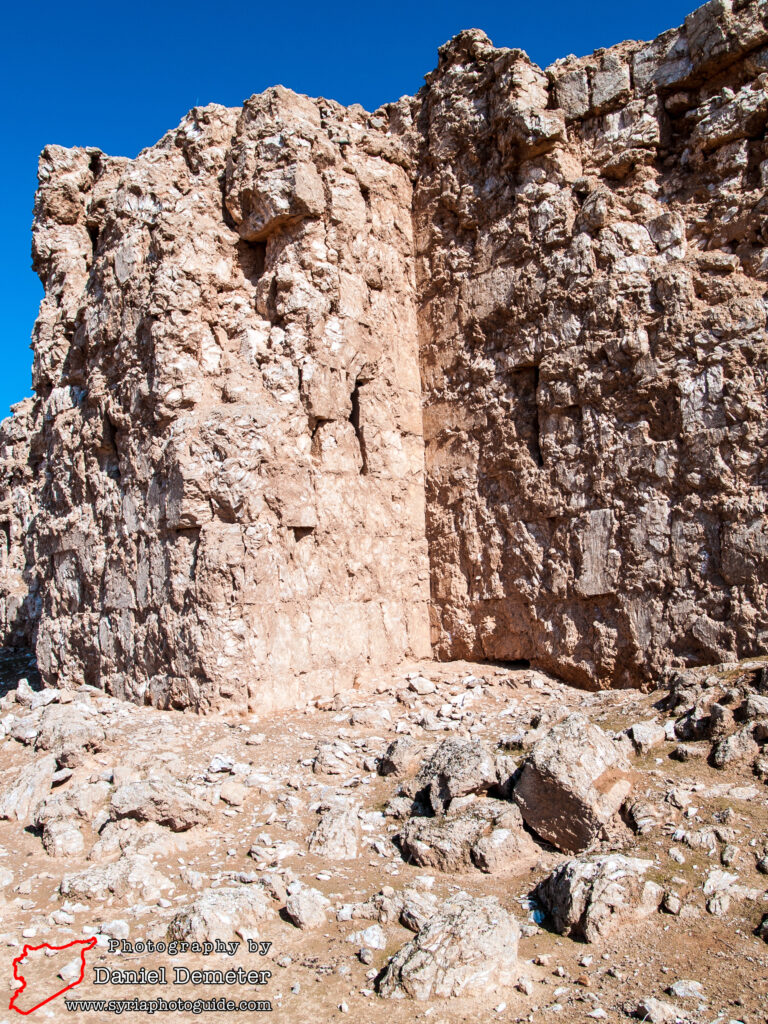
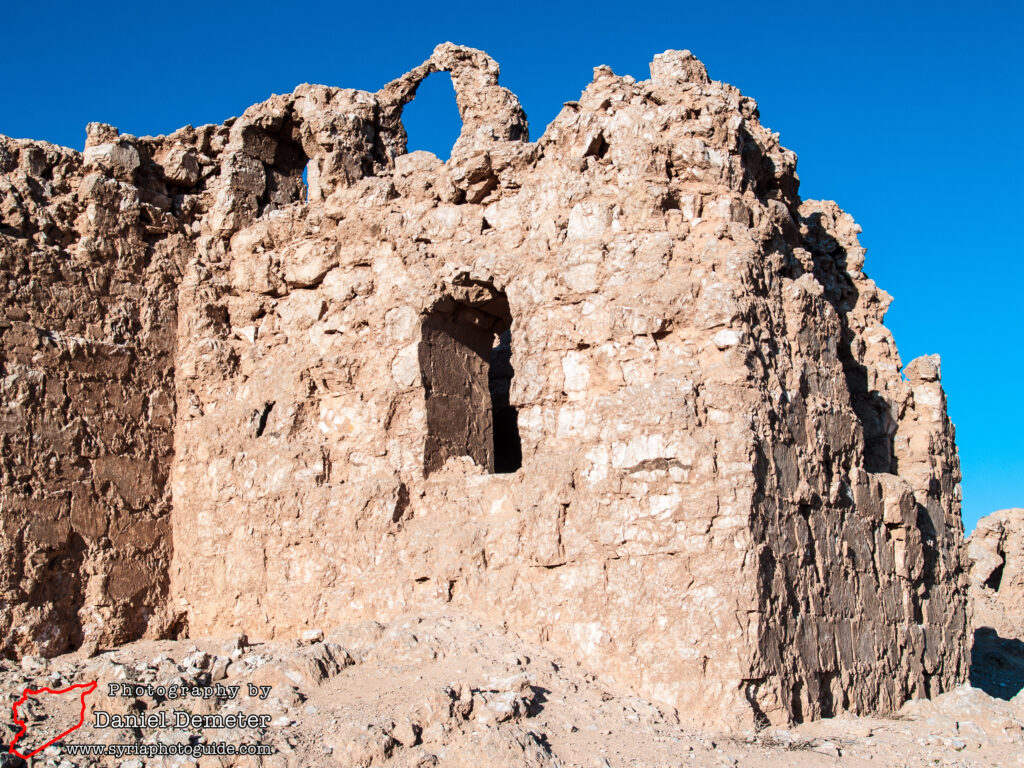
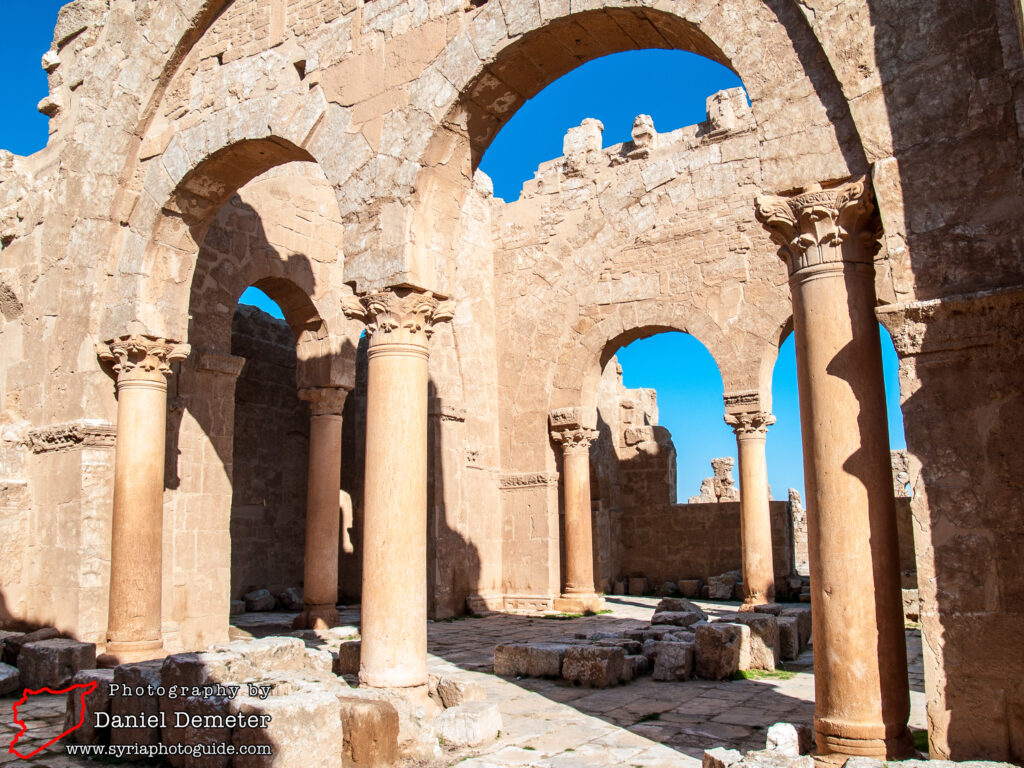
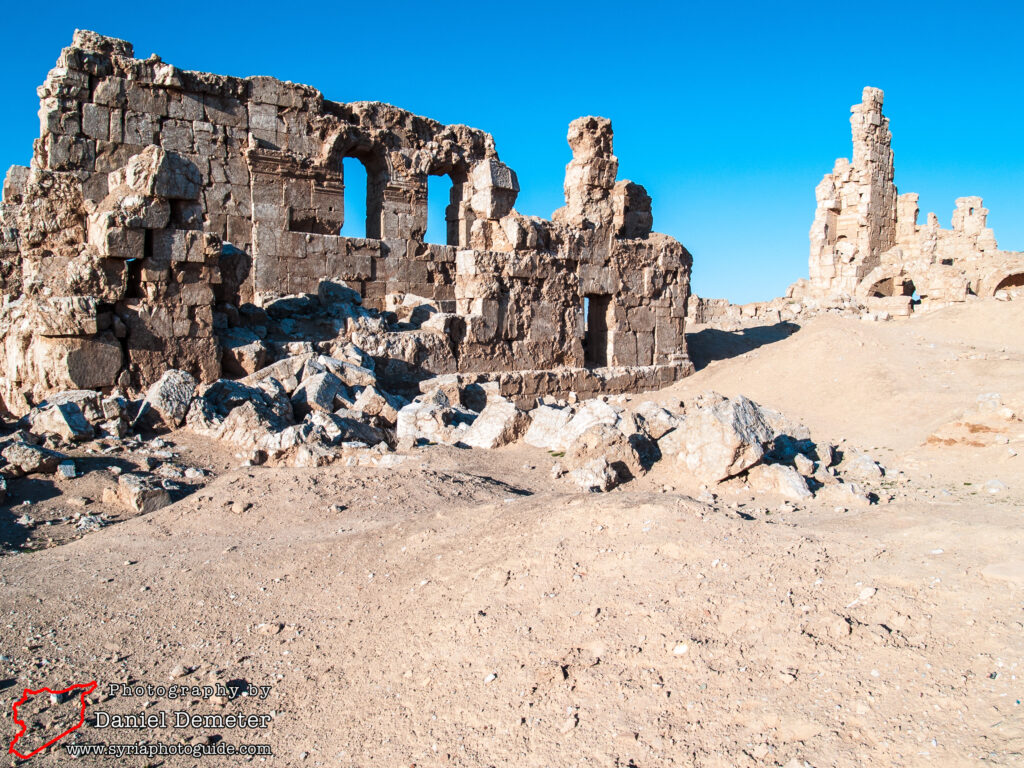
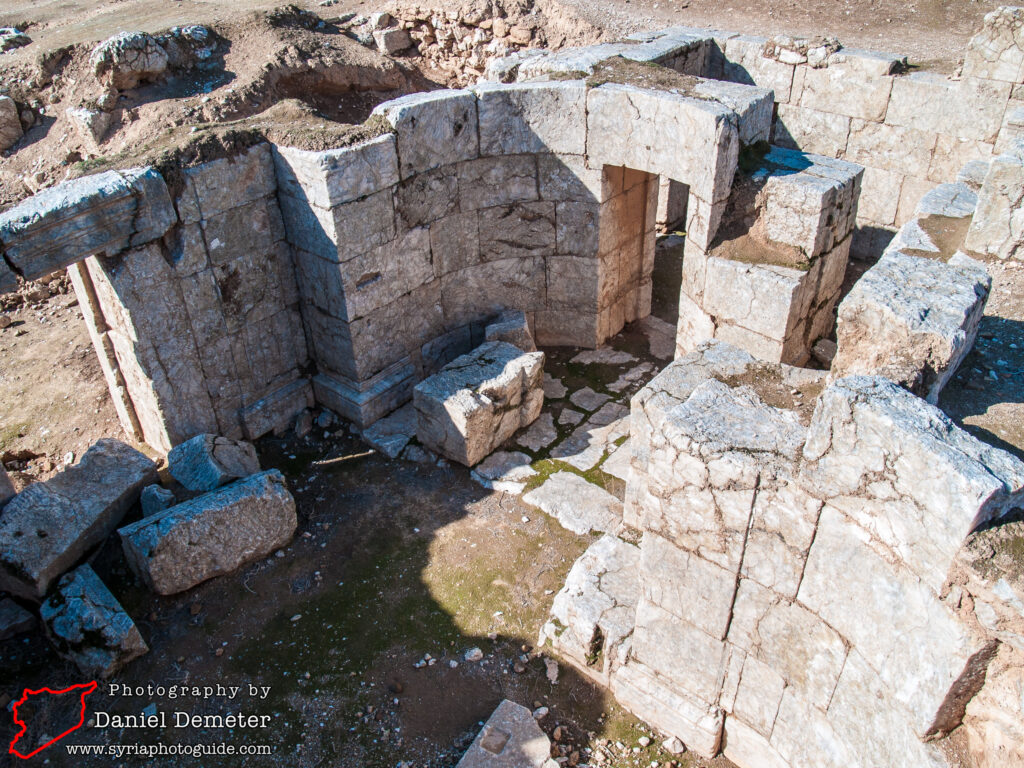
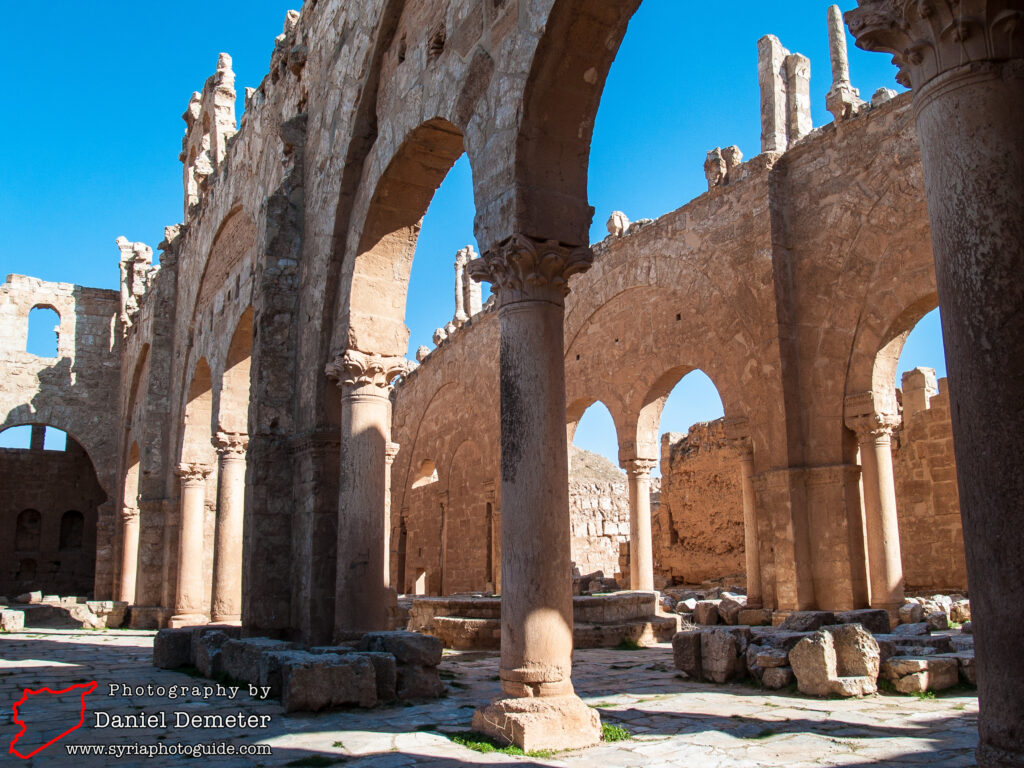
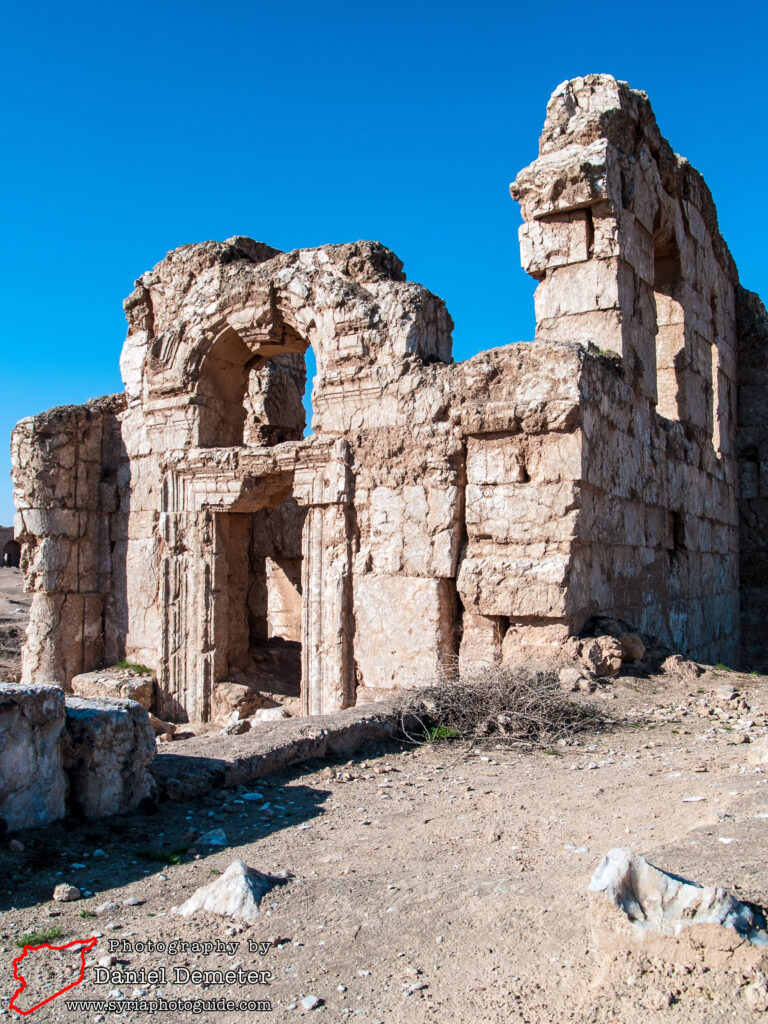
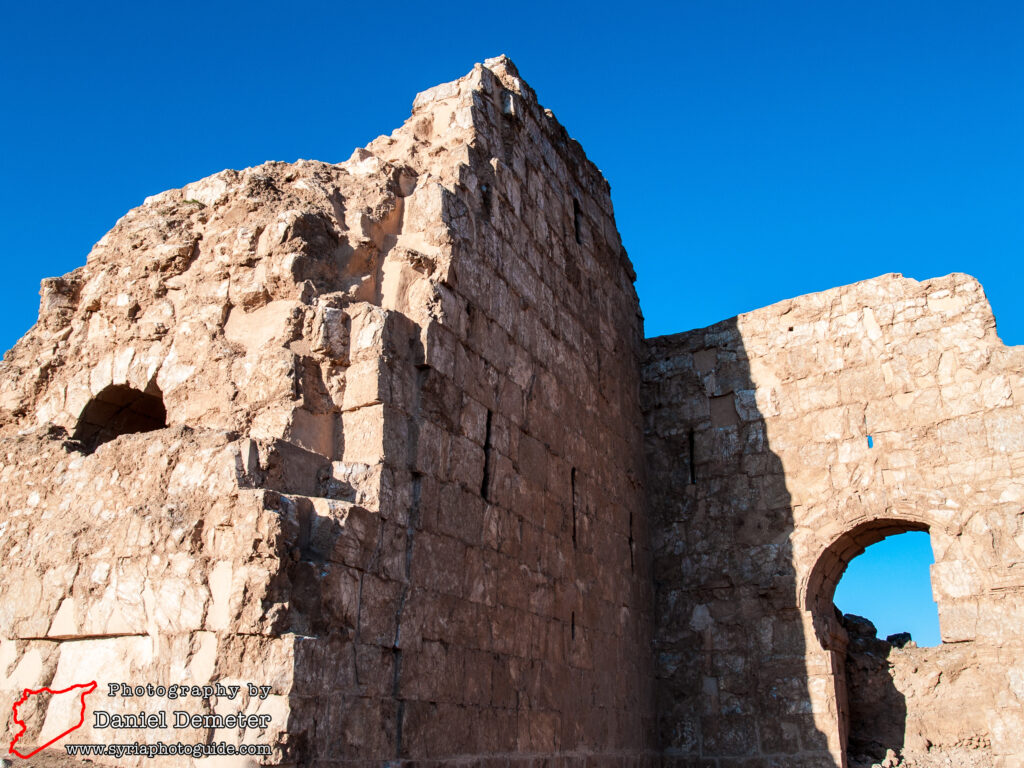
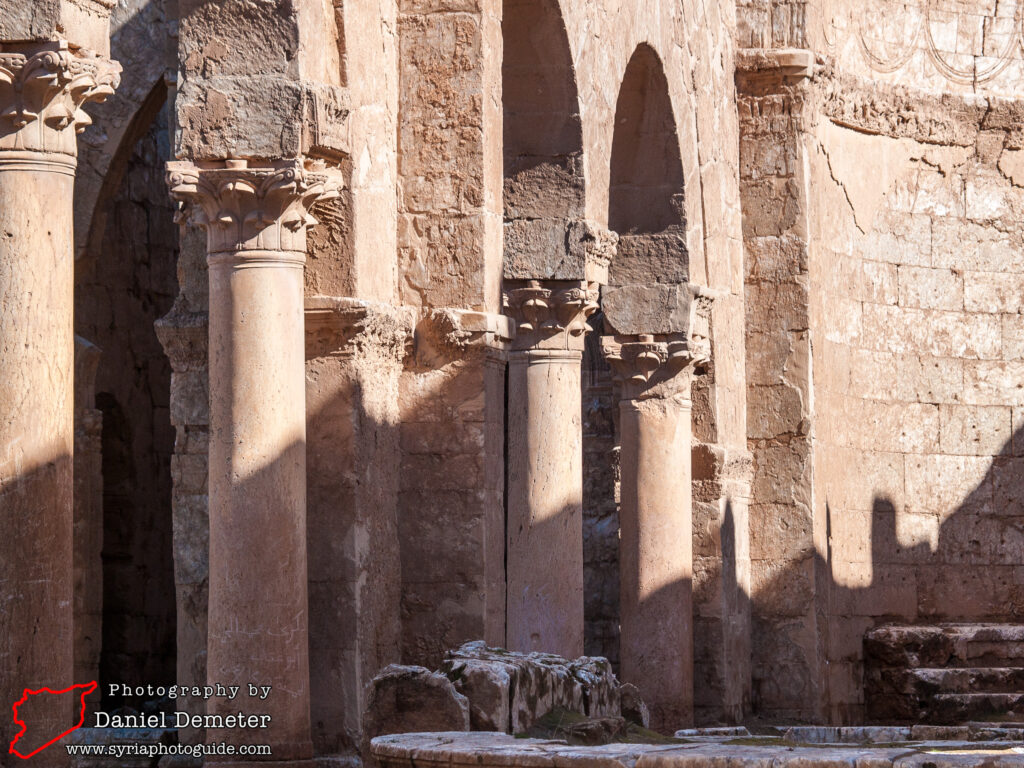
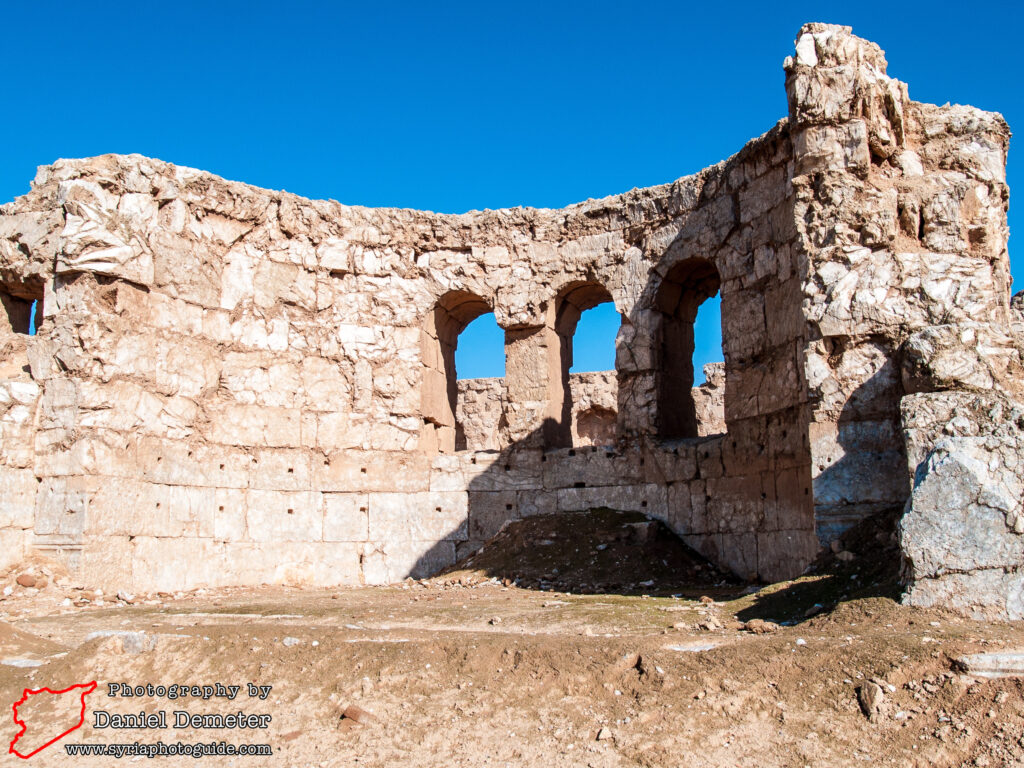
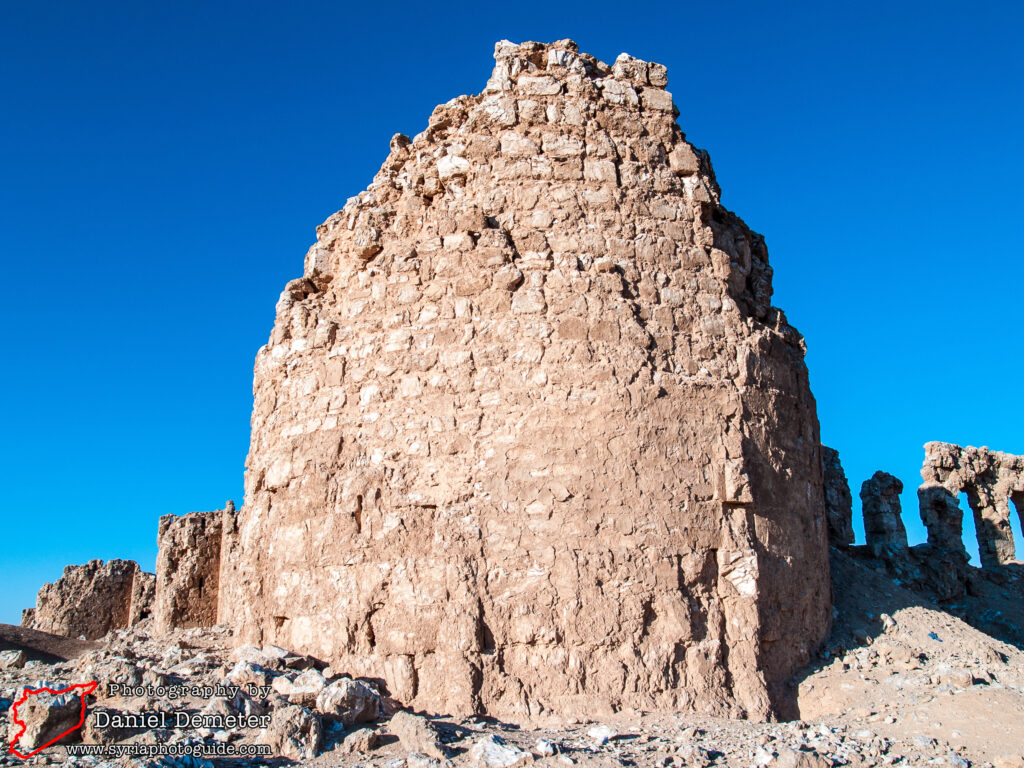
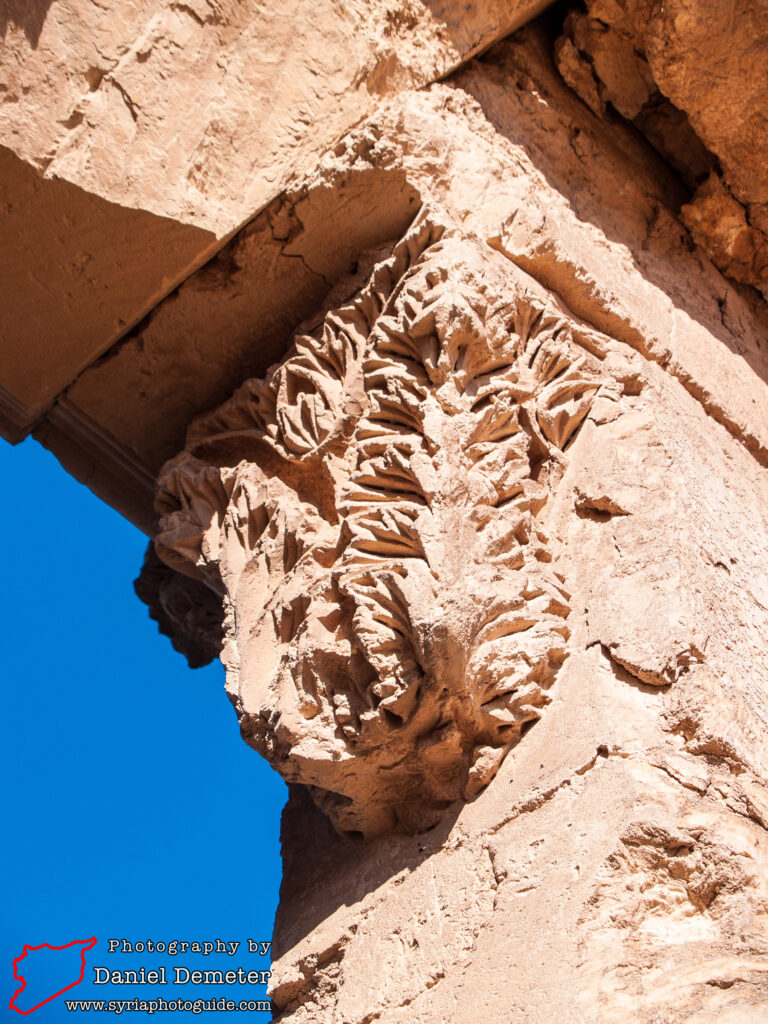
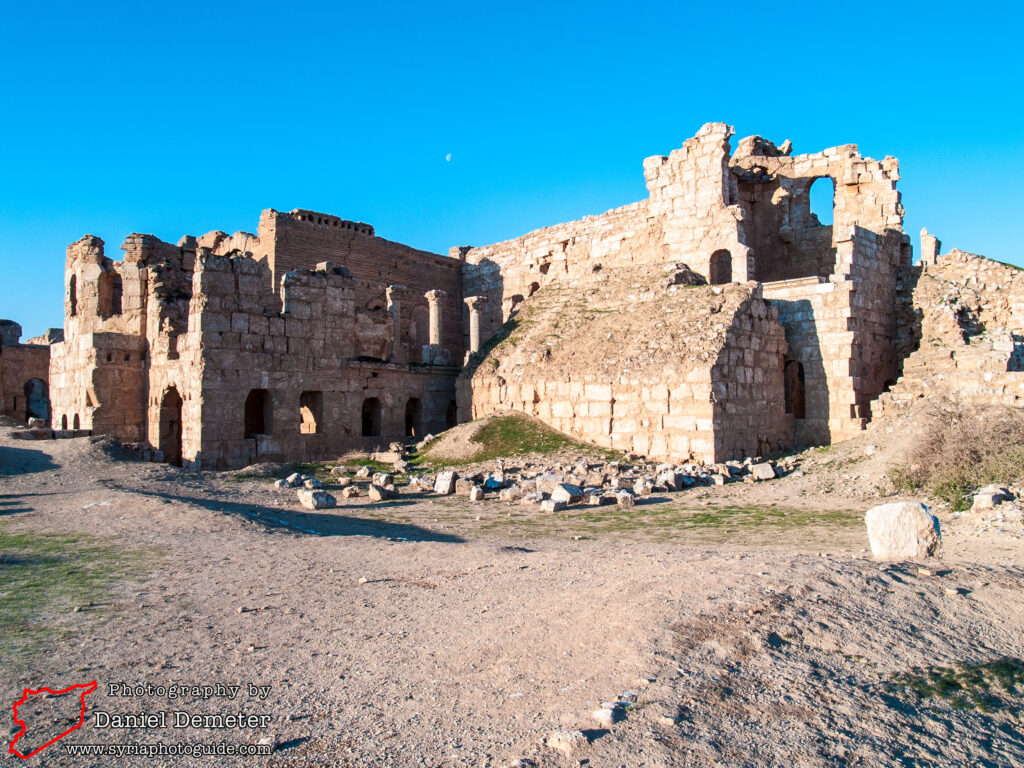
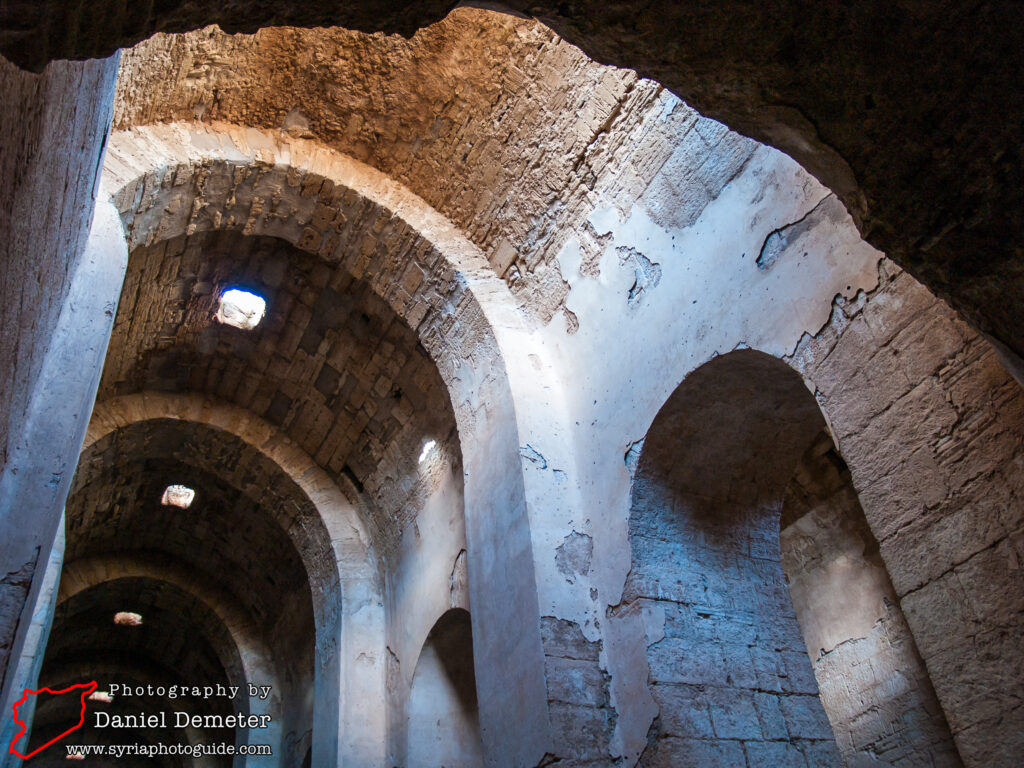
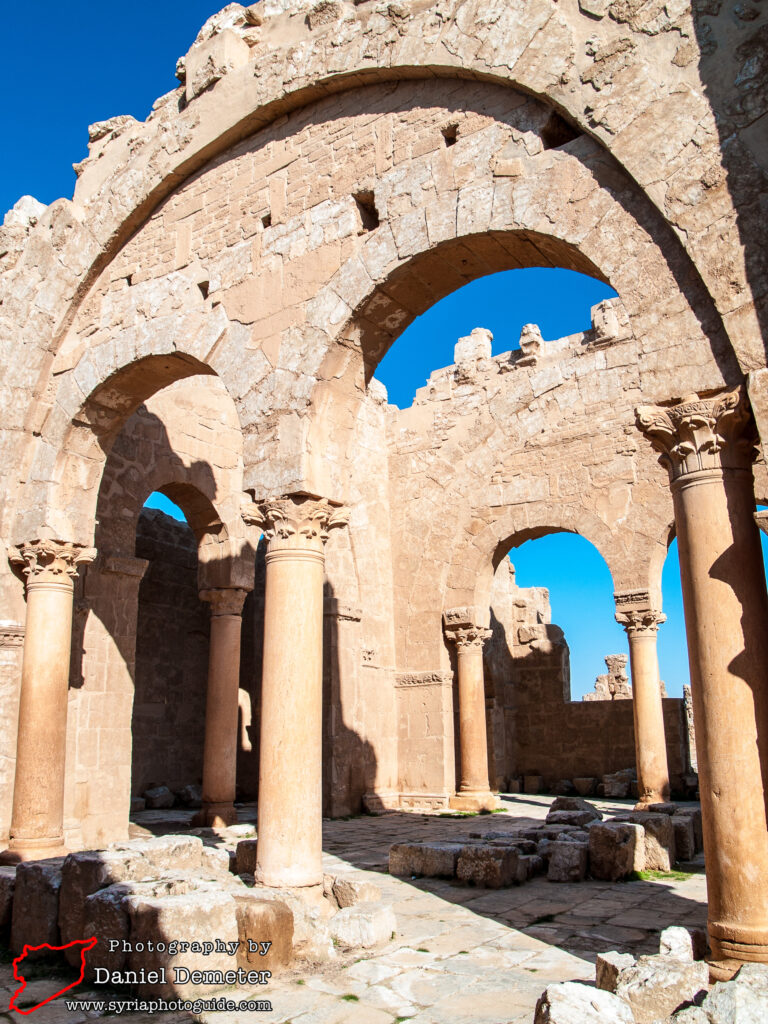
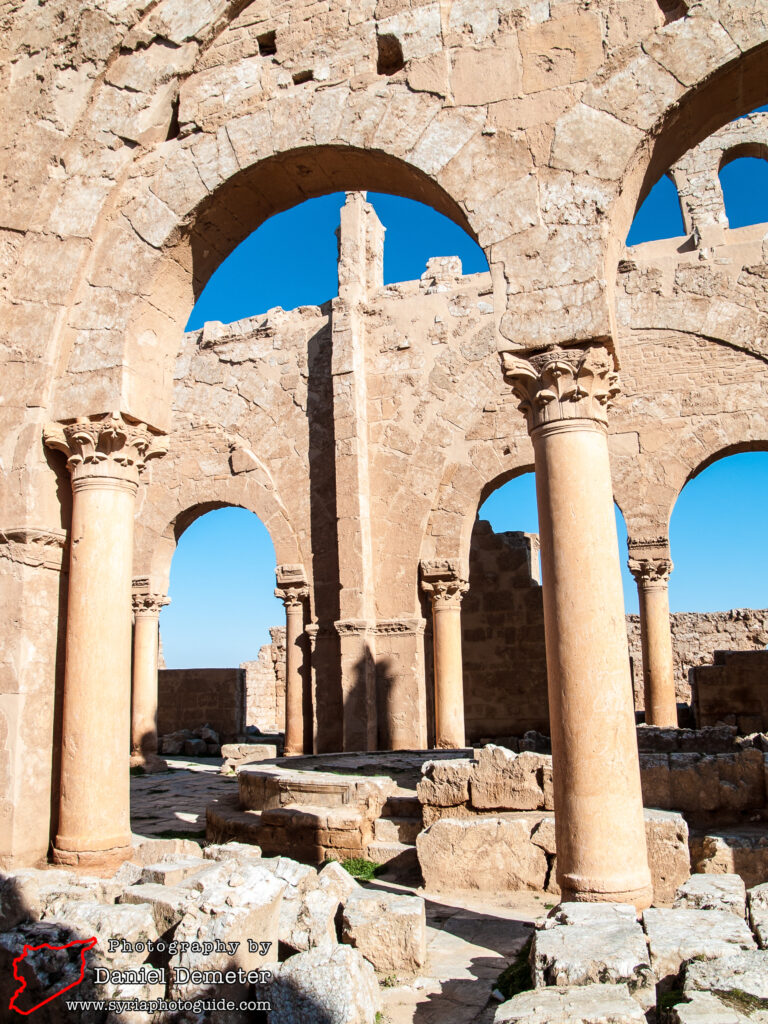
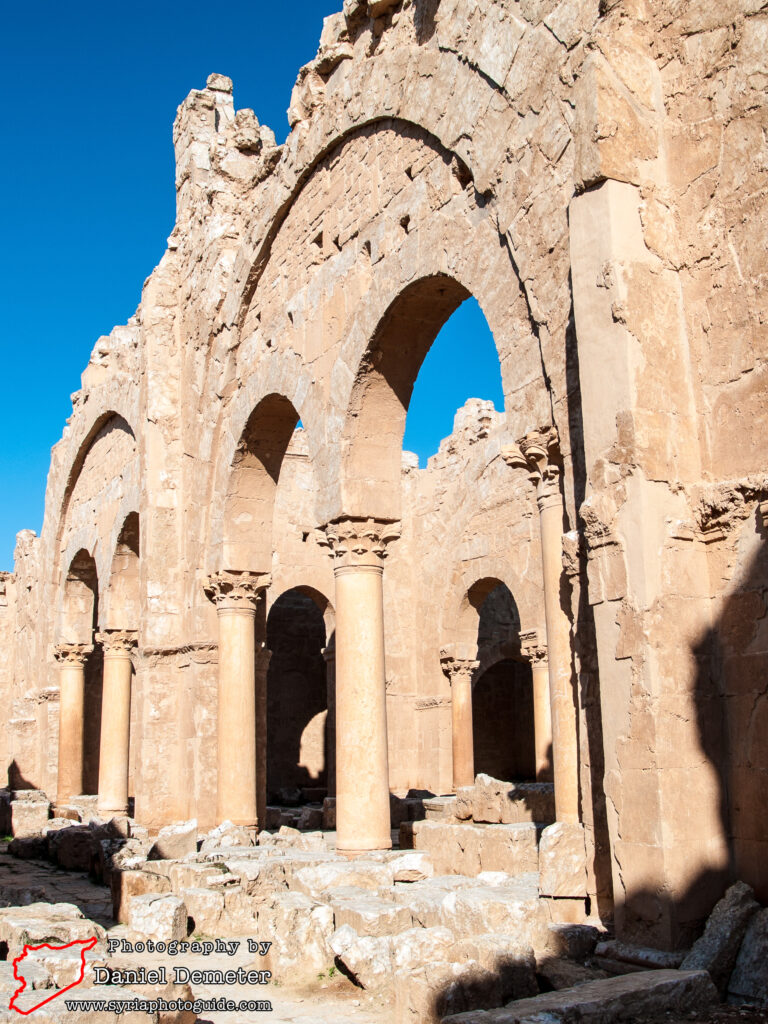
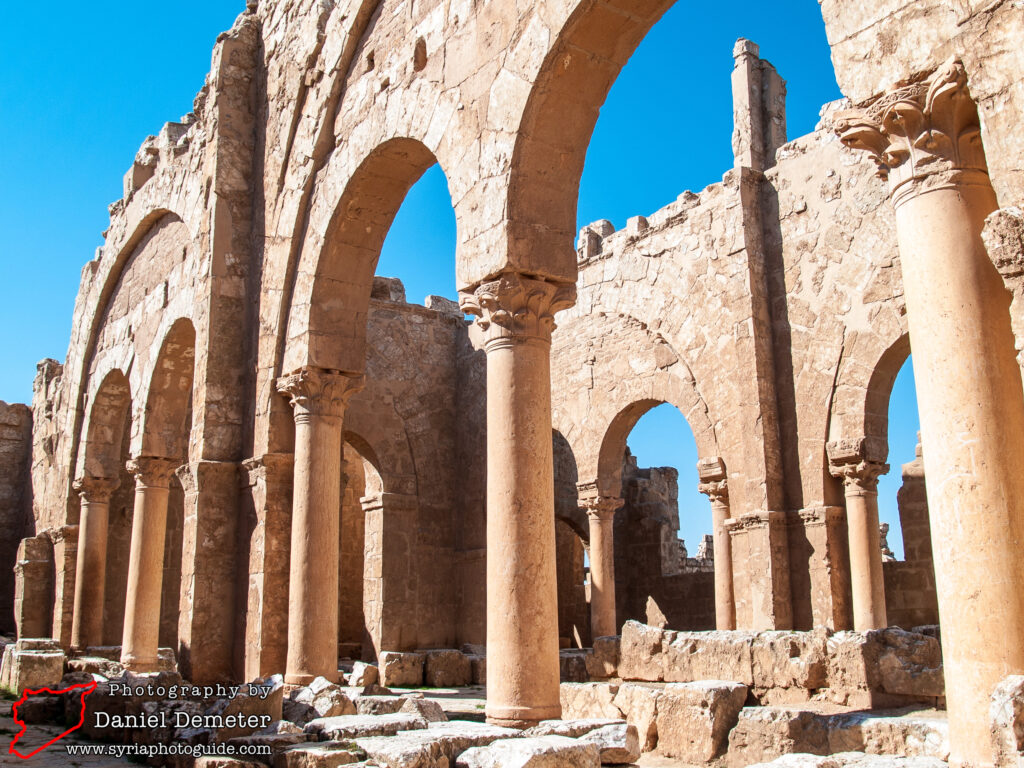
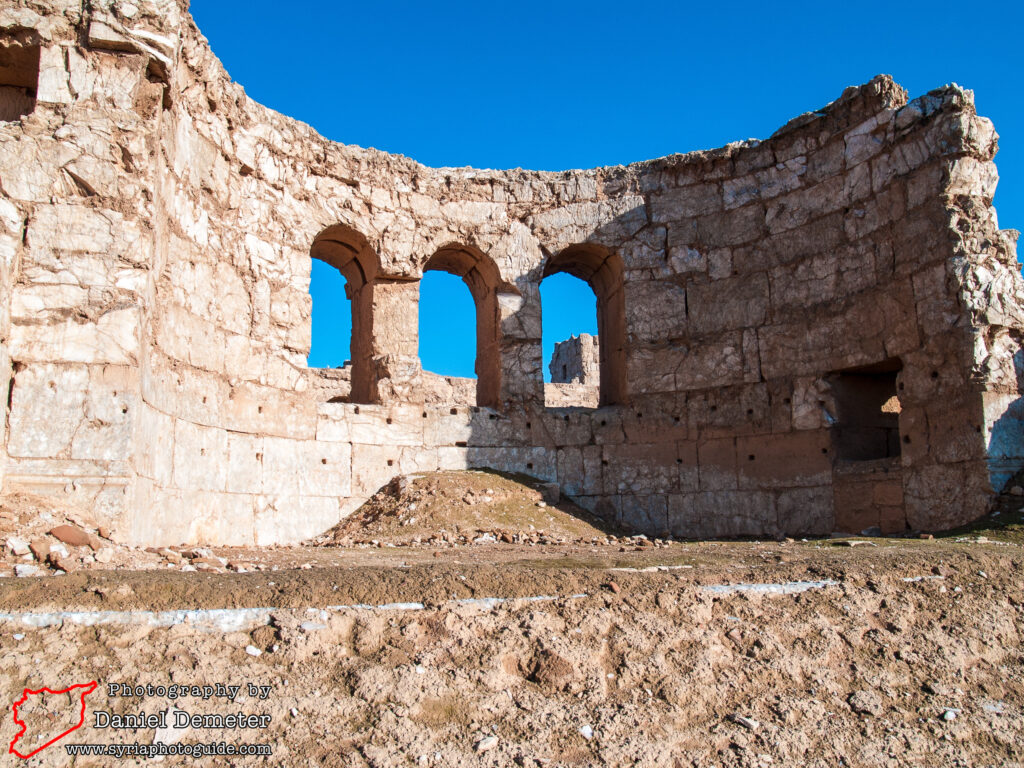
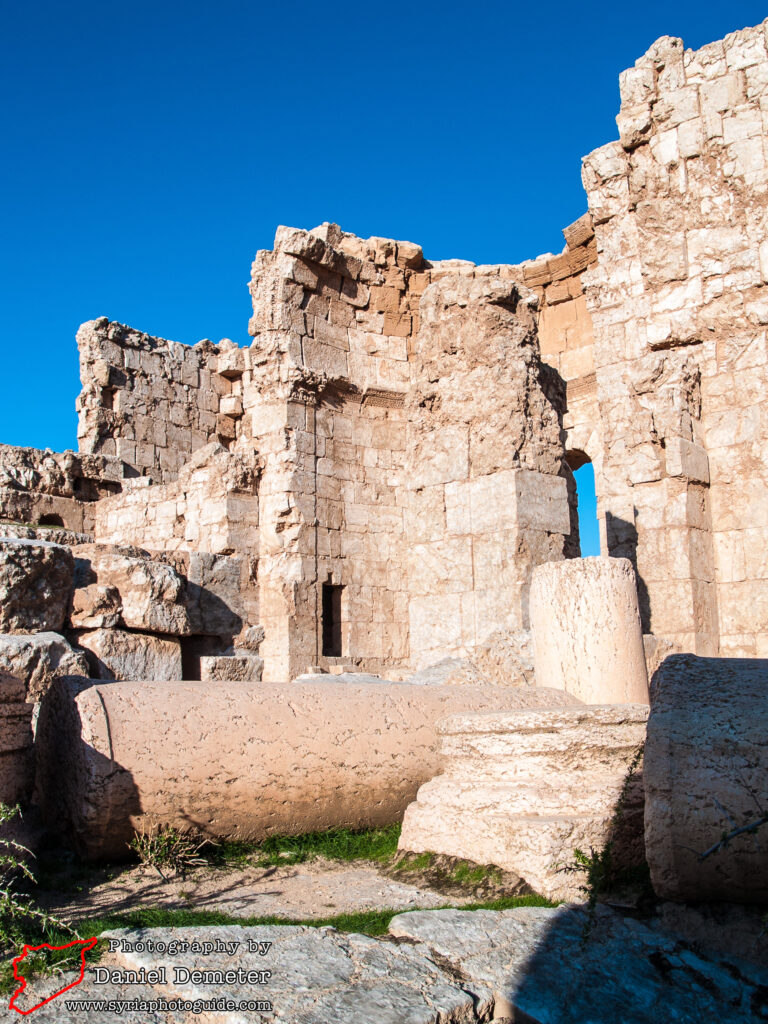
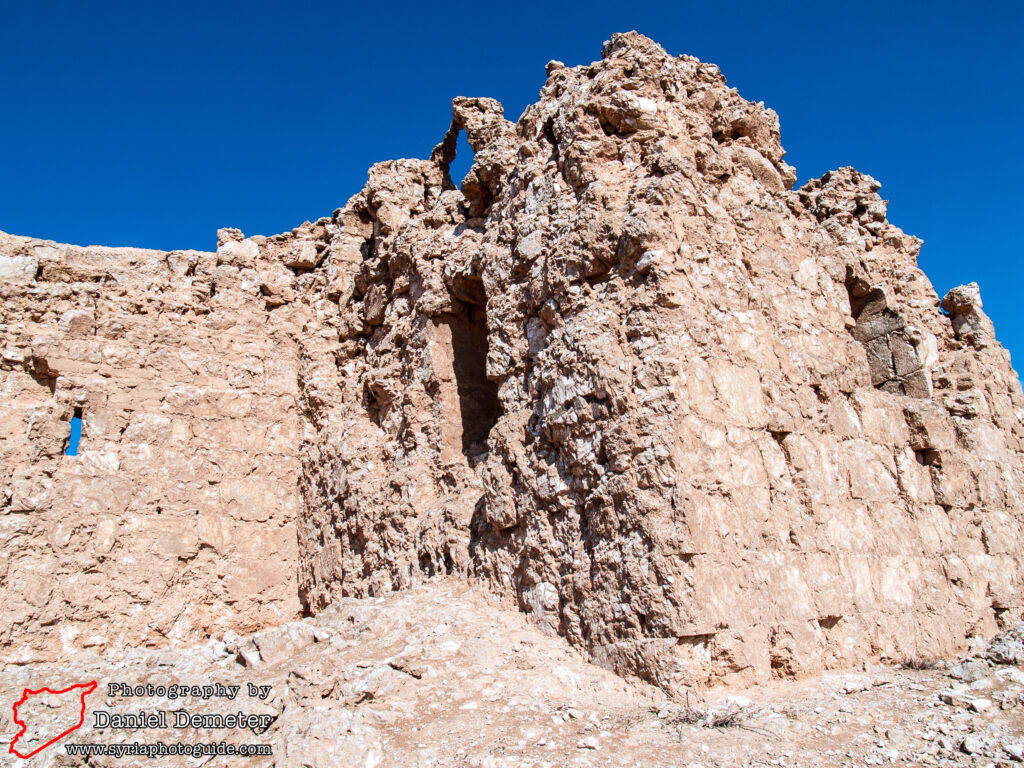
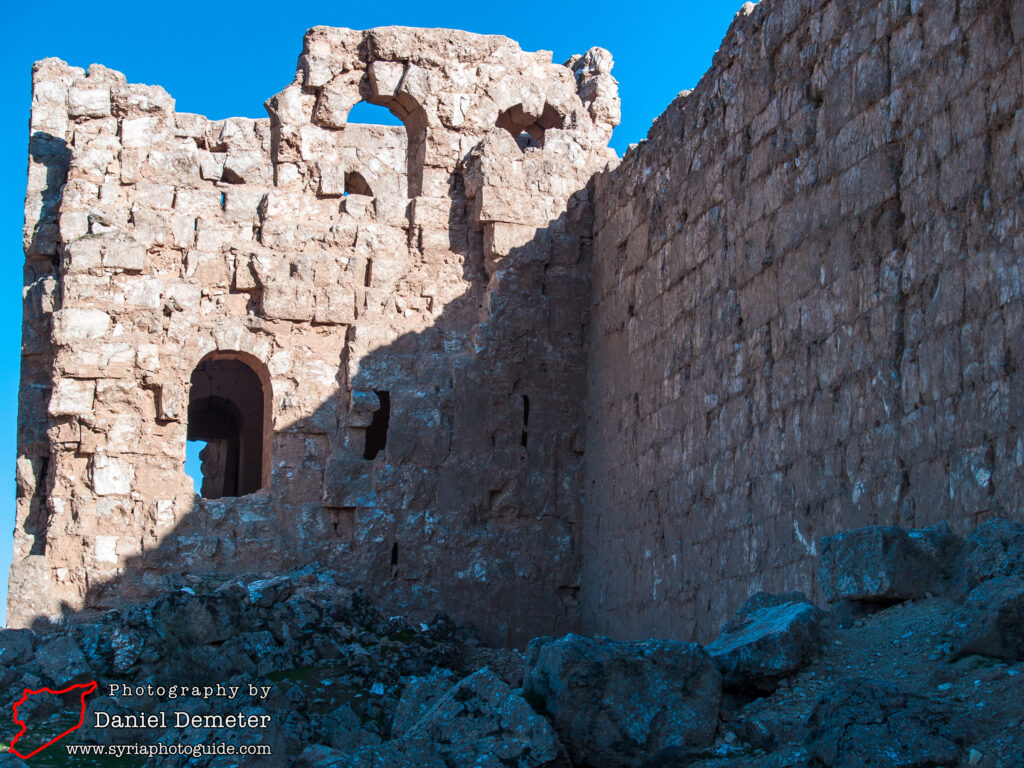
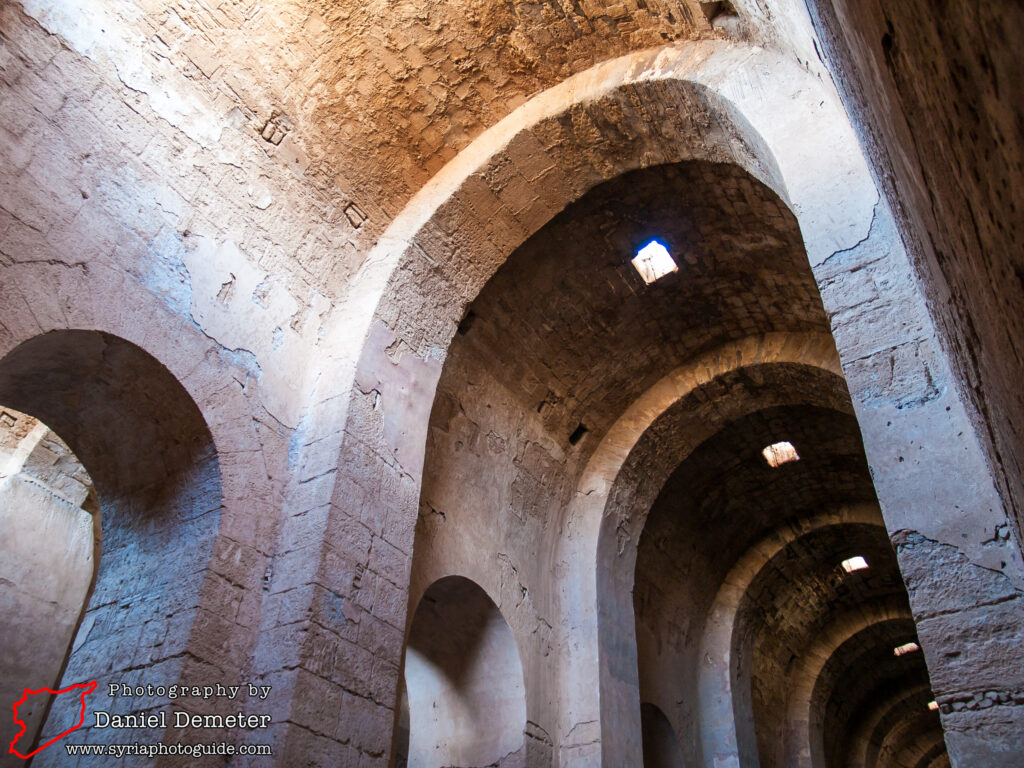
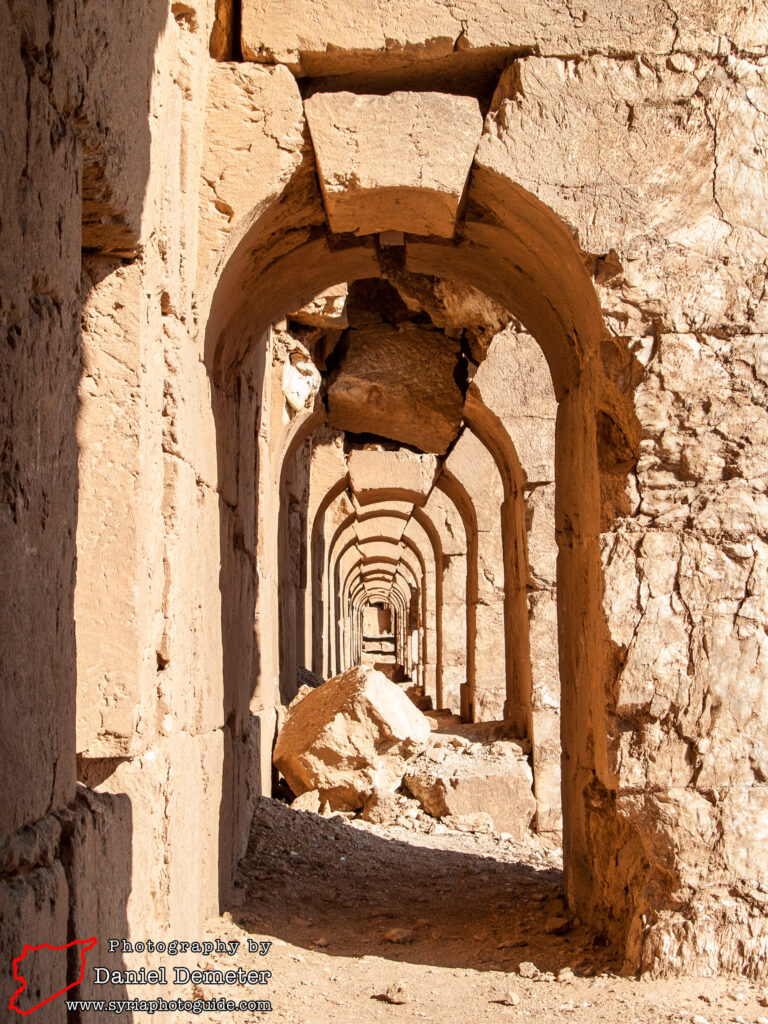
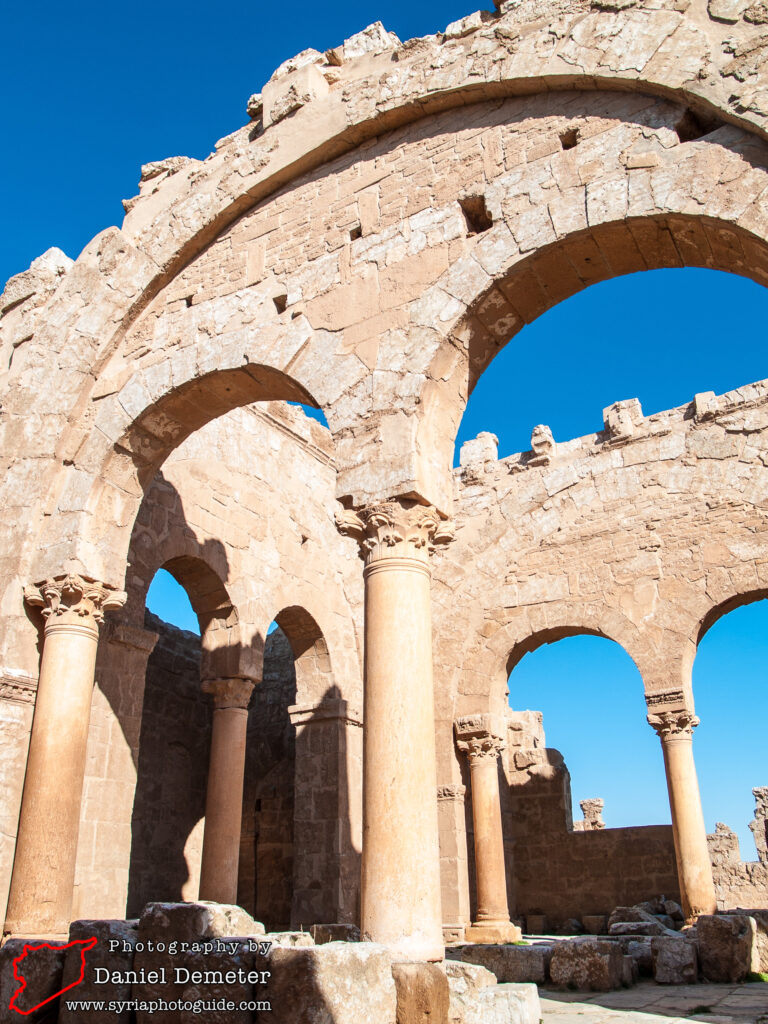
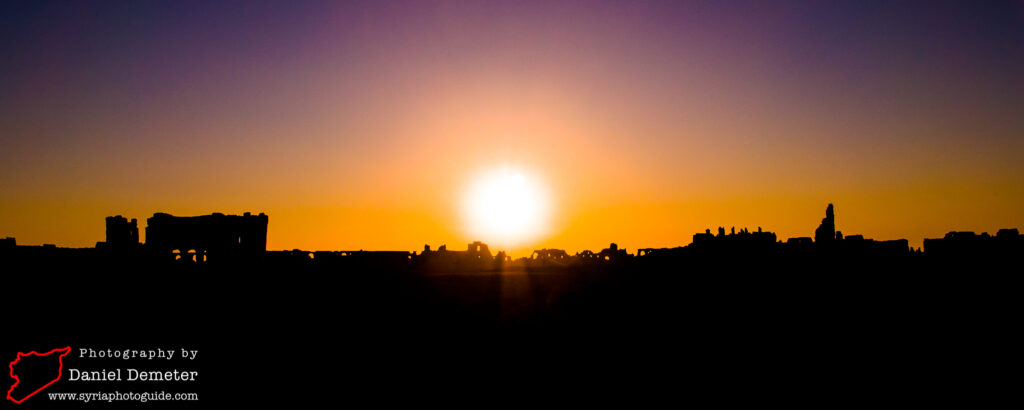
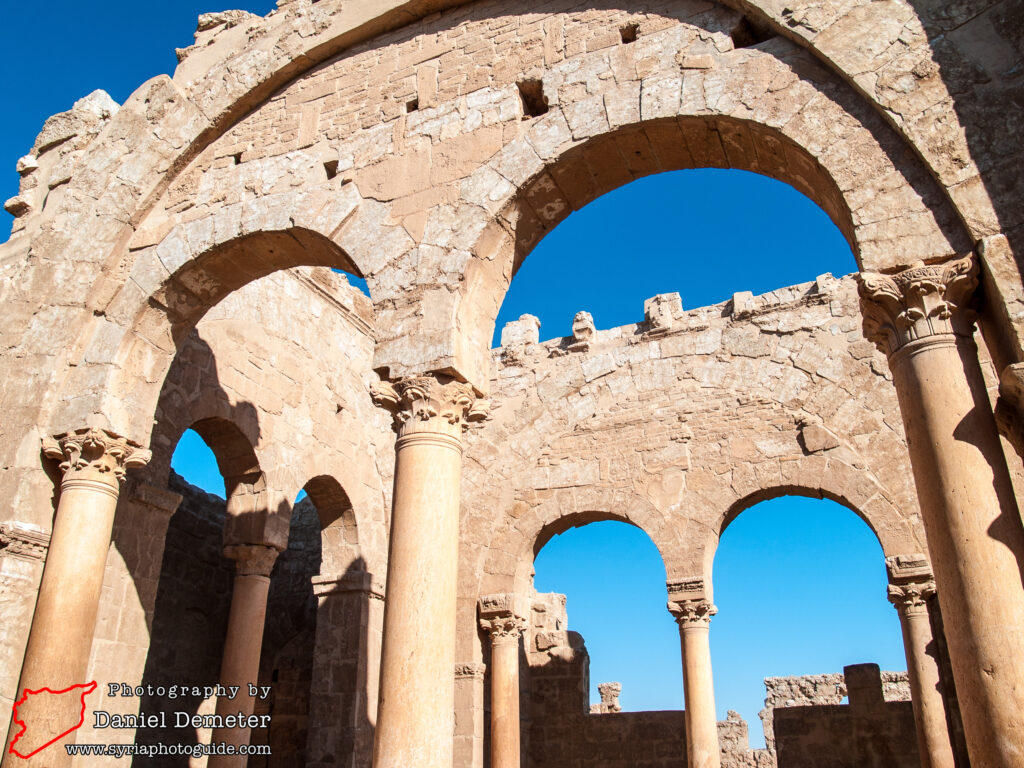
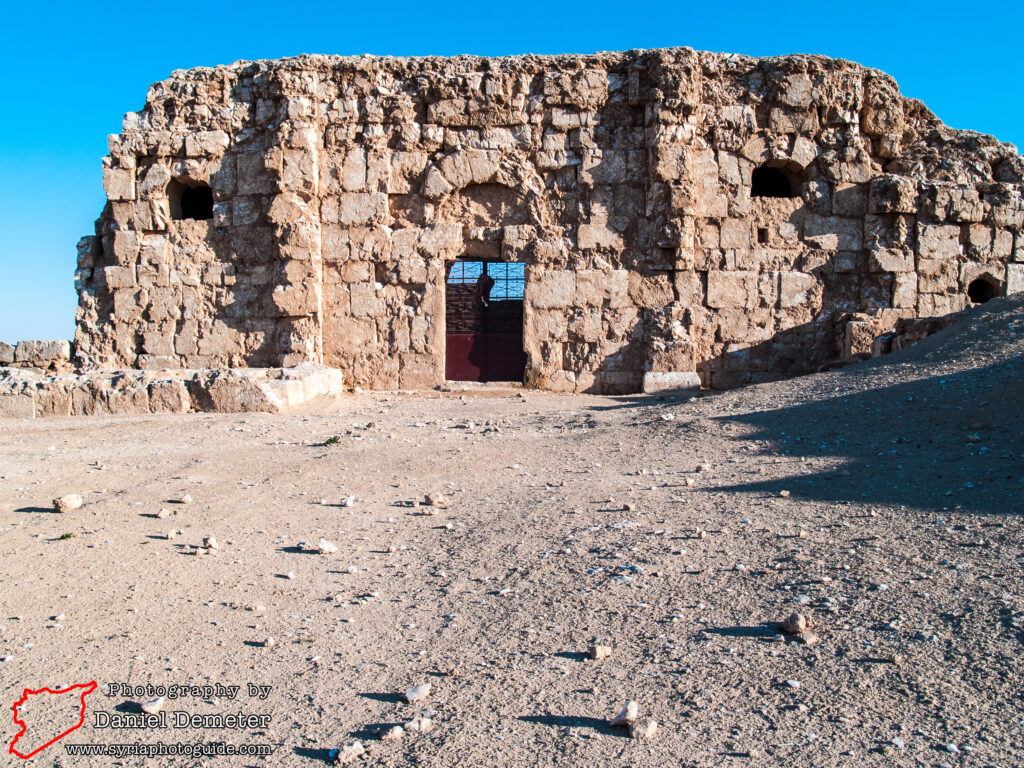
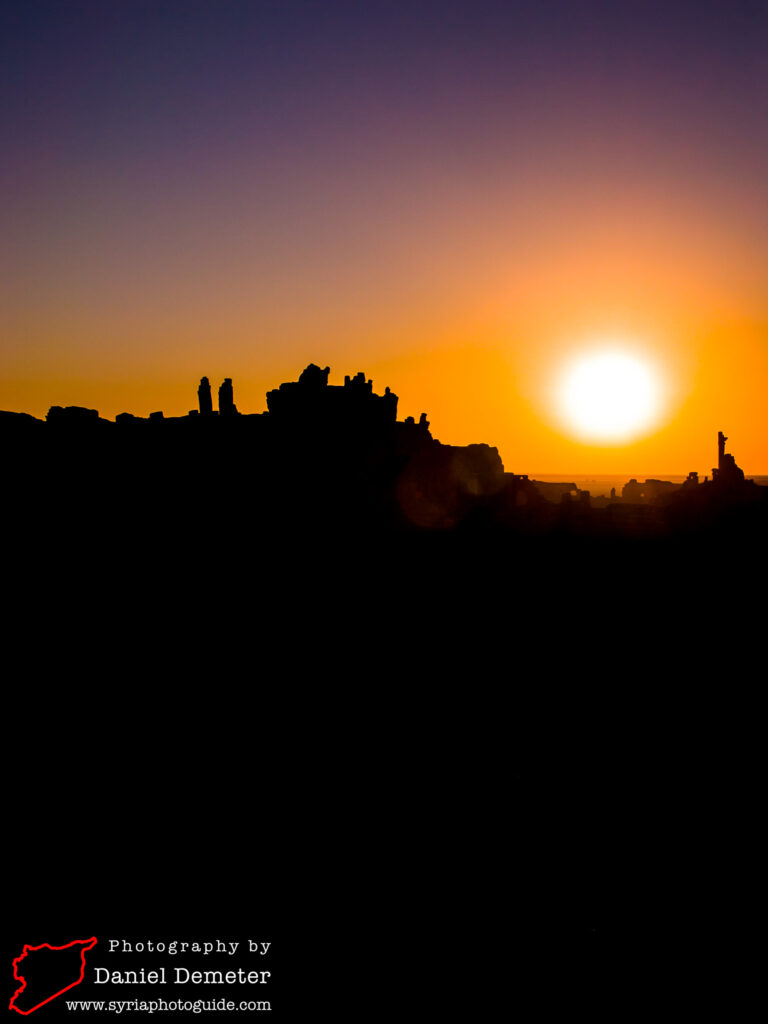
Getting There: al-Rasafeh (الرصافة) is located about fifty-five kilometers southwest of al-Raqqa (الرقة), or about two hundred kilometers southeast of Aleppo (حلب). Reaching the site poses a challenge, as public transportation travels no closer than the village of al-Mansoura (المنصورة), located on the Aleppo (حلب) to Deir al-Zur (دير الزور) highway. There are drivers for hire from al-Mansoura (المنصورة) that will take you to the site, or you can attempt to hitchhike from here. Note that this is a very remote region, and transportation is infrequent. If hiring a driver, it is probably best to arrange to be picked up at a later time to allow at least a few hours to explore the site.
Coordinates: 35°37’44.53″N / 38°45’29.30″E
Transliteration Variants: al-Rasafa, al-Rasafah, al-Rasafe
Rating: 9.5 / 10
